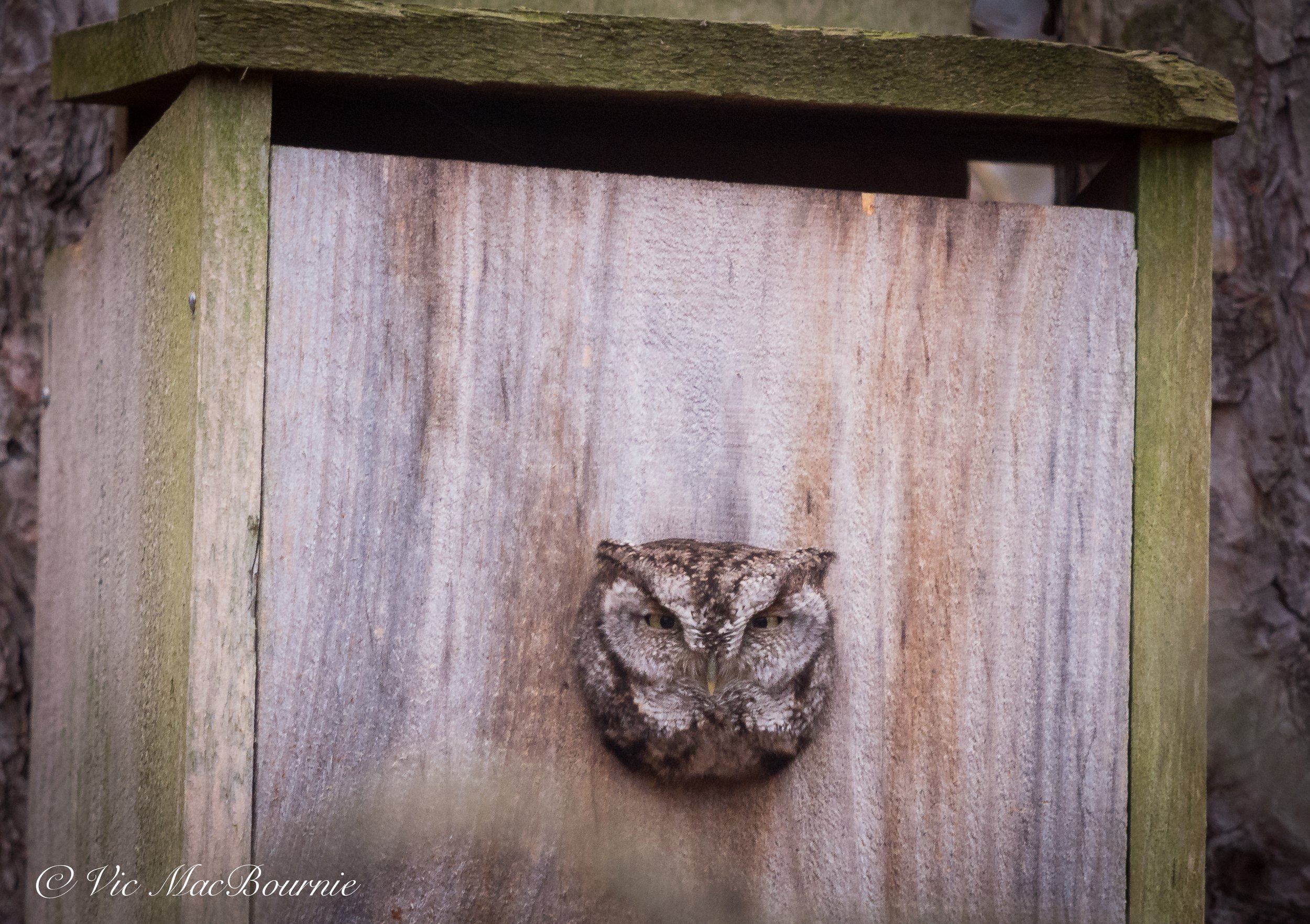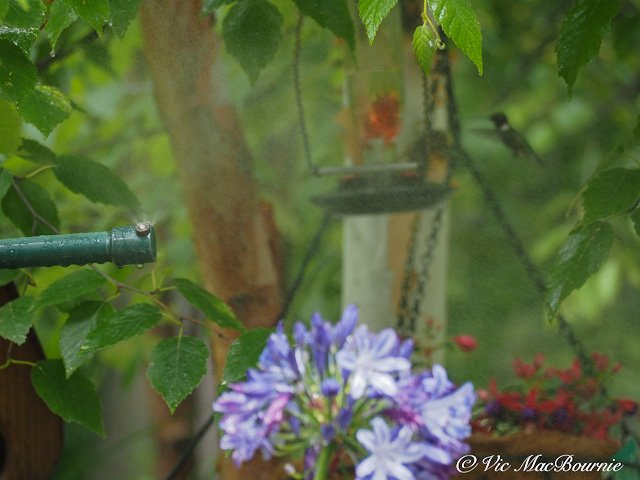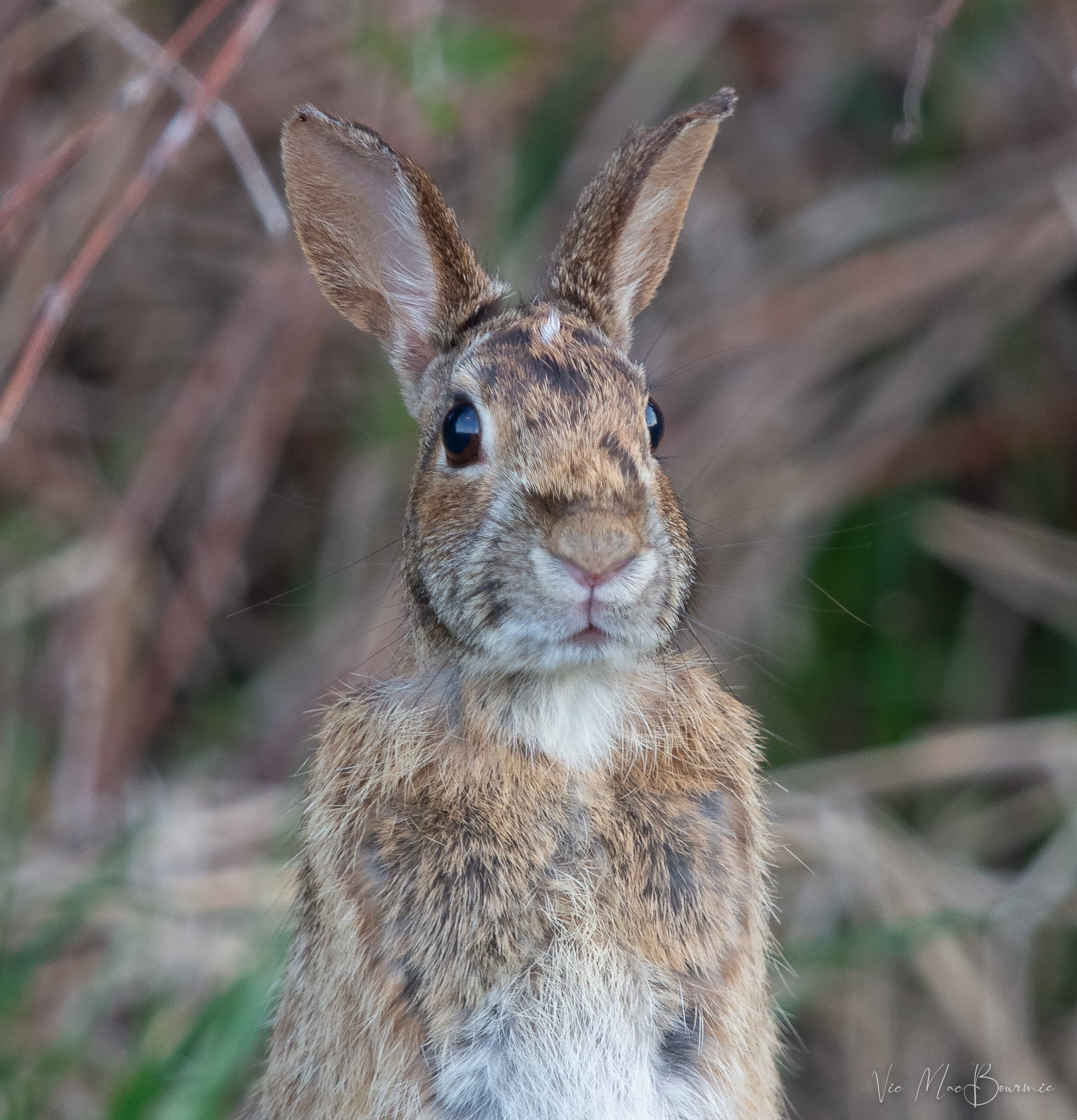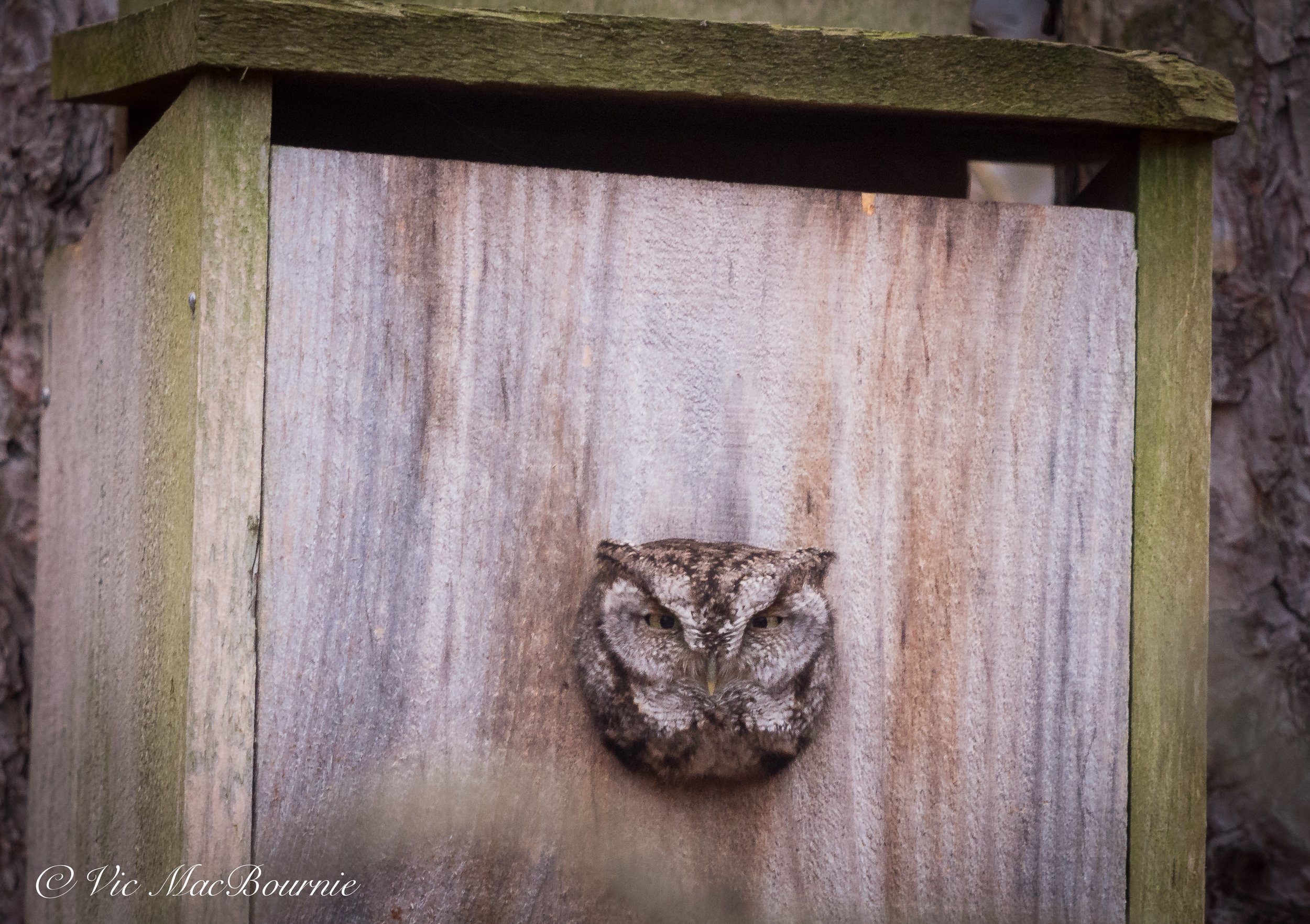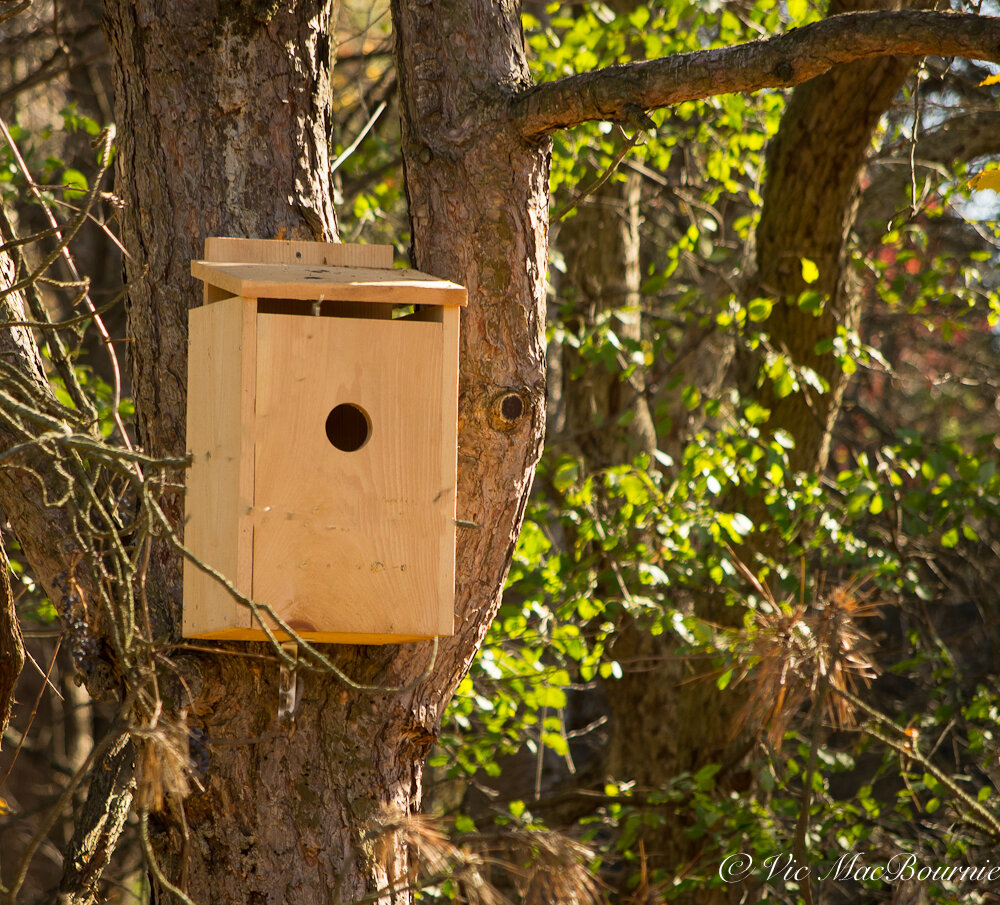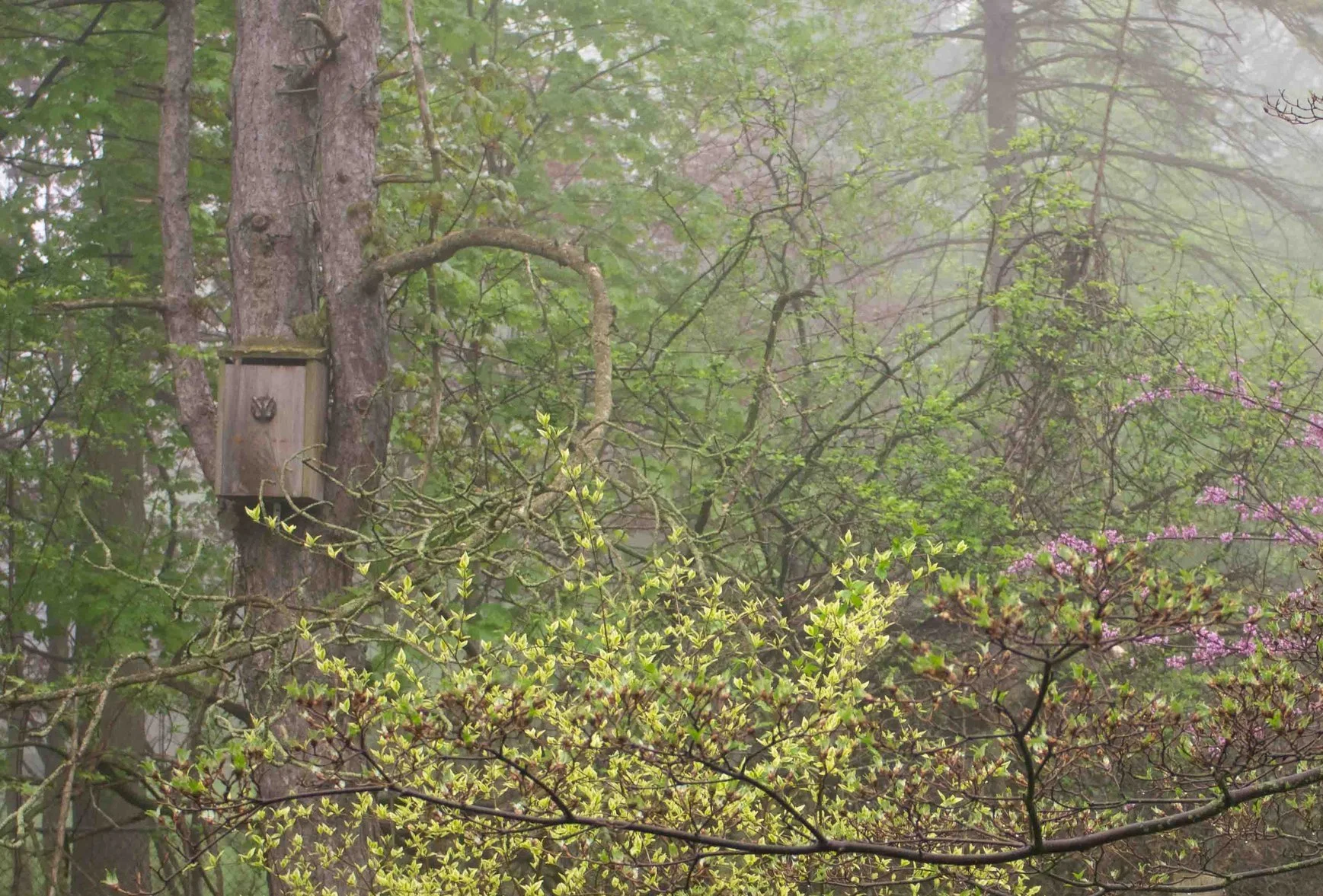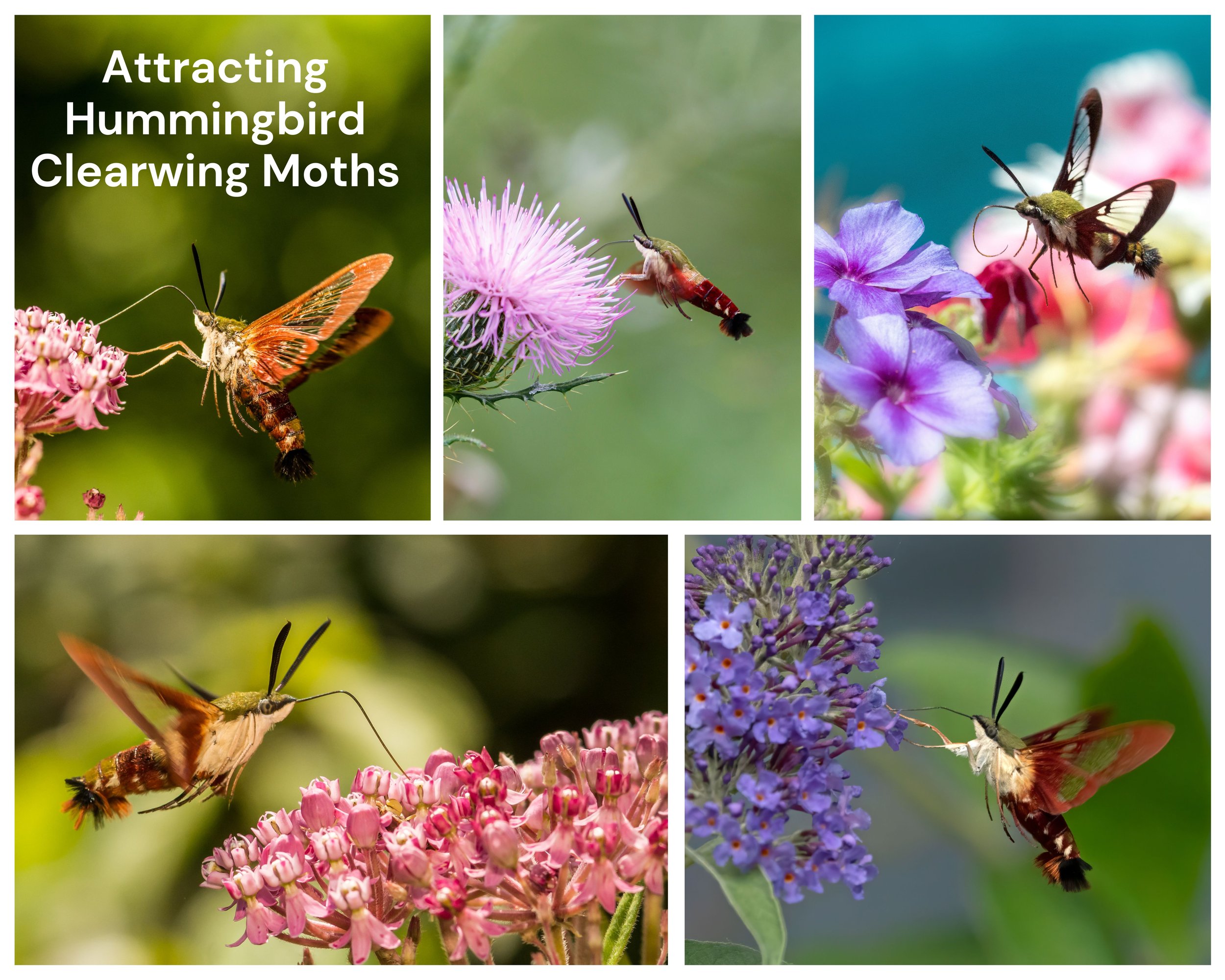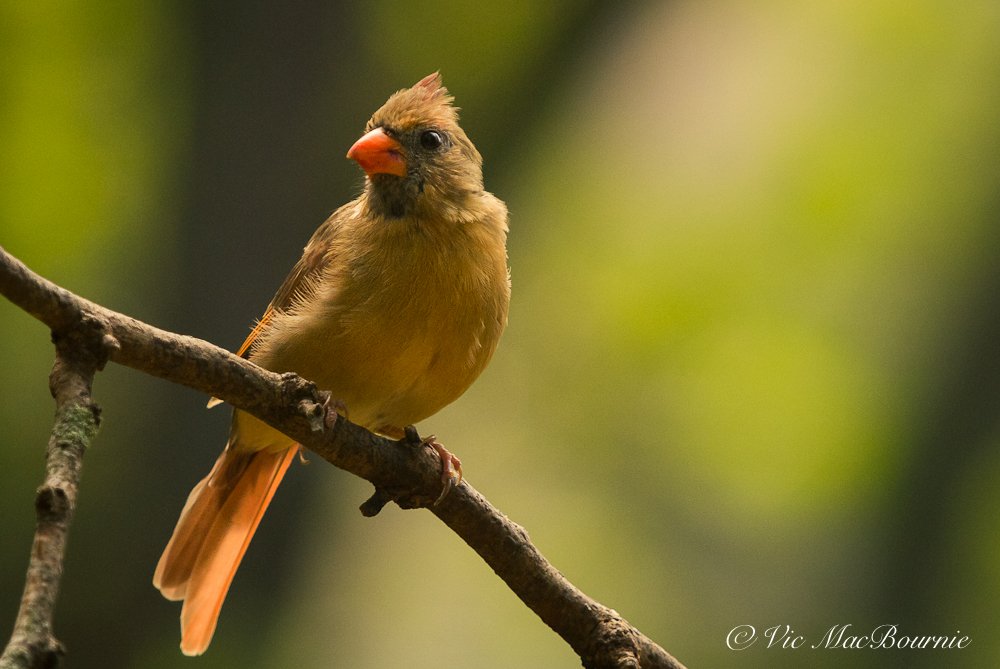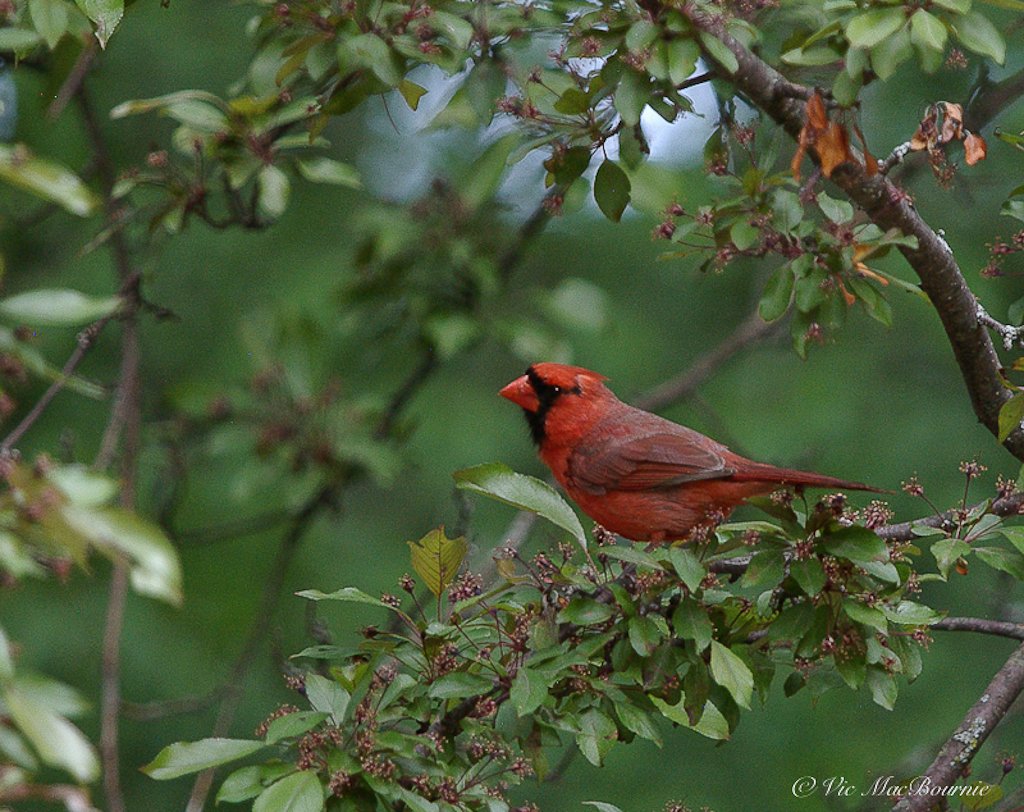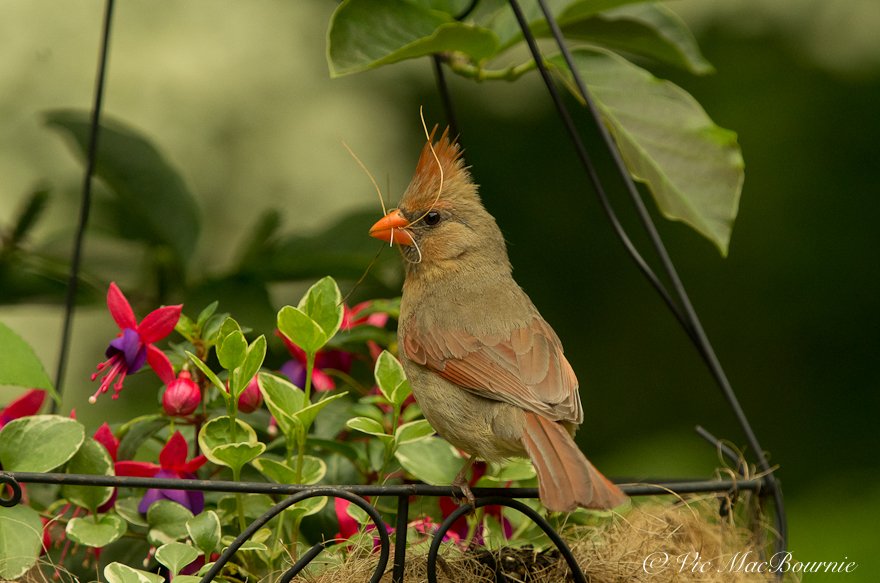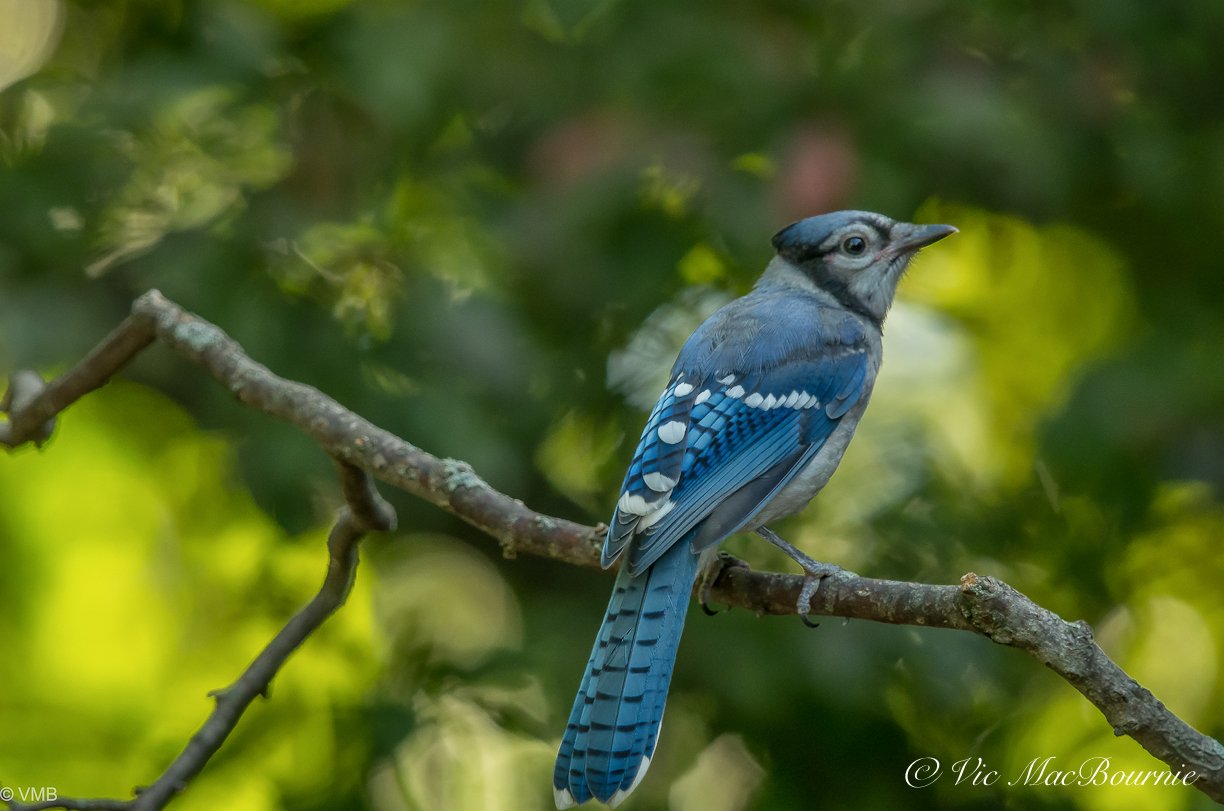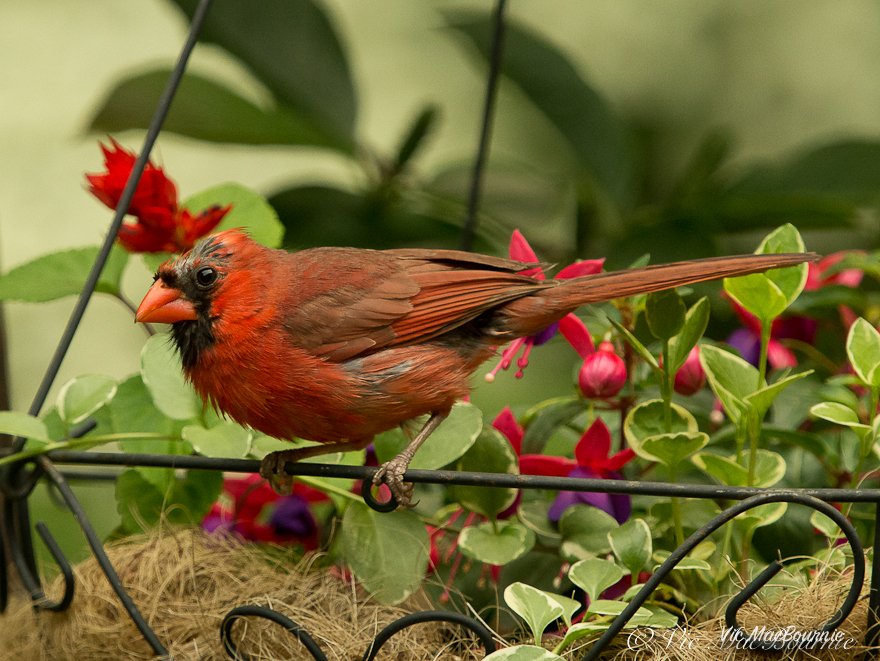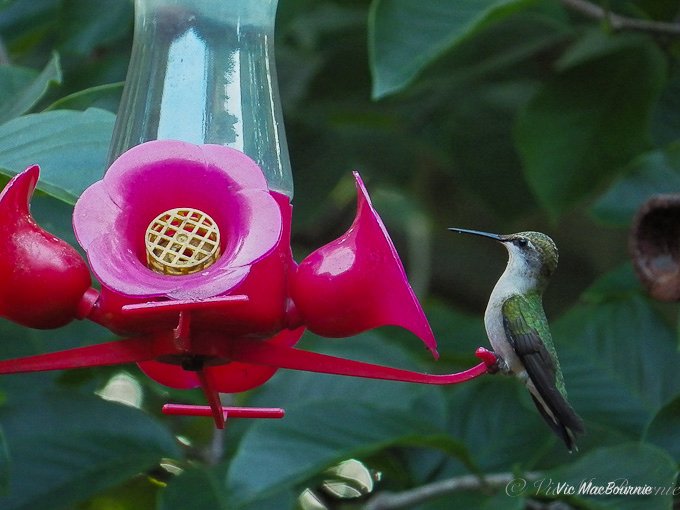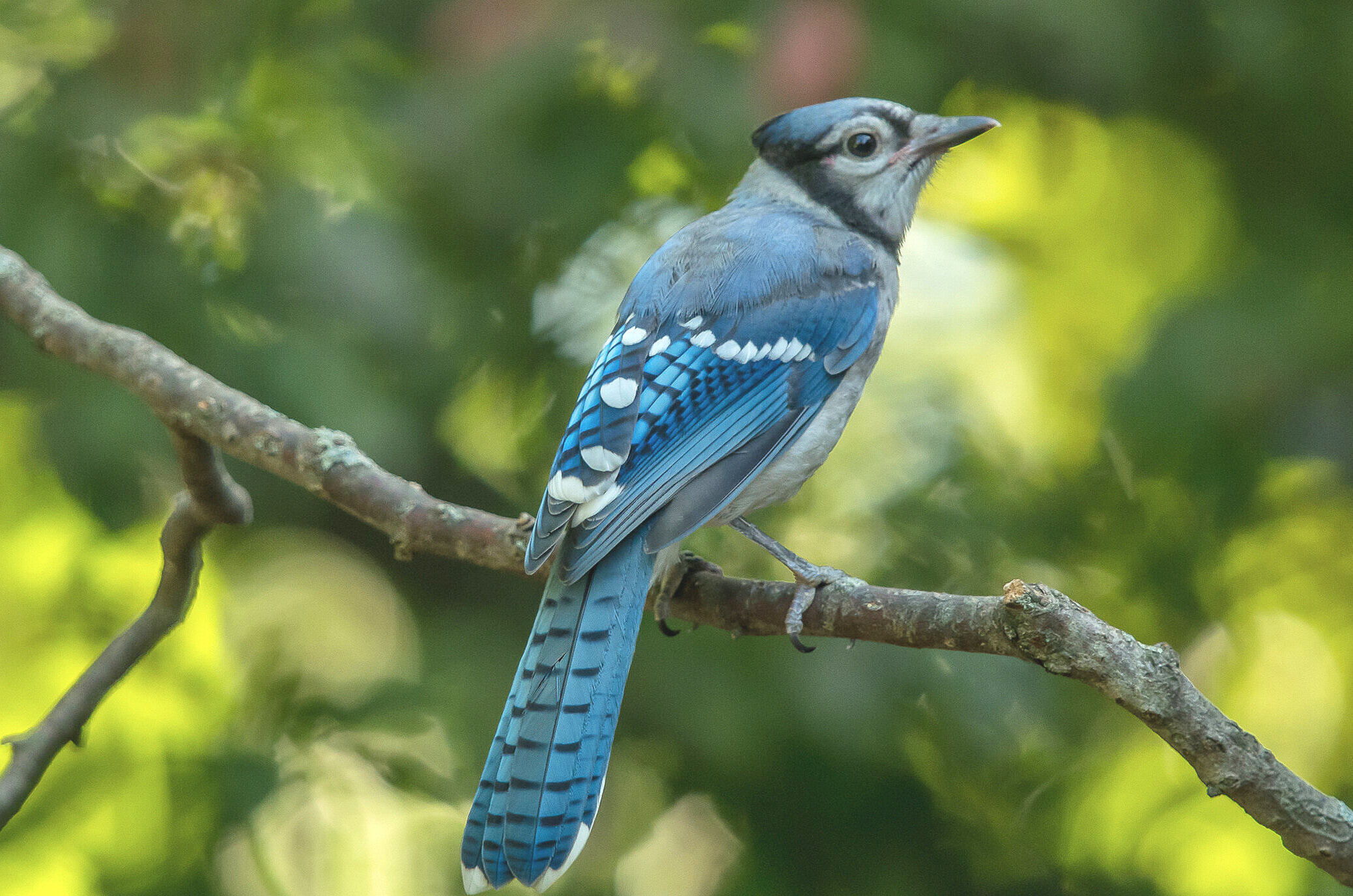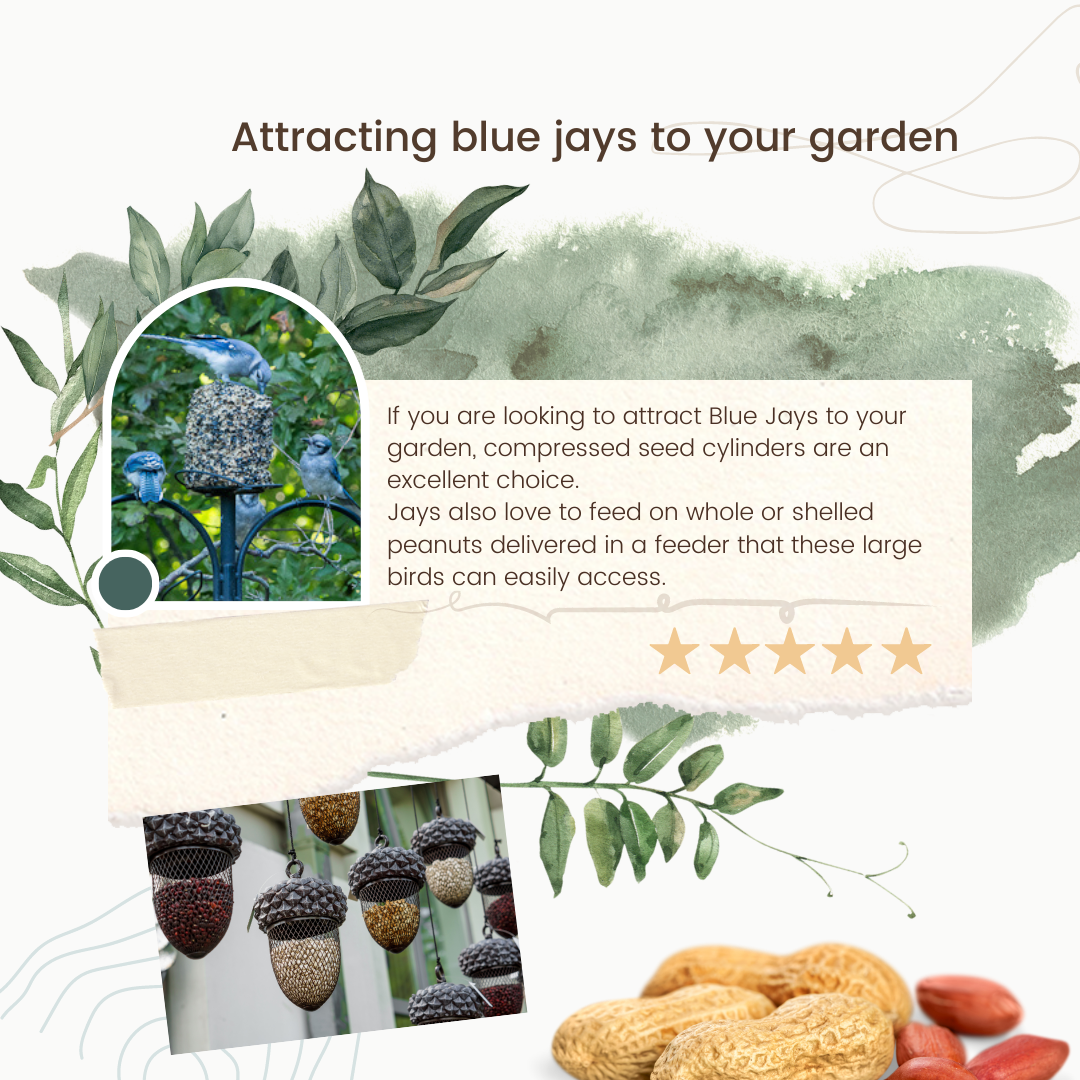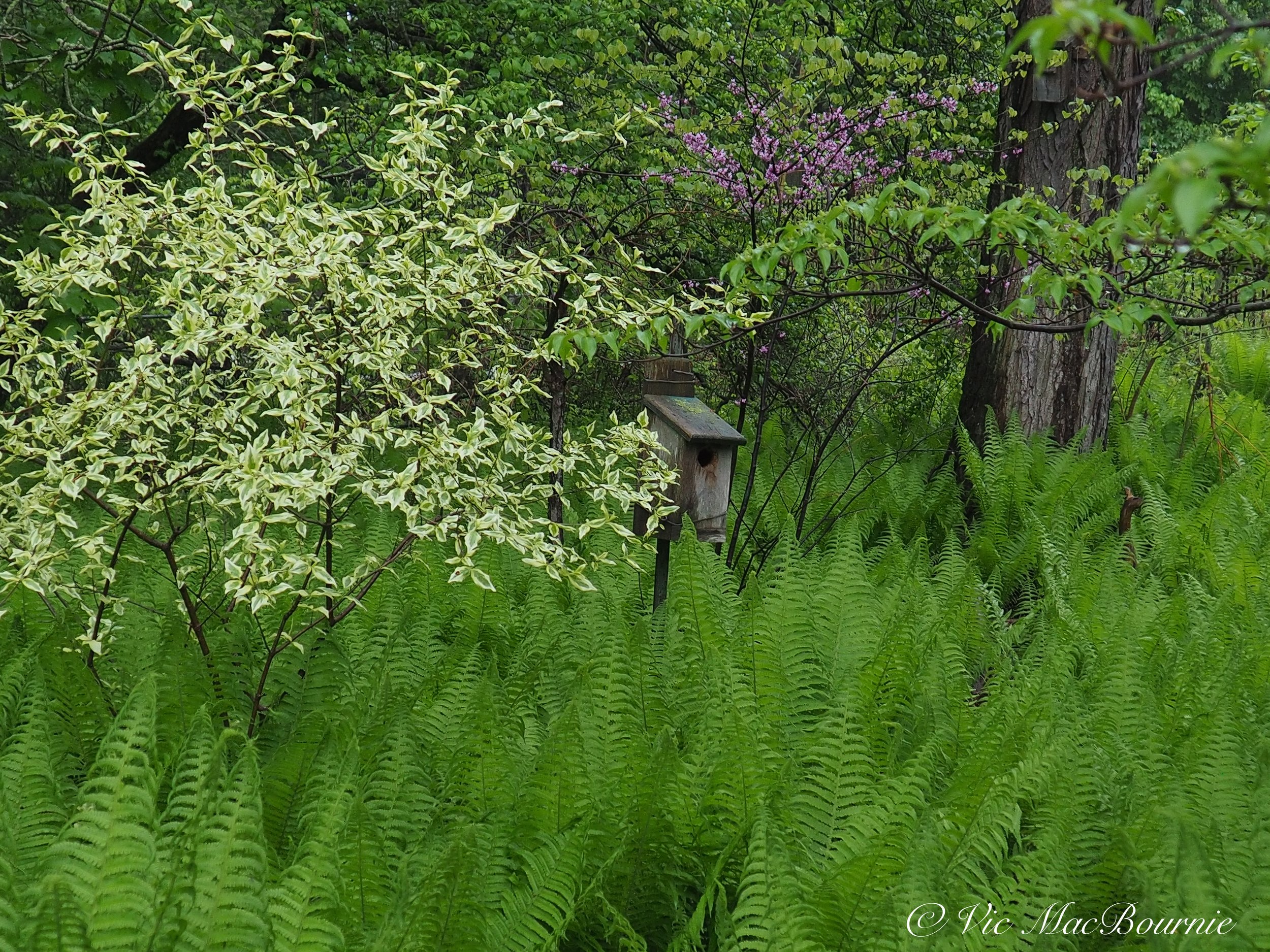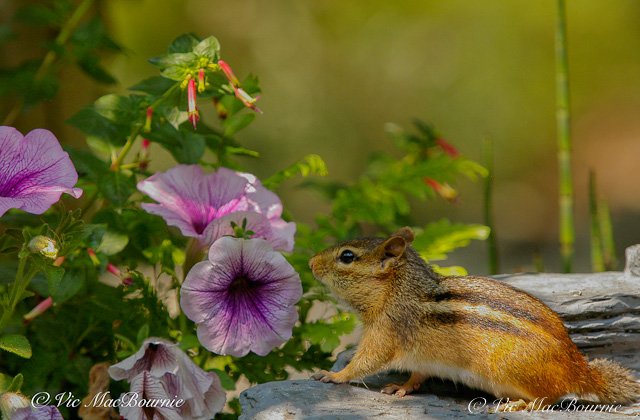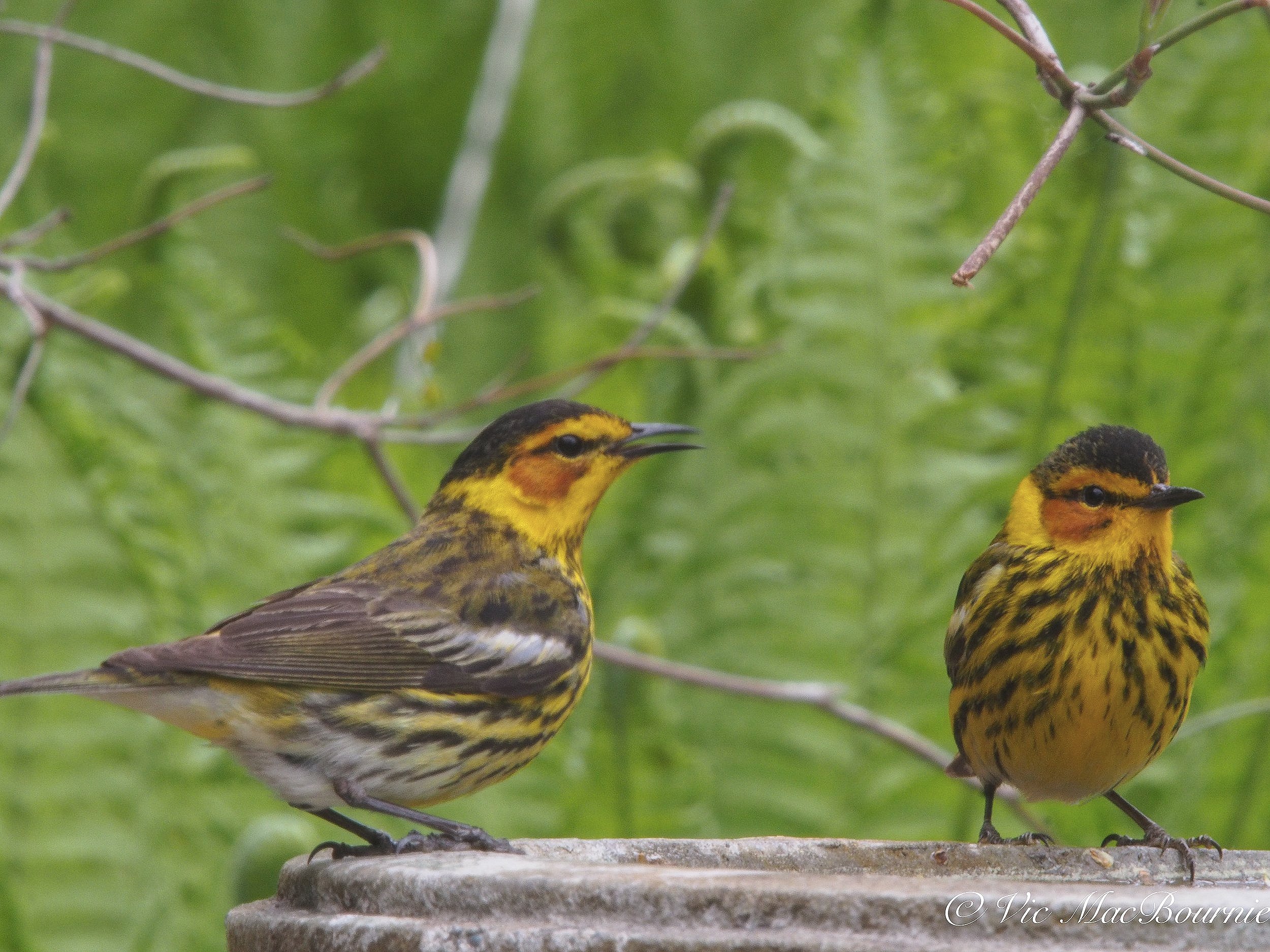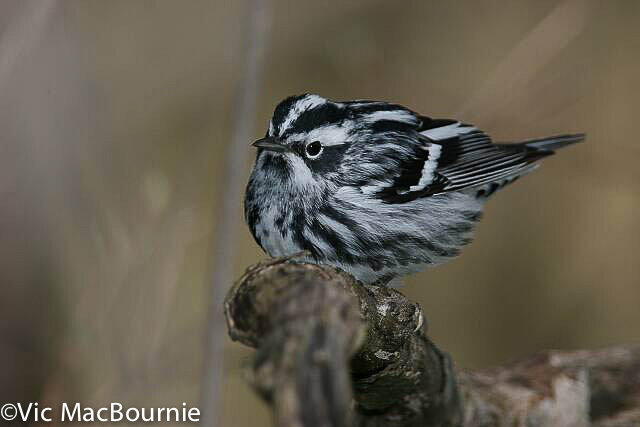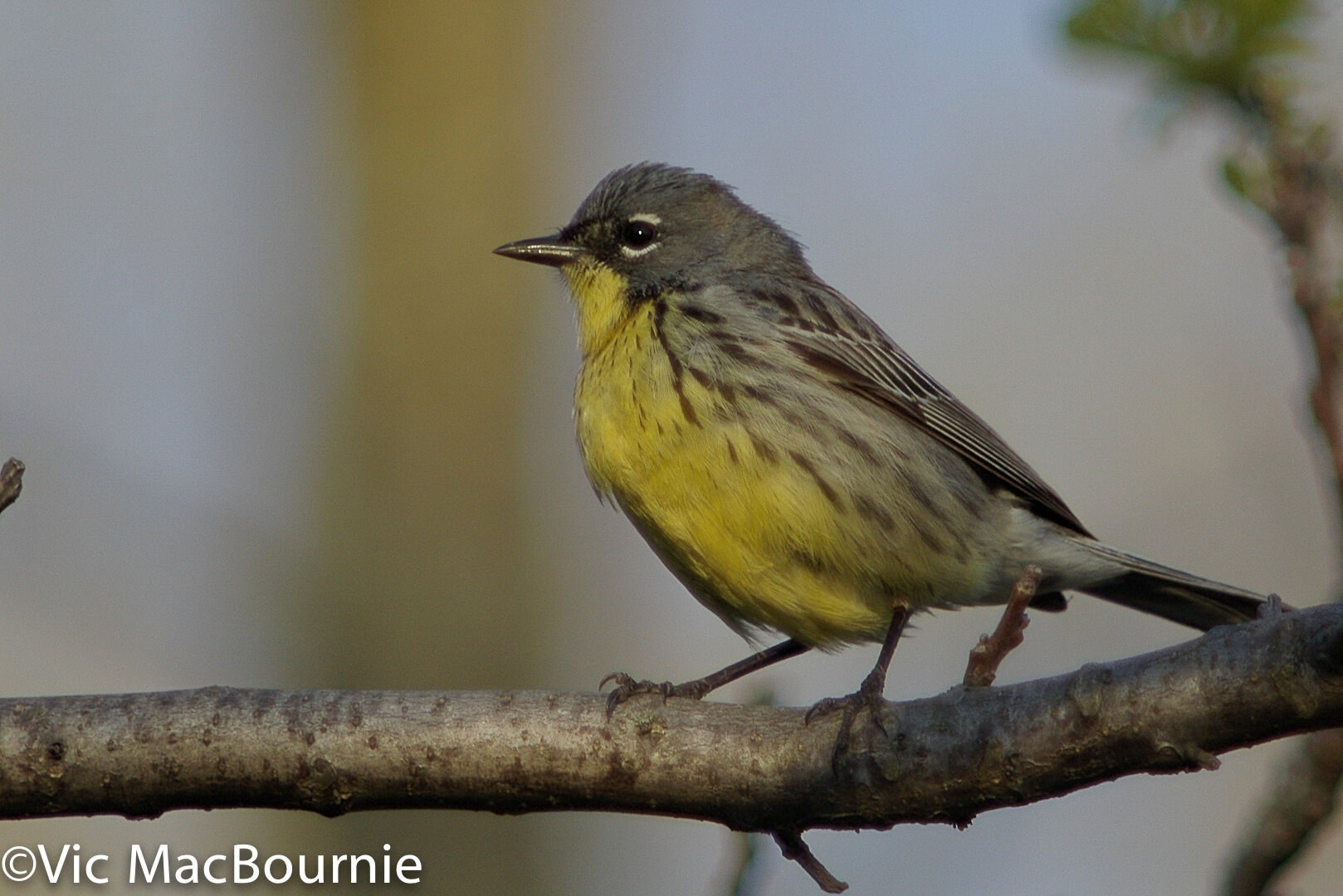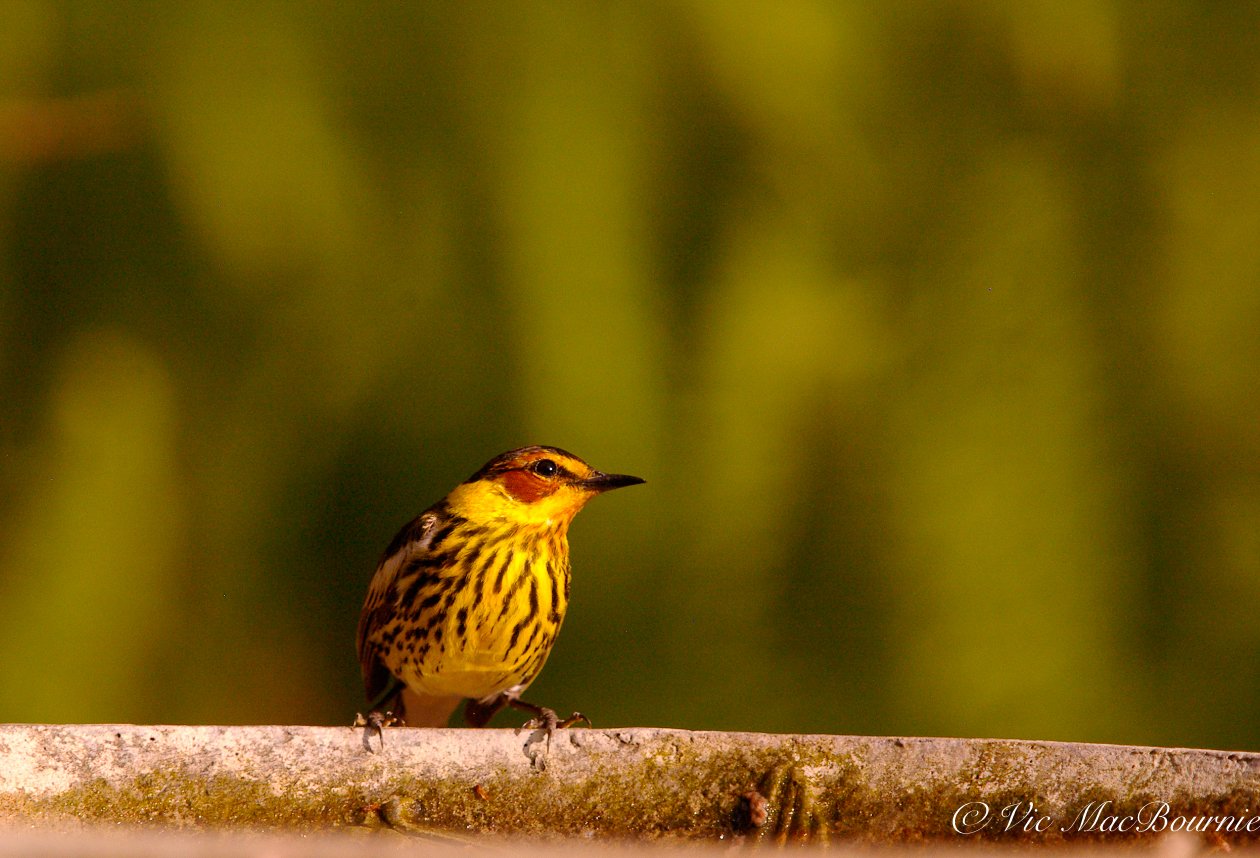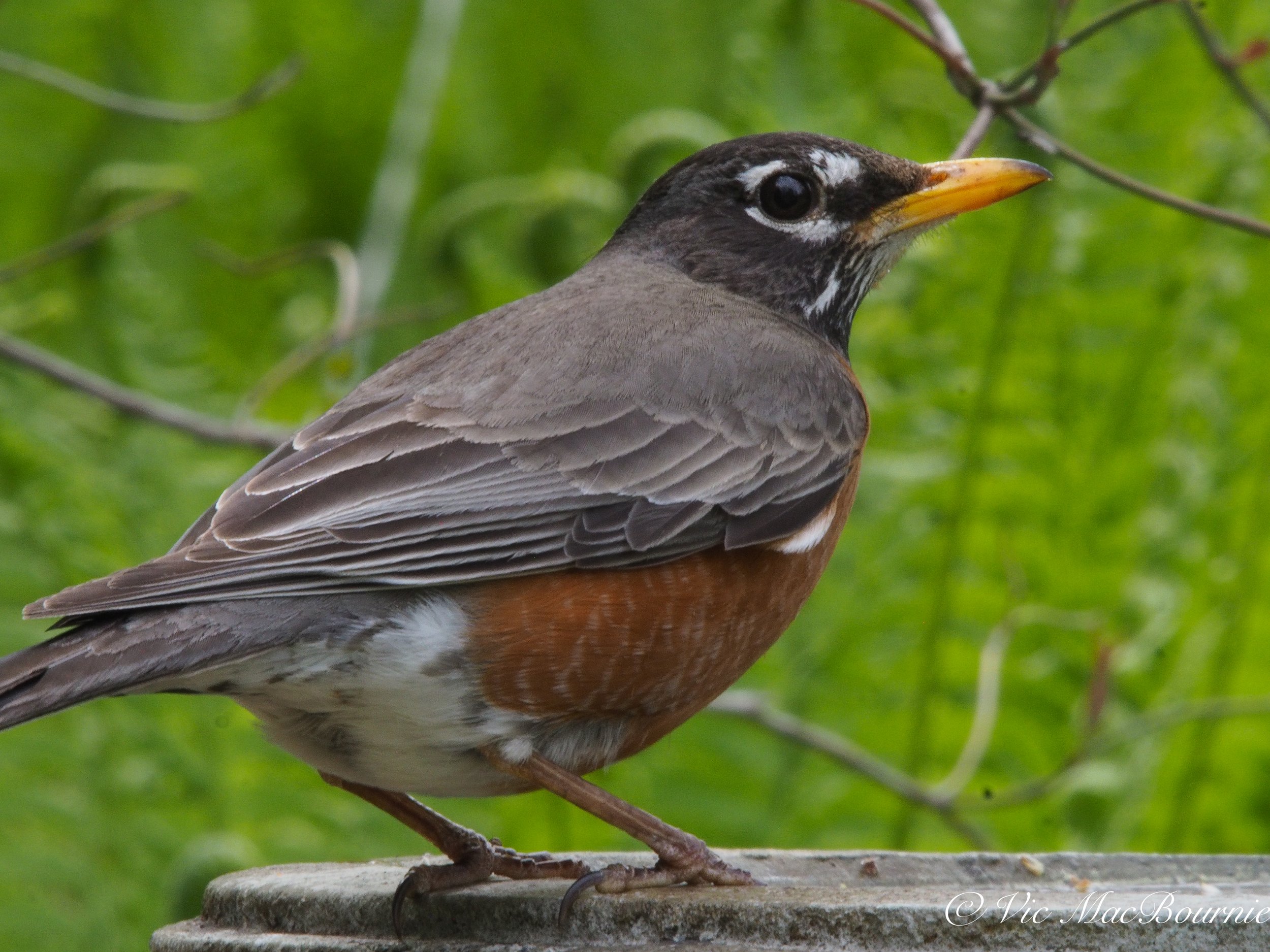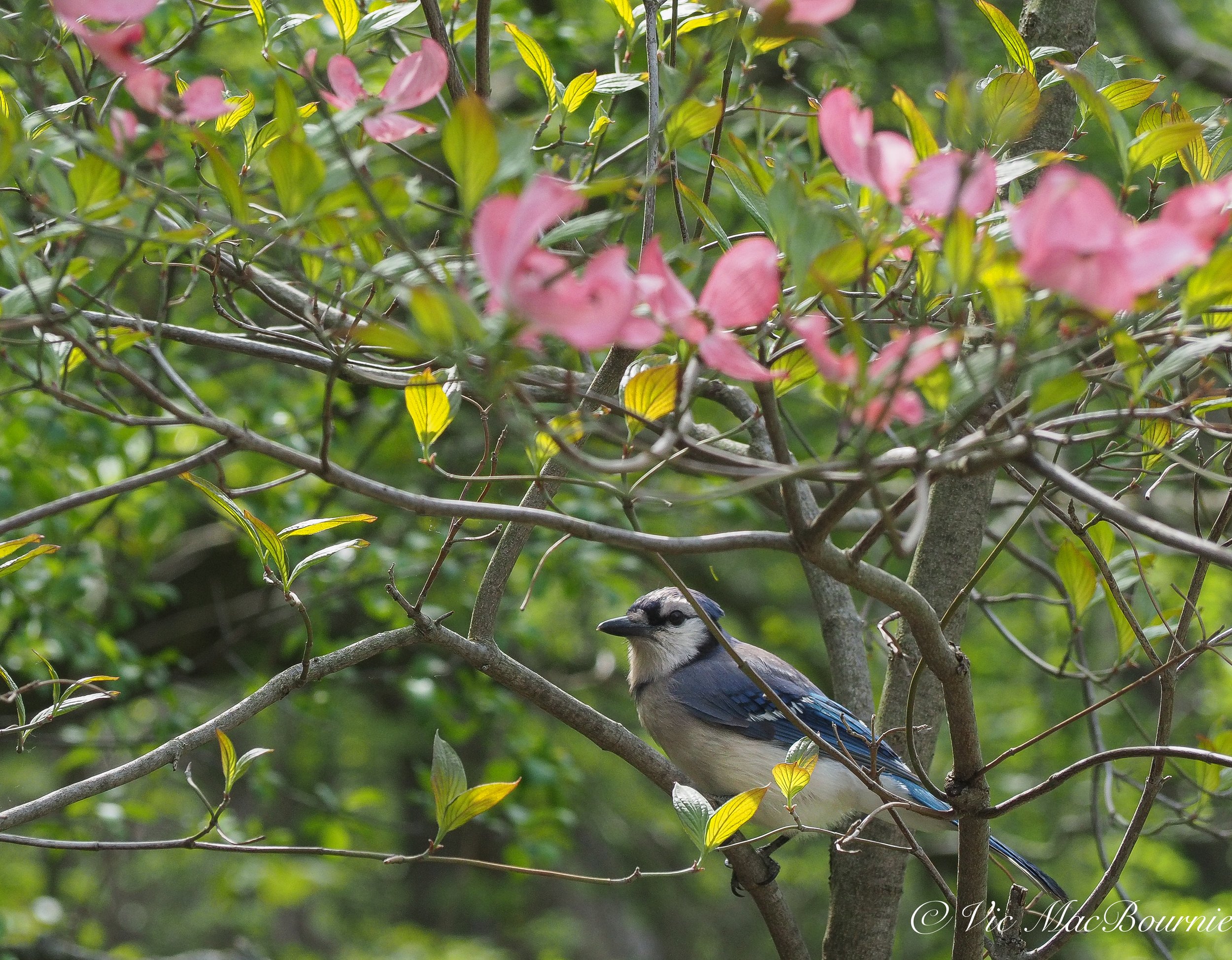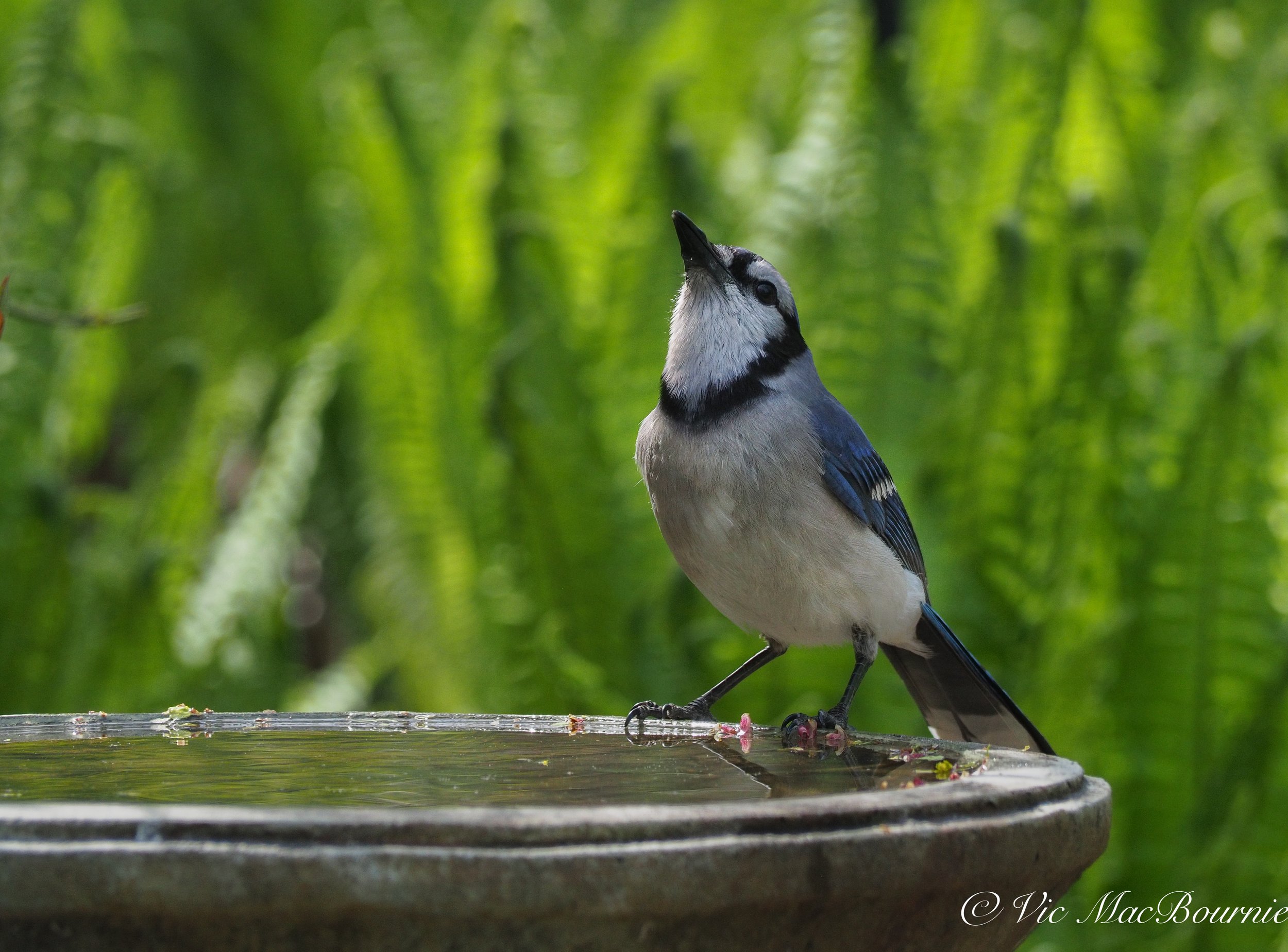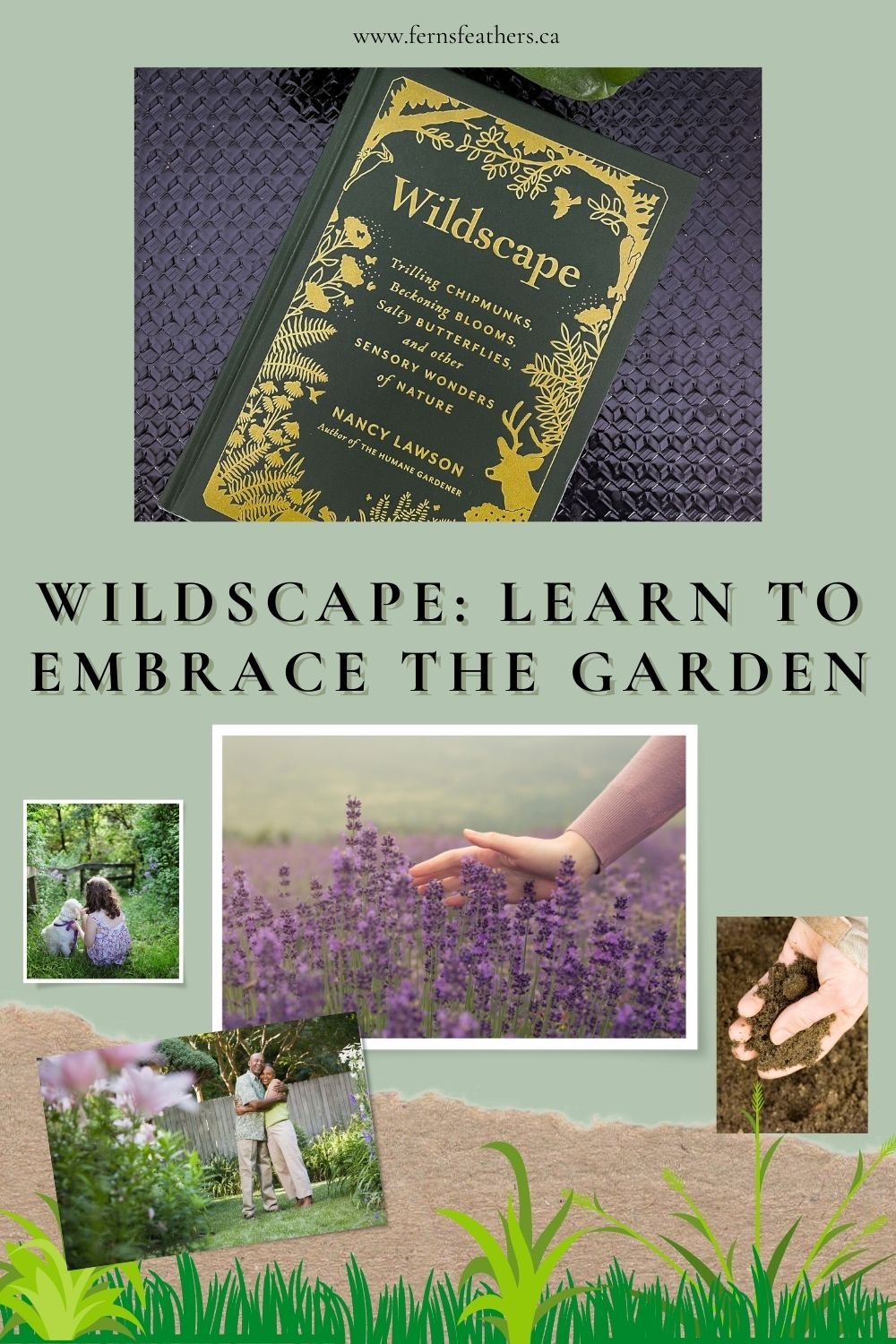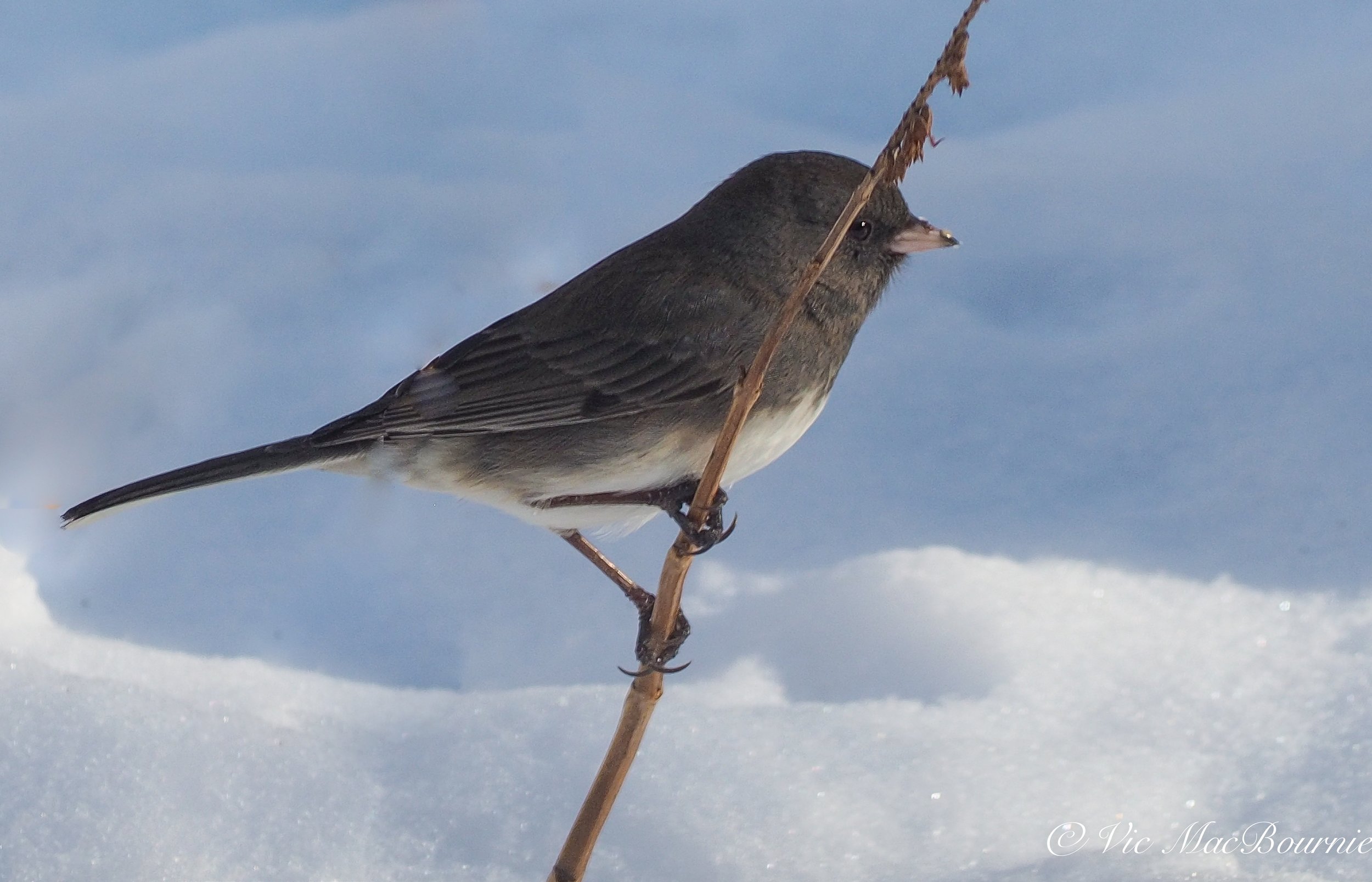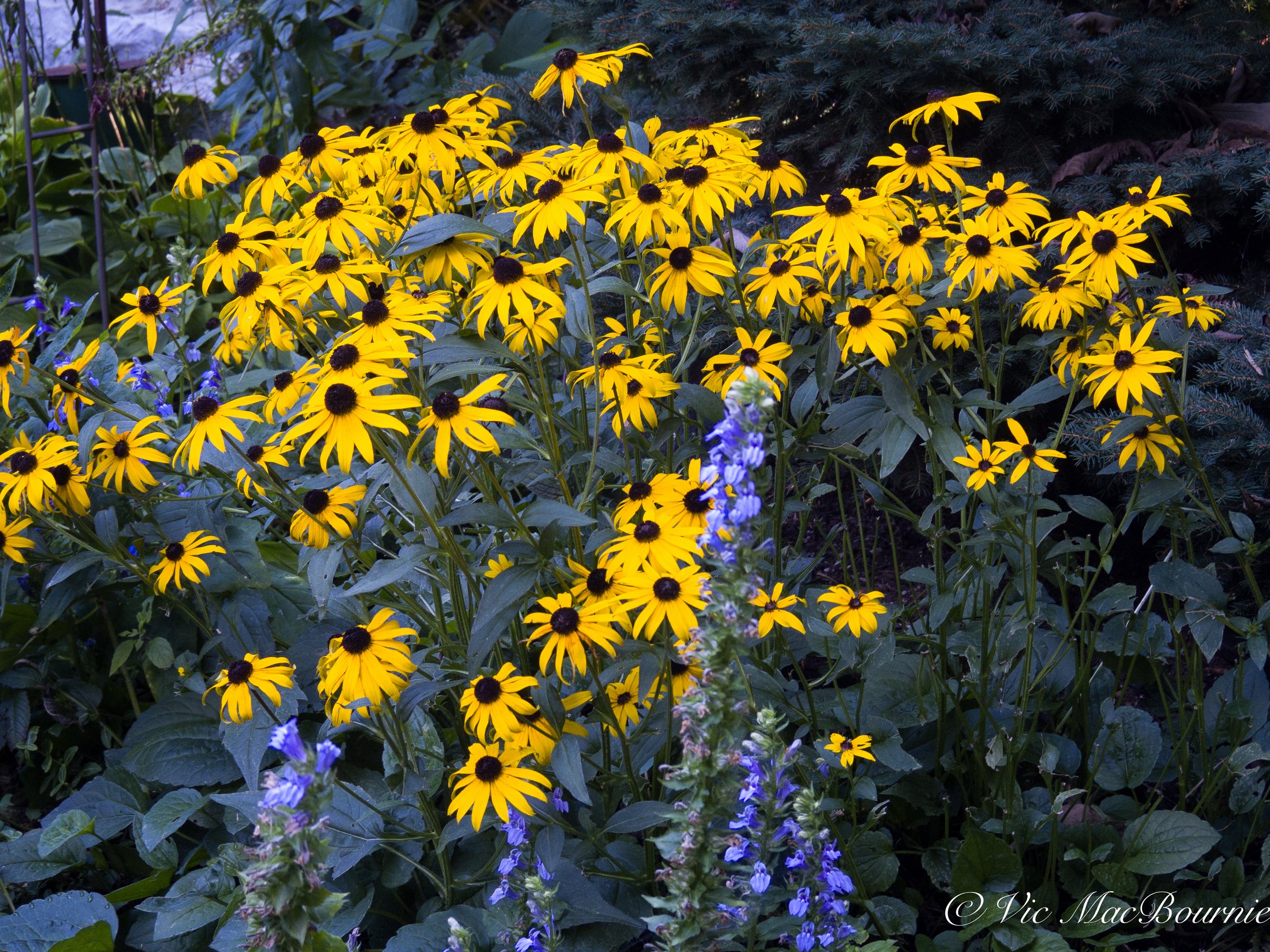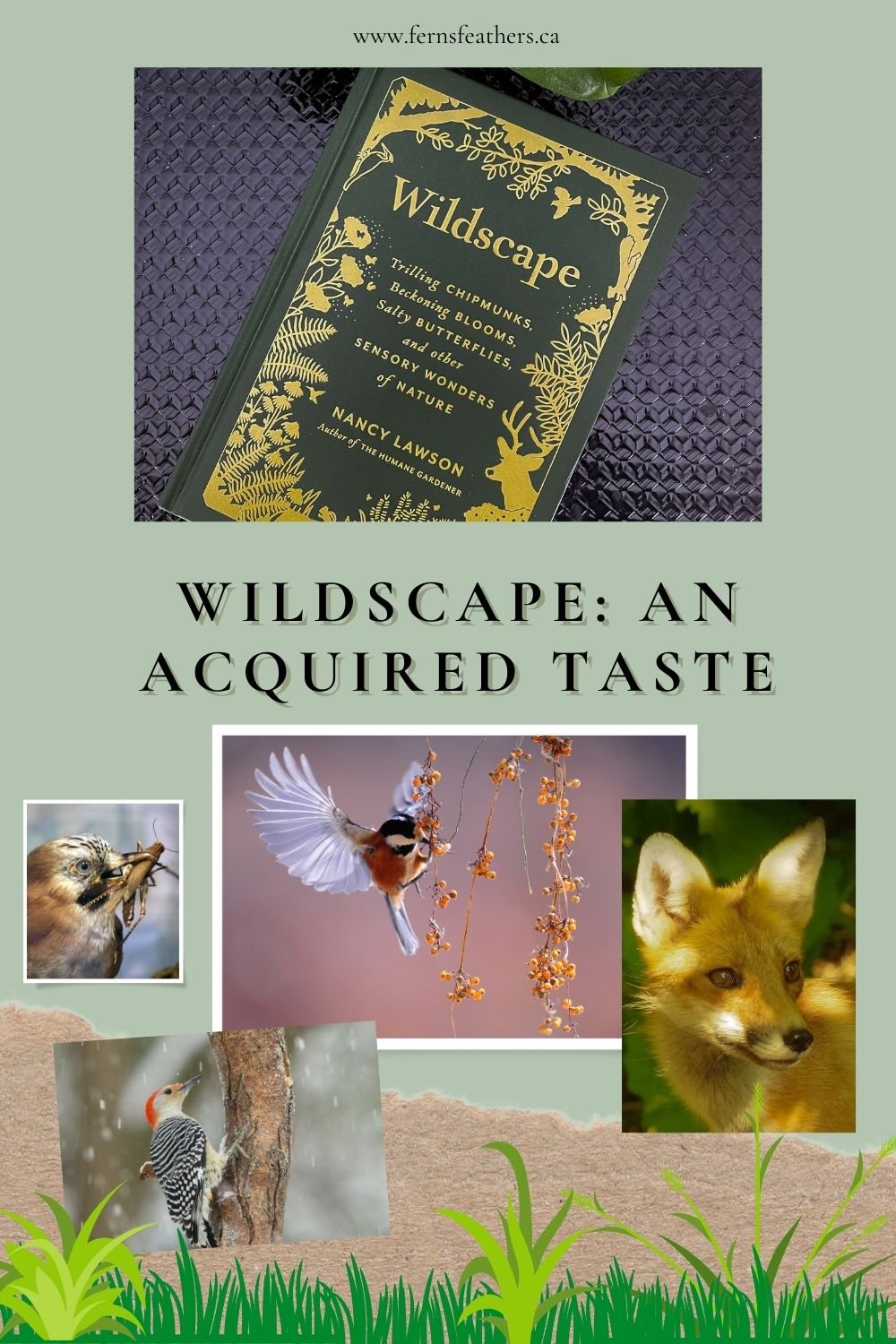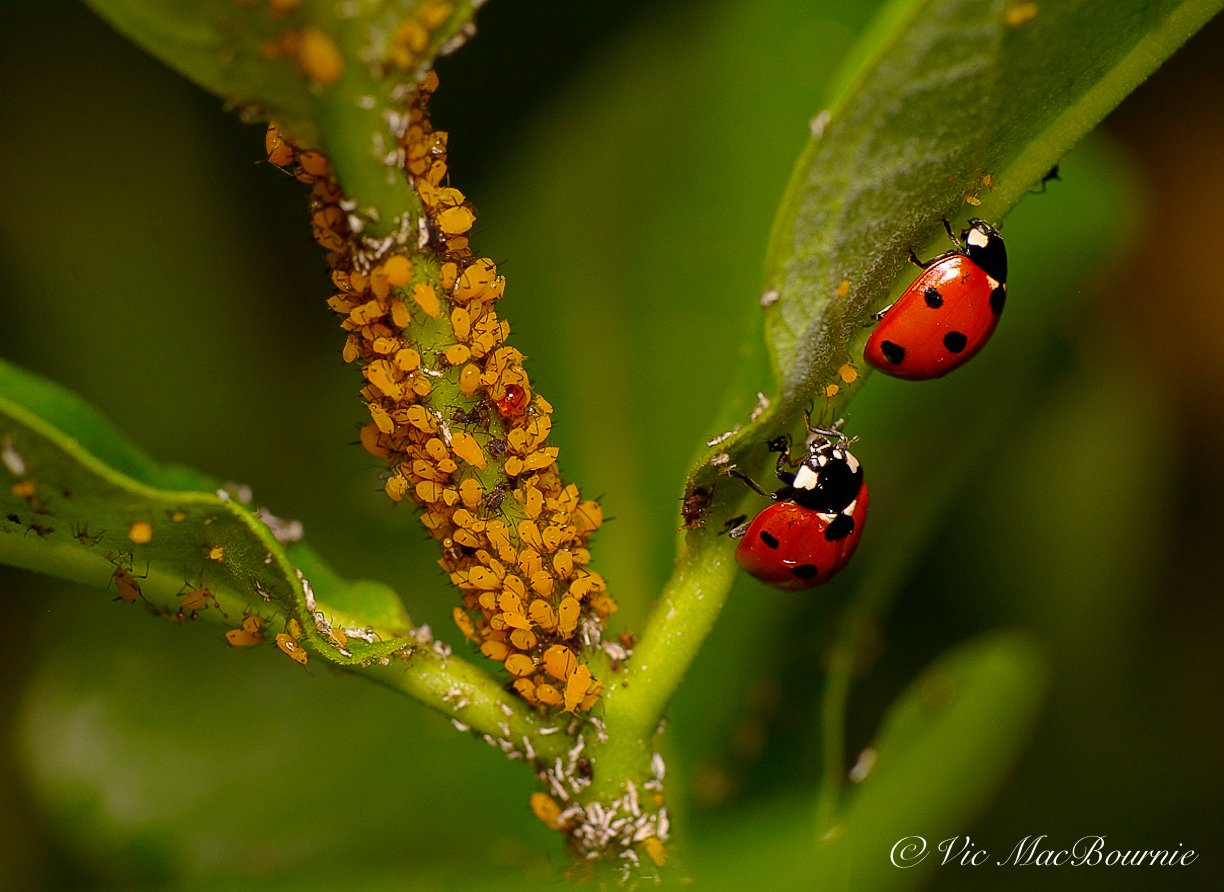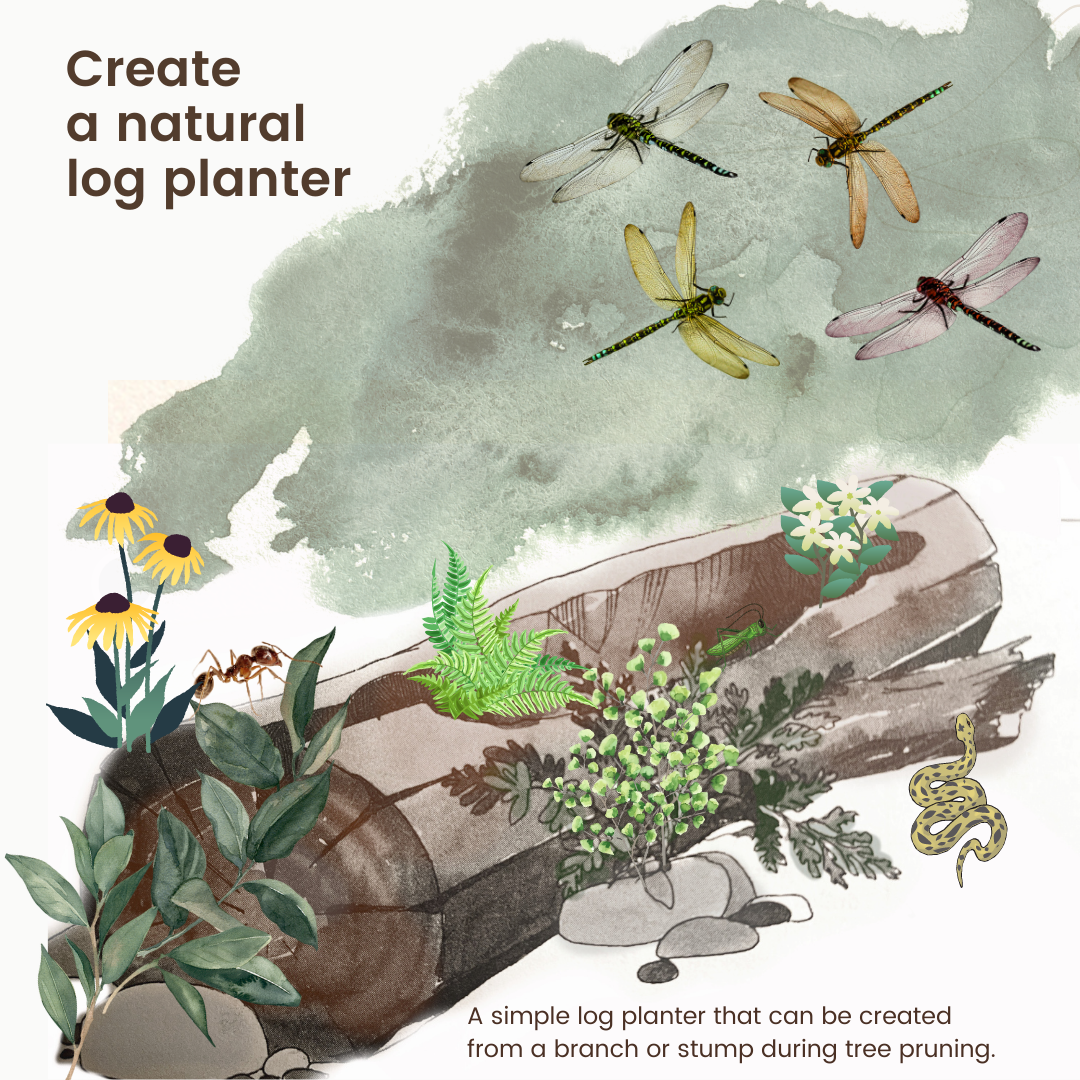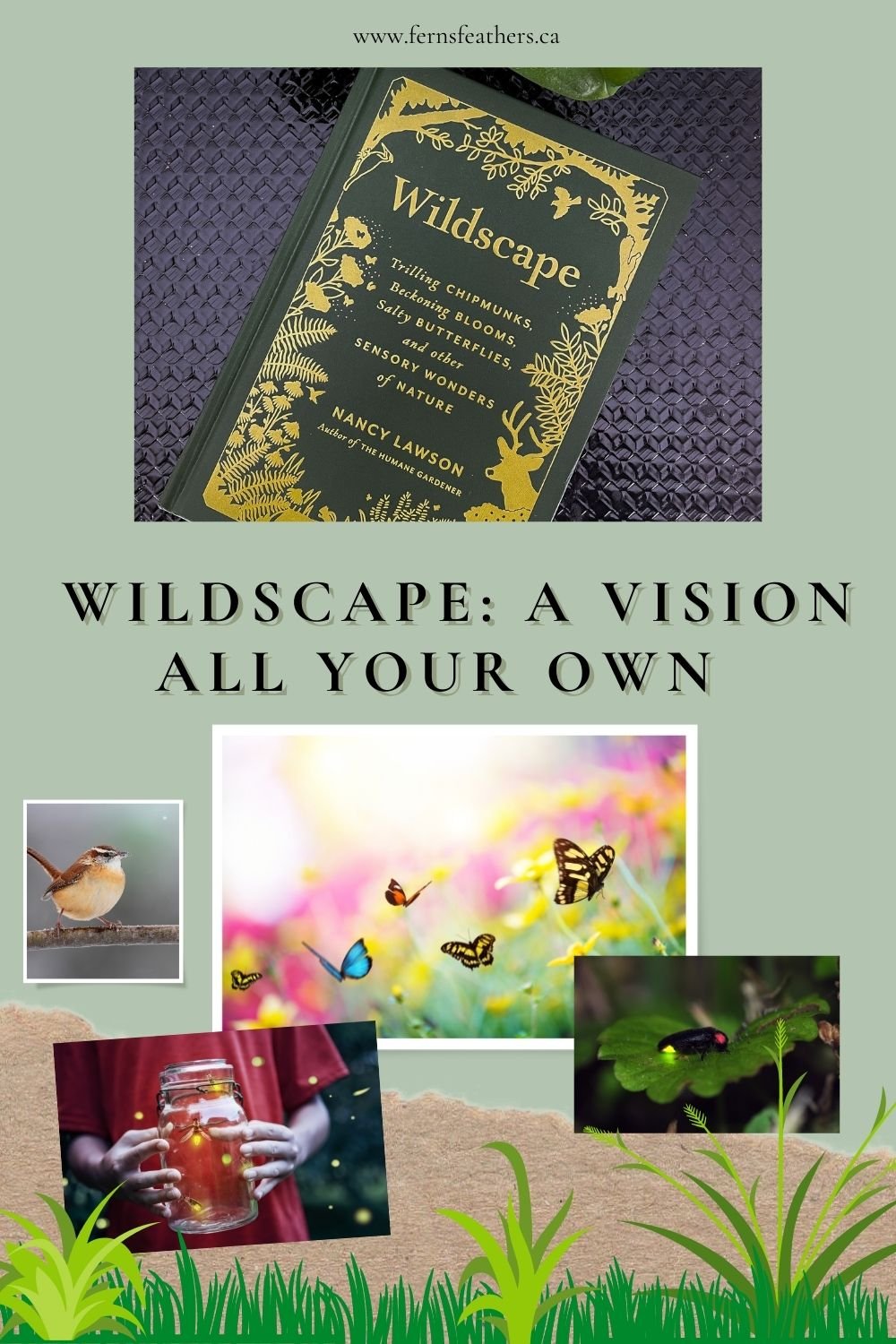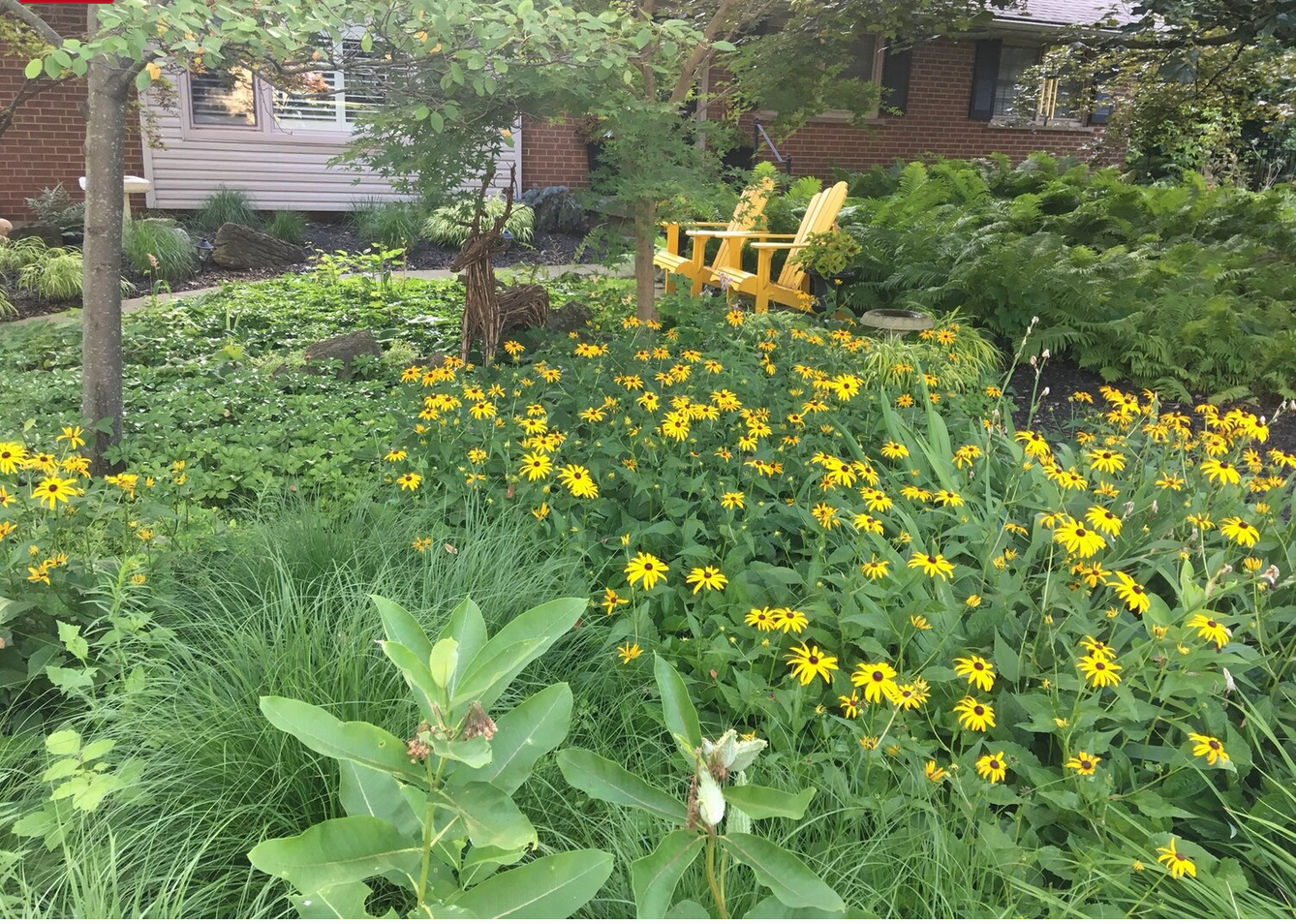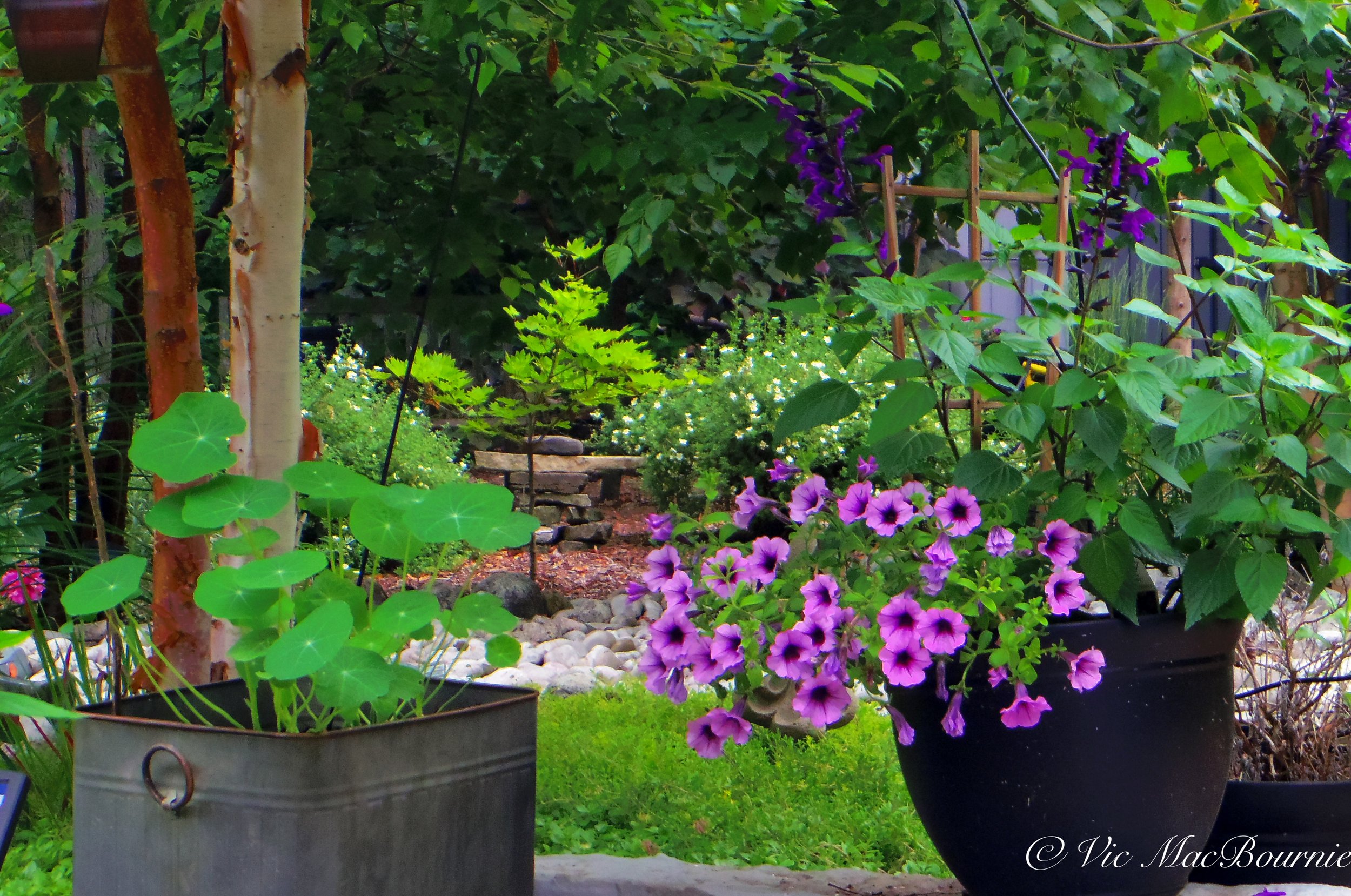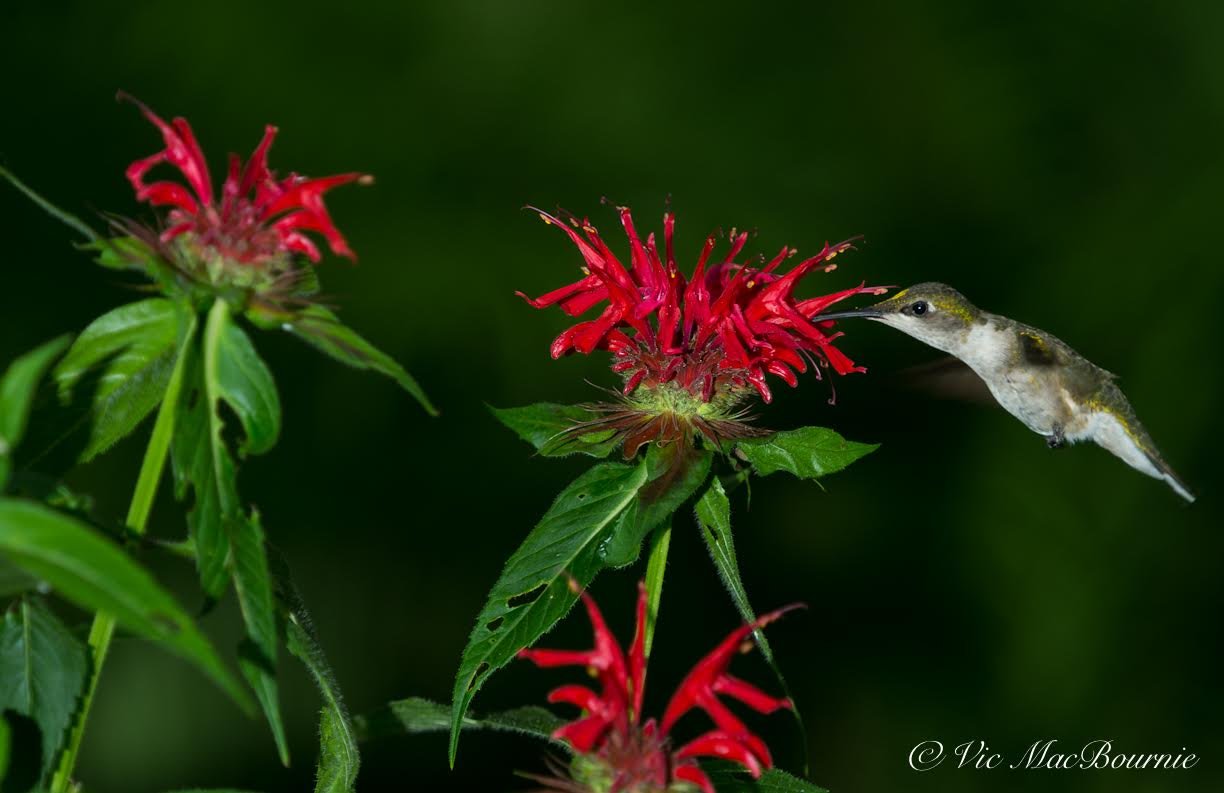A fallen tree transforms the woodland garden
A fallen tree has transformed the woodland garden encouraging a greater variety of fauna – from wild turkeys to owls.
A warbler stops to take a drink from the bird bath beside the fallen tree that has played a part in rewilding that corner of the yard.
New habitat attracts greater variety of wildlife
“With every death, comes new life. Embrace the void, become something greater.”
It’s been almost two years since the Hawthorn tree tucked in a corner of our yard fell to the ground and began transforming the area – rewilding it and bringing new life to a corner of the woodland.
We were lucky. The downed tree poses no risk in the garden and is in a wilder area of the yard where we can leave it be rather than try to remove all the branches and “clean up” the area.
Leaving it alone over the past few years has transformed that part of the garden creating habitat that was not present prior to the tree falling to the ground.
Fallen tree creates new habitat
A mature Hawthorn tree that fell in the garden has played an important role in the rewilding of the area.
The mid-sized Washington Hawthorn tree opened a hole in the canopy, shaded new areas of the woodland floor and, most importantly, provided shelter for birds, squirrels, mice and a variety of insects, reptiles and amphibians that call the woodland garden home.
Click here for more on building a brush or wood pile to attract wildlife.
Birds and mammals grew accustomed to the tangled thorny branches and used the downed tree as a refuge, safe from hawks and other predators.
Our little screech owl took up residence in the owl box after the Hawthorn tree fell in the woodland floor creating a new habitat in the corner of the garden.
Screech owl appears in rewilded area
Then, the screech owl appeared and took up residence in the owl box I had put up in the pine tree a year earlier. The fallen Hawthorn tree’s branches rise up near the owl box providing cover for the little predator. For my post on the screech owl click here.
For months, our screech owl watched over the garden from the security of the many thorny Hawthorn branches that rise up from the forest floor.
It provided hours of entertainment in the evening looking out into the garden from its home, before flying off to hunt for the evening.
The red squirrels didn’t seem to mind “screechy” being so close to them and often would climb up to sneak a peek into the owl’s home before going on with their business.
We’ve always had a variety of wildlife either living in or visiting the garden. But the fallen tree seemed to entice more birds.
Yellow warbler looking for insects.
A weekend of warblers
Last spring, for the first time ever, the yard seemed filled with warblers. For a week or two, they regularly visited the part of the yard where the tree had fallen, drinking and bathing from the bird bath and feeding on the insects. For my complete post on a weekend of warblers, click here.
All the while, they offered up opportunities to photograph them while they filled the corner of our yard with songs.
In spring, momma deer appeared in the yard visiting the bird feeders before returning to the cover of the fallen Hawthorn.
Just days after first noticing her, the doe had her fawn in the yard and hid it among the ground covers on one side of the backyard while she stayed on the opposite side hidden among the ferns and Hawthorn branches watching over her fawn from a distance.
More recently, it’s wild turkeys. Two young male turkeys to be exact.
They are living in the tangled branches of the fallen Hawthorn where they literally disappear into everyday after getting their share of bird seed.
Click here for my post on living with wild turkeys.
Even in the middle of winter, where snow is covering the ground and tree branches are bare, the turkeys manage to disappear once they enter the tangles branches. Sometimes, they’ll fly up on top of the branches to enjoy some sunshine.
Turkeys find a new home
Two young male wild turkeys are comfortable among the branches of the fallen tree.
In the middle of winter, as I look out over the fallen tree, I can’t help but see a massive wood pile not dissimilar to the much smaller one I built in another area of the garden.
These are important areas for all types of wildlife.
They provide perches for birds and small mammals, are a resource for food from insects to mice, and an important safe habitat and roosting area for an assortment of wildlife big and small.
Over time, the branches will break off and fall to the ground adding nutrients to the woodland soil. Mosses and lichens will move in and begin to break down the tree branches. Beetles will begin attacking the tree’s larger branches and trunk breaking down the wood while at the same time providing a food source for birds, toads and snakes.
There are already plenty of woodpeckers in the garden, but the rotting tree trunk will attract even more as the beetles and other insects move in. Millipedes, wood bugs and a host of other insects will help to increase the variety of fauna available in the garden.
The result will be a greater variety of flora and fauna finding a home in the garden and creating a healthier, more diverse environment.
Garden mister is cool addition to your wildlife garden
A recent heat wave put the focus on ways we can help our garden visitors through these difficult times and a mister is the perfect choice.
A recent heat wave sweeping across major parts of North America has reminded me of the importance of adding water to the landscape, and a mister is certainly a cool addition to any wildlife garden.
I set mine up as soon as the heat started and let it run throughout the entire time that saw temperatures reach well into the 40s C or 110-114 F. The cool mist can be a lifesaver for small birds, mammals and even insects looking to escape the worst of the afternoon heat.
I picked up our mister many years ago from a local home store. They were advertising it as a way for humans to enjoy a cool mist while on their decks and patio, but I instantly thought of the hummingbirds who are attracted to bathing in fine mists as well as gentle sprinklers.
For more on providing water in the garden for wildlife, check out my other posts:
• Best bird baths for the wildlife garden.
• Why use a hanging bird bath.
• Tips for using water to attract birds and other wildlife.
Most misters are easy to set up by simply attaching your hose to the end of the hard plastic female coupler on the mister, which are often shaped in a way to allow it to stand up on its own. Ours includes two tiny brass mist nozzles that send a fine cool mist up into the air about to about two feet in height.
Even a slight breeze sends the mist softly flowing across the patio or deck. I admit that it works well whenever the breeze blows the mist in my direction.
I set ours up around our patio pond, which is also set up as a hummingbird haven with several hanging feeders and plants the hummingbirds are particularly attracted to including cuphea, salvias and nicotianas, just to name a few.
The plants get a nice soft watering in the heat and the water helps to keep our pond filled to the brim so that our resident chipmunks and squirrels have easy access to the refreshing water.
There are several different styles and makes of misters available at Amazon and other on-line or local garden and wildlife stores.
This inexpensive mister available at Amazon is typical of the style of garden misters that are available, but the added addition of the screen filter can be helpful effectively removing impurities in the water and prevent the misting cooling system from being blocked by scale and keep the mister working properly for extended periods. The tiny nozzles can get clogged easy enough so any filtration of potential debris getting into the misters is a bonus.
In fact, a wasp decided our mister was a good place to build a nest one year resulting in a major obstruction that shut down our mister until I realized what had happened and cleaned it out.
This 60-inch flexible mister stands on its own as is even advertised for use with bird baths and hummingbirds. It’s nice to see the company is thinking about helping wildlife. It is equipped with standard 3/4-inch garden hose connector, and even includes “sealing tapes and high strength sealing washers,” to stop leakage between the adapter of the standing mister and the faucet.
If you are looking for more, this multiple head mister will provide wildlife, children or even your pet dog with a cooling mist from every direction.
One of the benefits of the misters is the ability to set the misters up for a variety of uses that range from cooling your own sitting area, an area your children or pets are using or, of course for wildlife. The misters are easily transported to different areas in the garden, patio or deck and use such a small amount of water that you will not notice it on your water bills or be overwhelmed by large amounts of water pooling on your deck or patio area.
Rabbits in the woodland garden
Rabbits are a reality in any garden. They are sweet little beings that need a safe place to call home and why not make it our woodland gardens.
Rabbits can be a pain but if we plant enough for everyone they should not be a problem.
Our gardens need to welcome all critters big and small
Let’s face it, rabbits, like deer, are a reality in the woodland garden.
I’ve never had a “problem” with rabbits. Maybe it’s the fact that a garden in a natural state ensures that nothing really gets out of control. Sure, rabbits have dined on my plants and the bark of trees in winter, but I’ve never felt a need to do anything about them and, quite frankly, never would.
I think the key to dealing with rabbits and deer and any other garden nibbler is to plant enough to satisfy the needs of both the gardener and the wildlife that uses our gardens to survive, raise their young and live their lives in peace.
In our garden, we have hostas that every deer and rabbit seems to love. They are old style and came with the house. I plant them everywhere by dividing them regularly. The deer and rabbits are welcome to them. My hope is by offering them these hostas they will leave my other plants alone.
It works… to some degree.
Of course using plants that rabbits and deer don’t care for is a good first step. There are multiple posts on line listing plants that rabbits don’t eat. You can find a list of a few of the plants – both native and non-native – later in this post.
I’m sure our resident foxes, owls and possibly even the odd coyote take care – in short order – of any abundance of rabbits in the neighbourhood. They are also doing a good job with mice, rats and voles that decide to take up residence in the garden. For more on natural predators, go to my post on The Urban Fox.
I try not to get too friendly with any rabbit that appears in the garden knowing that it’s like not going to be here for the long term and keeping it as wild as possible may be the difference between life and death.
If a rabbit is causing you grief, it’s important to remember that they are prey for so many animals that their life expectancy is so short that there is a good chance that any damage they cause to plants is likely short lived.
According to the Audubon Society cottontails: “have a life expectancy of less than two years. Nearly half the young die within a month of birth, largely because cottontails are important links in many food chains.”
In fact, if you are looking to attract higher predators, rabbits will surely get the job done. Hawks, owls, fox, coyotes and a host of other animals consider rabbits fair game.
Enjoy them whenever you see them, but don’t get too attached to seeing them in the garden unless you like having your heart broken.
“I think the key to dealing with rabbits and deer and any other garden nibbler is to plant enough to satisfy the needs of both the gardener and the wildlife that uses our gardens to survive, raise their young and live their lives in peace.”
If you are “collecting” plants rather than creating a natural habitat, then a single rabbit family can cause havoc in the eyes of that gardener. Don’t be a collector of specialized plants if you live with rabbits, deer and other grazers. Or, if you must grow these prized plants, just give them proper protection.
Personally a garden dotted with small fences around prized plants has never looked very appealing to me. My motto is: “if it can’t make it on its own, it’s out. I’m not fighting Mother Nature. That’s not a win, it’s a lifelong battle. Yet so many gardeners choose to accept that lifelong challenge.
There are lots of ingenious ways gardeners have devised to protect plants to varying degrees of success.
My neighbour, for example, uses sticks poking up through hostas to keep deer from devouring them. I’m sure it helps to some degree and still has a more or less natural look.
Rabbits are a little more difficult to keep out of areas of the garden. Obviously, if you’re growing vegetables, a fence around the vegetable patch that goes deep underground should get the job done. If you only want a few veggies for the kitchen, one or two raised planters are another option worth investigating.
The raised planters may not keep deer, squirrels and raccoons out, but they do a good job with rabbits.
Always be kind to rabbits and other wildlife
The last thing we should be doing is going on the attack against these helpless garden visitors.
I remember being on a garden tour a few years ago and having to listen to a man bragging about what he does to rabbits that dare set up a home in his precious garden and dine on his prized plants.
It was enough for me to speak out and offer the man a few choice words he could take home to his precious garden.
Don’t be this type of gardener. Open up your garden to wildlife big and small and I guarantee the rewards will be so much more than watching a hosta bloom.
Ten Native plants rabbits stay away from eating
One of the problems with rabbits is that they seem to like everything that grows in our gardens.
There are, however, plants that these little critters are not interested in munching.
Here is a short list of native plants that should escape most rabbits.
Native plants play a crucial role in creating a sustainable and wildlife-friendly garden. When it comes to deterring rabbits, incorporating native plants that they typically avoid can be a smart strategy. Here is a list of 10 native plants to North America that rabbits don't eat:
• Echinacea: Also known as coneflowers, these colorful and drought-tolerant plants are not a favorite snack for rabbits. Check out my post on the Purple Coneflower.
• Black-eyed Susan: With their bright yellow petals, black-eyed Susans add a pop of color to your garden while repelling rabbits. Check out my post on Black-Eyed Susans.
• Butterfly Weed: As a member of the milkweed family, butterfly weed is unpalatable to rabbits but attracts Monarch butterflies and their caterpillars. Check out my earlier post on Butterfly Weed and Milkweed for monarchs.
• Wild Bergamot: This fragrant perennial, also called bee balm, is a native plant that rabbits tend to avoid. For more on Bergamot, check out my post on growing wild bergamot.
• Joe Pye Weed: With its tall, pinkish-purple blooms, Joe Pye weed is a rabbit-resistant plant that adds height to your garden. For more on Joe Pie Weed, check out my post on growing Joe Pye Weed.
• Goldenrod: A late-season bloomer, goldenrod is not on the menu for rabbits and provides a vibrant touch to your landscape. For more on Goldenrod, check out my earlier post on growing Goldenrod.
• Wild Columbine: The unique shape and colors of wild columbine flowers make them a beautiful addition that rabbits tend to steer clear of. For more, check out my post on Eastern Wild Columbine or Rocky Man Columbine.
• Cardinal Flower: This striking red flower attracts hummingbirds but deters rabbits, making it a great choice for a wildlife-friendly garden. For more, check out my post on Cardinal Flowers.
• Wild Ginger: With its heart-shaped leaves and subtle flowers, wild ginger is a native plant that rabbits are not interested in nibbling on.
• Virginia Bluebells: These delicate, bell-shaped flowers are not a preferred snack for rabbits, making them a lovely addition to your garden.
Non-native plants rabbits prefer not to eat.
• Marigolds: These colorful flowers not only brighten up your garden but also repel rabbits due to their strong scent.
• Geraniums: Another fragrant option, geraniums are known to deter rabbits from munching on your plants.
• Daffodils: While toxic to rabbits if ingested, the strong smell of daffodils usually keeps them at bay.
• Lavender: Its aromatic scent makes lavender a great addition to your garden as a natural rabbit repellent.
• Foxglove: Toxic to rabbits, foxglove is typically avoided.
• Lamb's Ear: The fuzzy texture of lamb's ear leaves is a deterrent.
• Onions: The strong flavor of onions/alliums is a turn-off for rabbits, making them a good addition to your garden.
• Garlic: Similar to onions, garlic's pungent taste repels rabbits from your plants.
• Catnip: While attractive to cats, catnip is known to repel rabbits due to its strong scent.
My close encounter with this cute bunny
My inspiration for this post came when I recently stumbled across this cute little fellow during a drive in the country looking for bluebirds and other spring migrants.
I noticed something ahead on the dirt road that appeared to be eating something. Once I got close enough, I recognized it as a small rabbit probably licking road salt from the winter’s salting program.
As I approached, it hopped to the side of the road. I would have drove off accept I noticed it sitting in the grasses on the roadside and, since I had my 300mm f4.5 resting in the passenger seat beside me, I decided to see if it would allow me to get some images of it from inside the car.
Sure enough, the little rabbit was not afraid and posed nicely for me for a few minutes before we went our separate ways.
Her calm and trusting disposition reminded me how sweet these animals are and how – whether they know it or not – they are threatened every minute of their lives by predators including we humans.
Let’s not be part of that stress in these sweet animals’ lives.
There’s no need to add gardeners to their already long list of predators. We can learn to live with them.
In fact, I would encourage you to invite these beautiful animals into your yard. Enjoy watching them and their families and embrace their cuteness.
Life is too short to worry about that prized hosta.
Author Profile: Vic MacBournie is a former journalist and author/owner of the award-winning website and newsletter Ferns & Feathers. He writes about his woodland wildlife garden that he has created over the past 25 years and enjoys sharing his garden photography with readers.
How to attract screech owls to your woodland wildlife gardens
Screech owls are popular visitors to suburban woodland gardens and are beginning to increase their numbers in Canada, in part, because more homeowners are installing nesting boxes on their properties. Screech owls are among the smallest in North America but they eat more than their share of mice and rats making them a favourite for woodland gardeners.
What do screech-owls sound like? Where do they live?
I know they’re here. I’ve heard them. Many times.
And now, a few years later, I’ve finally seen one in the garden. I suspect they’ve been around all this time but they are not all that easy to see. Sundown and sunset are the most likely times to see them, but even then their natural camouflage makes them almost impossible to spot.
Plenty of nights when I take our dog Holly out before bedtime, we’ve heard them calling out – screeching, if you will. It’s a little eerie at times when you are not expecting it, but it’s music to my ears now that I can identify the call. (Link to screech owl vocalizing.)
It’s not exactly a screech, more a whinny like a horse and trilling, but it could be mistaken for a Screech if you’re alone in the middle of the night in a forest.
Eastern Screech owls are not large.
Many people even mistake the robin-sized nocturnal woodland owl with short ear-tufts and yellow eyes, for fledgling Great Horned owls when they notice them in their neighbourhood. Not that they are easy to notice in the first place. Not only do they blend into the forest, their nocturnal habits make them a rare sighting if you are not making a conscious effort to find them.
These small owls, however, can be more common in your neighbourhood than most may realize.
Where do screech owls live?
The Eastern Screech Owl, a common species found east of the Rockies, can be spotted in a variety of habitats including woods, suburbs, and parks. These adaptable birds are not picky when it comes to their living arrangements and can even be found nesting in larger backyard nest boxes.
Their ability to blend seamlessly into their surroundings makes them difficult to spot during the day, so it’s best to listen for their distinctive calls at night.
Geographically, the Eastern Screech Owl’s range extends from the Rocky Mountains to the Atlantic coast, covering a vast area from southern Canada down to Florida and southern Texas.
In fact, these adorable little nightbirds are quite common throughout Eastern United States as far south as Florida, including parts of southern and central Ontario into Manitoba and Saskatchewan.
One of our screech owl boxes installed on a mature pine just waiting for its first homeowners.
Although these little guys are still widespread and fairly common, they are gradually declining in parts of their range. If there is good news in climate change, it is that the Screech owl is slowly expanding its range farther into Ontario, Manitoba and Saskatchewan and even into Alberta.
In Canada, this species is a year-round resident, with the majority of the population concentrated in southern Ontario.
Whether it’s in the dense woods, the quiet suburbs, or the bustling parks, the Eastern Screech-Owl has managed to adapt and thrive in a wide range of environments. So keep your eyes peeled and your ears tuned in as you never know when you might catch a glimpse or hear the haunting call of these elusive birds.
The North American Breeding Bird Survey estimated that between 1966 and 2015, the number of Screech owls increased in Canada, but declined in the United States. But of the estimated 900,000 global breeding population, 95 per cent live in the U.S., 4 per cent in Mexico and a mere 1 per cent in Canada.
Cool facts about Screech Owls
Screech Owls are the smallest owls in North America
In some parts of the U.S. including Texas, Screech owls use small blind snakes to keep their nests free of insects while they are raising their young. A study showed that owls that brought these small snakes (more like a worm than a snake) into the nesting area had fewer insects like ants, termites or larvae. Researchers found that the snakes proved beneficial to the young owls who were found to have fewer health problems and a better chance of survival. (Click here if you want more information about the collaboration between the owls and snakes.)
The tips of flight feathers of the Screech Owl are serrated and, as a result, their flight is almost silent and allows them to swoop down on unsuspecting prey.
Screech owls have such an acute sense of hearing they can find small mammals such as mice under very heavy snow or vegetation. This makes them successful hunters in all seasons.
Their large eyes give them excellent eye sight at night, but because of the position in the front of their heads they are able to move their heads 270 degrees in either direction. This gives them the ability to see in an almost complete 360 degrees.
During the day, Screech owls conceal themselves in trees, their plumage camouflaging them against the bark. If they feel extremely threatened, they will make themselves appear very thin, squint their eyes and sway back and forth to imitate the natural movements of a branch in the wind.
Owls represent wisdom in early Indian folklore
These owls were considered protectors in ancient Greece mythology and accompanied Greek armies to war.
If you are looking for Screech Owls, natural woodlands with an open understory are an excellent place to start, and a woodland garden rich in native plants and trees can be the perfect spot for a couple of screech owls to call home.
The abundance of native plants and trees will help attract insects which form a large part of the Screech owls’ prey made up of small mammals, birds and reptiles.
You’ll also find Screech owls in the small woodlots around farms where the hunting is good for field mice – one of their favourite prey.
They generally favour deciduous or mixed woods with plenty of open ground for hunting. Wooded areas along streams and rivers also provide prime habitats for these owls. Suburban yards and city parks can be ideal places for them to take up residence provided there are large trees and nesting cavities.
Unfortunately, homeowners remove many of the owls’ natural nesting holes when they remove dead snags from their yards. Thankfully, nesting boxes have taken over where natural nesting holes have been removed.
Nesting boxes are said to be part of their success story and expansion of the owls’ range.
I recently picked up two large home-made boxes (see photo above) which have been installed about 15 feet up in two trees in our woodland garden. One of the boxes found a home in our mature Austrian Pine.
Owl boxes, although on the large side compared to traditional blue bird boxes, are available at some specialized wild bird stores as well as through Amazon. JCs wildlife screech owl box is even featured in this you tube video and comes highly recommended.
It’s never too early to get your boxes out to give the owls an opportunity to discover them.
Screech owls are secondary inhabitants of nesting sites so they are always on the lookout for a new home.
They can often be found nesting in former woodpecker or squirrel tree cavities. Breeding season for Eastern Screech Owls is generally around mid April, but it can range from mid March through to mid May.
The elaborate courtship ritual begins with the male enticing the female by calling from a variety of branches until they are close. This is followed by what can only be described as a scene out of a 1980s disco hall with the male bobbing and swivelling his head and entire body as he slowly winks at the female. If the female ignores him he takes his dance moves to an even higher level, if she accepts, they touch bills and begin preening each other. Pairs pretty much mate for life.
If you look closely at the large owl house, you’ll see our little screech owl peering out in the the early morning. This was taken on May 14. I had heard the owl in the evenings leading up to her appearing in the box, but had not seen her in the box until the middle of May. Hoping for some babies this year.
When do Screech owls nest
The nestling period is between 26-30 days and incubation can be between 27-34 days. The hatchlings are born with eyes closed and covered in white down.
When on the nest, the female remains in the nest except for brief excursions at dawn and dusk.
The male provides the female and nestlings with all the food, while the female rips and tears it into small bits for the babies.
Both parents provide food for young owls, who leave the nest about 4 weeks after hatching.
Their diets vary from small animals, including birds and mammals as well as earthworms, insects, and pond inhabitants like tadpoles, frogs and lizards where available. Rats, mice and squirrels, moles and even rabbits are on their lists as well a birds including birds as large as jays, grouse doves and woodpeckers. They’ve even been known to cache extra food in tree holes, when prey is plentiful in the area.
Adults tend to remain near their breeding areas year-round, where the males defend small territories around nest sites. Breeding territories range from 4 to 6 hectares (10-15 acres in wooded suburban areas. Territories are much larger (200 acres) in open rural areas.
Captive Screech owls can live up to 20 years, while wild birds live much shorter lives. Predators include larger owls such as the Great Horned Owl, minks, weasels, raccoons, skunks, snakes, crows and Blue Jays.
Where to install your owl nest box
The nesting boxes need to be installed in large mature trees between 6-30 feet high. They should be mounted in an area that affords a clear flight path in and out of the box as well as nearby branches where the fledglings can make their way to after immediately leaving the nest. Mounting the box in a southerly direction is ideal but an easterly or western exposure has also proven successful. A northern exposure is not advised.
It helps to have an uncluttered understory for the owls to successfully hunt.
Author Profile: Vic MacBournie is a former journalist and author/owner of the award-winning website Ferns & Feathers. He writes about his woodland wildlife garden that he has created over the past 25 years and enjoys sharing his garden photography with readers.
Why we need Possums in our garden
Having a possum in your garden is a blessing not only because they are sweet little animals but they are North America’s only marsupial and, most importantly, they eat more ticks than you could ever imagine.
North America’s only marsupial is outstanding for controlling ticks in the garden
My first experience with an Opussum, also known as possums, was about seven years ago when my dog Holly and I stumbled upon one in the backyard after returning from a walk.
It all happened very quickly. We rounded the corner of the house and the possum was right there. Holly, of course, dashed right over to her instantly putting the possum into the “play dead mode,” or “playing possum.” Laying on her side with her mouth open scared me into thinking she might have had a heart attack, but I remembered that “playing dead” was their primary self-defence method.
Possums are often misunderstood creatures, and one common misconception is that they are aggressive. However, the truth is quite the opposite. Possums are generally docile and non-aggressive animals. They prefer to avoid confrontation and will usually try to escape rather than fight.
In her informative book The Humane Gardener, Nancy Lawson quotes John Griffin, director of urban wildlife solutions for the Humane Society of the United States, on the importance of Possums.
“Contrary to popular belief, opossums have no way to fight back when challenged, explains Lawson. “All they can do is drool, hiss and sway before playing dead.” “‘That’s their only defense,’” explains Griffin. “‘They have fifty teeth, but they don’t know how to use them in an aggressive way,’” he explains.
Yet, says Lawson, they are among the “most abused mammals, intentionally run over, set on fire and doused in insecticides – unfathomably cruel behaviours that pain wildlife rehabilitators like Melanie Furr, who has raised their orphans at AWARE in Atlanta.”
“There’s nothing not to like about possums. They are so subdued, so nonaggressive. You have to really provoke an opossum to get bitten,” explains Furr.
Lawson goes on to say that opossums, skunks, and many other misunderstood animals can be surprisingly beneficial in the garden – another reason to coexist with these unassuming creatures.”
When threatened, possums use their unique defense mechanism of playing dead. This behavior, known as “playing possum,” involves the possum lying motionless on its side with its eyes closed and tongue hanging out. This act is not a conscious decision but rather an involuntary response to fear. By playing dead, possums hope to deter predators and give the impression that they are no longer a threat.
It’s important to note that possums are more likely to play dead when they feel threatened or cornered. In most cases, they will try to avoid conflict altogether by hissing, growling, or showing their teeth as a warning. These behaviors are meant to intimidate potential threats and discourage them from approaching.
When a possum feels threatened, it will go into a state of shock and appear lifeless. This is an instinctual response to predators, as many animals are less likely to attack something that appears dead. By playing dead, possums hope to trick their predators into thinking they are no longer a threat.
Playing possum actually involves a series of behaviors that make the possum appear dead. They will lie on their side, with their mouth open and tongue hanging out, and emit a foul odor that mimics the smell of decay. Some possums may even release a green fluid from their anal glands, further enhancing the illusion of death.
This behavior can last anywhere from a few minutes to several hours, depending on the level of threat. Once the danger has passed, the possum will gradually regain consciousness and resume its normal activities.
Playing dead is an effective survival strategy for possums, allowing them to escape from predators without having to fight. It also helps them avoid injury, as many predators lose interest in a motionless prey.
So, After quickly pulling my dog Holly away, the little critter eventually revived herself and waddled off into the garden.
Because they are primarily creatures of the night, seeing them during the day is more rare and I was thrilled to get that opportunity even though it was only for a brief time.
I was especially excited to think that North America’s only marsupial had found a home somewhere in our garden.
Possums are fascinating creatures that belong to the marsupial family. They are native to North America and are commonly found in gardens and urban areas. These small- to medium-sized mammals have a unique appearance with their long snouts, hairless tails, and beady eyes.
Not everyone would agree with me that they are extremely cute – preferring to see them as large rats – but they could not be more wrong.
Opussums are adaptable creatures and can survive in a variety of habitats, including urban areas. They are generally not aggressive and prefer to avoid confrontation. If they feel threatened, they may hiss or show their teeth, but they are more likely to play dead as a defense mechanism.
Opussums play an important role in our gardens as natural pest controllers. They feed on insects, rodents, and even small snakes, helping to keep the population of these pests in check. This can be particularly beneficial for gardeners who want to maintain a healthy and thriving garden without the use of harmful pesticides.
How do Possums control ticks in our backyard?
In addition to their pest control abilities, opussums are also known to eat ticks, which can carry diseases. It is estimated that a single possum will eat up to 4,000 ticks a week. That seems a little high but these meticulous groomers spend their days eating any ticks they find on themselves. Some of these ticks in our gardens may be carriers of tick-born Lyme disease. So, that possum that digs around at night could be what saves you and your family or dog from a disease that is known to stay with some people for years. That’s a trade-off I’m certainly willing to take.
Opussums are quite shy creatures, which might explain why it took several years before I saw her again and that was only because I set up a trail camera near our wood/brush pile. I had hoped the wood pile would provide a home for local wildlife, but I had no idea that it might become home to a possum.
Last week, the trail camera caught her again wandering the garden in search of food. Although our winter has not been extreme, I’m certainly a little worried about her and hope she survives our sometimes extreme temperatures.
Possums, after all, are recent migrants to this part of North America.
How can we attract Possums to our woodland gardens?
As we have learned earlier in this post, possums can be beneficial to our gardens by helping to control pests and insects. If you want to attract possums to your garden, there are a few things you can do.
1. Provide food sources: Possums are omnivorous and will eat a variety of foods. You can leave out fruits, vegetables, and even pet food for them to eat. Make sure to place the food in a secure location, such as a covered feeding station, to protect it from other animals.
2. Create shelter: Possums need a safe place to rest and raise their young. You can provide them with shelter by leaving out nesting materials, such as leaves, grass, and twigs. Additionally, you can install possum boxes or nesting boxes in your garden to provide them with a cozy home.
3. Avoid using pesticides: Possums are sensitive to chemicals, so it’s best to avoid using pesticides in your garden. Instead, opt for natural pest control methods, such as companion planting or introducing beneficial insects.
4. Provide water: Possums need access to fresh water for drinking and bathing. You can set up a shallow dish or birdbath with clean water in your garden to attract them.
By implementing these strategies, you can create a welcoming environment for possums in your garden. Remember to be patient, as it may take some time for them to discover and feel comfortable in their new habitat. With a little effort, you can enjoy the benefits of having possums as natural pest controllers in your garden.
When did Possums begin appearing in Ontario and North Eastern United States?
The presence of Possums in Ontario and North Eastern United States is a relatively recent phenomenon. These marsupials are actually native to the southern United States, particularly in the southeastern regions. However, due to climate change and habitat loss, Possums have been gradually expanding their range northward.
The first documented sightings of Possums in Ontario occurred in the late 1990s. Since then, their population has been steadily increasing, and they have become a common sight in many urban and suburban areas. The spread of Possums to the North Eastern United States followed a similar pattern, with sightings becoming more frequent in the early 2000s.
The ability of possums to adapt to different environments and their opportunistic feeding habits have contributed to their successful colonization of these new territories. They are known to thrive in a variety of habitats, including forests, farmlands, and residential areas.
The presence of Possums in Ontario and the North Eastern United States has both positive and negative implications. On one hand, they provide natural pest control by feeding on insects and small rodents. On the other hand, like any animal they can also cause damage to gardens and property.
Overall, the arrival of Possums in Ontario and the North Eastern United States is a testament to their adaptability and resilience. As they continue to expand their range, it is important for us to understand their behavior and find ways to coexist with these fascinating creatures.
What do Possums eat in the wild?
Possums are omnivorous creatures, meaning they have a varied diet that consists of both plant and animal matter. They are opportunistic feeders and will eat whatever is available to them in their environment.
In terms of plant matter, possums consume a wide range of fruits, vegetables, and nuts. They are particularly fond of berries, apples, pears, and melons. They also enjoy eating leaves, grass, and other vegetation. In gardens, possums may be attracted to crops such as corn, tomatoes, and lettuce.
When it comes to animal matter, possums are known to eat insects, worms, snails, and small rodents. They are skilled hunters and will search for prey in the underbrush or dig for insects in the soil. Possums are also known to scavenge for carrion, feeding on the remains of dead animals.
By providing a diverse range of natural plants and minimizing attractants like open garbage, we can encourage possums to find their food in their natural habitat.
Besides eating ticks, why would we want them in our garden?
As mentioned earlier, Possums are marsupials, which means they have a unique reproductive system. They carry their young in a pouch, providing a fascinating sight for nature enthusiasts.
Unfortunately, Possums have a relatively short lifespan in the wild. On average, they live for about two to four years. However, some possums have been known to live up to six years in the wild.
Several factors contribute to the relatively short lifespan of possums. One of the main factors is predation. Possums are preyed upon by a variety of animals, including owls, foxes, coyotes, and domestic dogs and cats. Their small size and slow movement make them vulnerable to these predators.
Another factor that affects the lifespan of possums is disease and parasites. Possums can be susceptible to various diseases, such as leptospirosis and toxoplasmosis. Ticks, fleas, and other parasites can also play a role in their early demise by weakening their immune system and overall health.
How many babies to Possums usually have?
Possums are known for their unique reproductive habits. On average, possums give birth to a relatively large number of babies, known as joeys. The average litter size for possums is around six to nine joeys. However, it is not uncommon for possums to have even larger litters, with some reports of up to 20 joeys being born at once.
The reason for the large litter size is due to the high mortality rate of possums in the wild. By having a larger number of offspring, possums increase their chances of survival as some of the joeys may not make it to adulthood.
Possums are marsupials, which means that their young are born in an undeveloped state and continue to develop outside the womb, attached to their mother’s teats. The joeys spend several months in their mother’s pouch, where they continue to grow and develop until they are ready to venture out on their own.
It is important to note that not all of the joeys in a possum’s litter will survive. The survival rate for possum joeys is relatively low, with only a few individuals making it to adulthood. However, the large litter size ensures that at least some of the joeys will have a chance to survive and carry on the possum population.
Author Profile: Vic MacBournie is a former journalist and author/owner of the award-winning website Ferns & Feathers. He writes about his woodland wildlife garden that he has created over the past 25 years and enjoys sharing his garden photography with readers.
How to attract the Hummingbird Clearwing and Hawk Moths to your garden
Hummingbird moths are fascinating creatures that mimic both the look and flight patterns of our native hummingbirds.
The first time you see one visiting your flowers it’s likely to bring a smile to your face knowing that hummingbirds have found your flowers. But it’s not long before you realize that this little fella buzzing around your flowers is the oddest looking hummingbird you’ve ever seen.
That’s because the Clearwing and Hawk moths are not hummingbirds at all despite the fact they look and fly so much like a hummingbird that even knowledgeable hummingbird watchers can be fooled at first glance.
In fact, several years ago a neighbour called me over to tell me that they had seen an unusual hummingbird in their garden and that no bird book they could find listed this particular species of hummingbird. It was not until I pointed out that these little expert flyers were not birds at all, but a type of moth that mimicked hummingbirds.
Hummingbird moths are from the family of sphinx moths. In North America, there are four types of hummingbird moths: hummingbird clearwing moths, white-lined sphinx moths, snowberry clearwing moths and slender clearwing moths.
The hummingbird clearwing moth (Hemaris thysbe) are most often seen during the summer fluttering about in open and second-growth habitats, including gardens. They occupy a similar range as our hummingbirds and feed on many of the same plants.
Adult clearwing moths generally have a wingspan of 4–6 cm. The head is olive to tan. The thorax is olive to golden-olive; the abdomen is dark burgundy, with light olive to dark golden patches dorsally. Their wings are clear with a reddish-brown border and veins. Their legs are yellowish or pale coloured.
The larvae or caterpillars are bright green with a line of white dots that end in a fleshy, pointy horn that resembles a tail. There are also small reddish spots along its side. They most often can be found dining on the leaves of honeysuckle, snowberry, hawthorns, cherries and plums, as well as the European cranberry bush.
Unlike most other moths, the hummingbird clearwing moths fly and feed during the daytime.
For more on hummingbirds in the garden, check out the following posts:
• How to help Hummingbirds during migration
• Five tips to attract hummingbirds
What’s the difference between Hummingbird moths and Hummingbird clearwing moths?
Hummingbird moths and Hummingbird clearwing moths may sound similar, but they are actually two different species. While both are often mistaken for hummingbirds due to their similar appearance and behaviors, there are some key differences between them.
One major difference is their scientific classification.
Hummingbird moths belong to the family Sphingidae, while Hummingbird clearwing moths belong to the family Sesiidae. This difference in classification reflects their distinct evolutionary lineages.
Another difference lies in their physical characteristics. Hummingbird moths have a plump body, similar to that of a bumblebee, and their wings are usually brown or gray. On the other hand, Hummingbird clearwing moths have a more slender body, resembling a wasp, and their wings are transparent or clear, hence their name.
In terms of behavior, both species exhibit similar hovering and darting flight patterns, as well as a preference for nectar-rich flowers.
However, Hummingbird moths tend to be more active during the day, while Hummingbird clearwing moths are primarily active during dusk and dawn.
Understanding the differences between these two moth species can help us appreciate their unique characteristics and behaviors. Whether you encounter a Hummingbird moth or a Hummingbird clearwing moth in your garden, take a moment to observe and appreciate their fascinating adaptations and beauty.
What hummingbird moths live in Canada and the United States?
Hummingbird moths are fascinating creatures that can be found in both Canada and the United States.
Two common species of hummingbird moths in these regions are the Hummingbird Hawk-Moth (Macroglossum stellatarum) and the Snowberry Clearwing (Hemaris diffinis).
The Hummingbird Hawk-Moth is a migratory species that can be found in various parts of Canada and the United States. It is known for its ability to hover in mid-air, just like a hummingbird, while feeding on nectar from flowers. This moth has a long proboscis that it uses to reach deep into flowers for nectar. It is often seen in gardens and meadows, especially during the summer months.
The Snowberry Clearwing, as its name suggests, has clear wings and a body that resembles a hummingbird. It is commonly found in woodland areas and gardens across Canada and the northern parts of the United States.
This species is attracted to flowers that produce a lot of nectar, such as bee balm and phlox. The Snowberry Clearwing is also known for its ability to hover and feed on the wing, just like a hummingbird.
In most parts of the United States and in southern areas of Canada, these moths will produce two broods: one from March-June and a second from August-October. The farther north they go results in only a single brood from April-August.
As fully-grown caterpillars, they burrow in the leaf litter to pupate in cocoons, emerging soon after or waiting until the following spring.
Both of these hummingbird moth species are important pollinators, as they transfer pollen from one flower to another while feeding. By attracting these moths to our gardens, we can help support their populations and contribute to the overall health of our ecosystems.
In the next section, we will explore the diet of clearwing moths and how it differs from that of hummingbird moths.
What do Clearwing moths eat?
Clearwing moths have a unique diet that sets them apart from hummingbird moths. These moths primarily feed on nectar from a variety of flowers, just like their hummingbird counterparts. However, they also have a preference for specific types of flowers that produce ample amounts of nectar. You can often find them feeding on flowers including Japanese honeysuckle, beebalm, red clover, lilac, phlox, snowberry, cranberry, blueberry, vetch, and thistles.
One of the favorite flowers of clearwing moths is the bee balm (Monarda), which is known for its vibrant colors and sweet nectar. The clearwing moths are attracted to the bright red, pink, or purple flowers of the bee balm and will hover around them, inserting their long proboscis to extract the nectar.
Another flower that clearwing moths are fond of is the phlox (Phlox paniculata), which produces clusters of fragrant flowers in various shades of pink, purple, and white.
In addition to these flowers, clearwing moths also feed on other nectar-rich plants such as honeysuckle (Lonicera), butterfly bush (Buddleja), and milkweed (Asclepias).
These plants provide the necessary nourishment for the moths to sustain their energy levels and continue their important role as pollinators.
By planting a diverse range of nectar-rich native flowers in our gardens, we can attract clearwing moths and provide them with the sustenance they need to thrive. This not only adds beauty to our outdoor spaces but also supports the overall health of our ecosystems by promoting pollination.
Where do clearwing moths go in winter?
During the winter months, clearwing moths undergo a fascinating transformation. Unlike other moths that hibernate in cozy cocoons, clearwing moths have a unique strategy to survive the cold temperatures.
These moths enter a state of diapause, which is similar to hibernation but with some distinct differences. Clearwing moths seek out protected areas to spend the winter, such as leaf litter, crevices in tree bark, or even underground burrows. They choose these locations because they provide insulation and protection from the harsh winter conditions.
Once settled in their chosen spot, clearwing moths enter a dormant state, slowing down their metabolism and conserving energy.
During diapause, clearwing moths do not feed or engage in any reproductive activities. Instead, they rely on their fat reserves to sustain them throughout the winter. This survival strategy allows them to conserve energy and survive until the warmer months when they can resume their normal activities.
In the spring, as temperatures rise and food sources become abundant, clearwing moths emerge from their winter hideouts. They begin their search for nectar-rich flowers to replenish their energy reserves and engage in mating behaviors to ensure the survival of their species.
Their search for early sources of nectar is a good reason to ensure your garden has a good source of early spring blooming plants.
Understanding where clearwing moths go in winter is crucial for creating a welcoming environment for these fascinating creatures in our gardens. By providing suitable overwintering habitats, such as leaf piles or undisturbed areas in our gardens, we can support their survival and enjoy their presence during spring, summer and into the fall months.
What do clearwing caterpillars eat?
Clearwing caterpillars have specific dietary preferences that contribute to their unique life cycle.
These caterpillars are known as "stem borers" because they tunnel into the stems of various plants. They feed on the inner tissues of the stems, which provides them with both nutrition and protection from predators.
One of the primary food sources for clearwing caterpillars is the sap of plants. They have specialized mouthparts that allow them to extract sap from the stems they inhabit. This sap contains essential nutrients that the caterpillars need for growth and development.
Clearwing caterpillars are also selective in their choice of host plants. Different species of clearwing moths have specific plant preferences, and their caterpillars will only feed on those particular plants.
For example, the raspberry clearwing moth caterpillar feeds exclusively on raspberry plants, while the dogwood clearwing moth caterpillar feeds on dogwood trees. By feeding on specific plants, clearwing caterpillars play an important role in pollination and plant reproduction.
As they tunnel through the stems, they inadvertently transfer pollen from one flower to another, aiding in the fertilization process.
Understanding what clearwing caterpillars eat is crucial for creating a suitable habitat for these fascinating insects. By planting their preferred host plants in our gardens, we can attract and support clearwing moths throughout their life cycle, contributing to the overall biodiversity and health of our ecosystems.
What do Clearwing moths look like?
Clearwing moths are fascinating insects with unique physical characteristics.
They are often mistaken for hummingbirds due to their similar appearance and behavior. These moths have a distinct body shape, resembling a small bird in flight.
They have long, slender bodies and narrow wings that beat rapidly, allowing them to hover in mid-air while feeding on nectar.
One of the most striking features of clearwing moths is their transparent wings. These wings are clear or lightly tinted, giving the moths their name. The transparent wings, combined with their rapid wingbeats, create the illusion of a hummingbird in flight.
Clearwing moths also have a furry body, similar to that of a bumblebee. This fur helps to insulate their bodies and provides camouflage when they are feeding on flowers.
The coloration of clearwing moths varies depending on the species, but they are often a combination of brown, black, and yellow.
Another distinguishing characteristic of clearwing moths is their long proboscis. This tubular mouthpart is used to extract nectar from flowers, just like a hummingbird’s beak. The proboscis is coiled when not in use and can extend to reach the nectar deep within the flower.
Overall, clearwing moths are remarkable creatures and their transparent wings, furry bodies, and long proboscis make them a captivating sight in gardens and natural habitats.
How do Clearwing moths feed?
When feeding, clearwing moths use their long proboscis to reach deep into the flower to access the nectar. The proboscis is a tubular mouthpart that is coiled when not in use and can extend to remarkable lengths. This allows the moths to access nectar from flowers with long corollas or narrow openings.
Clearwing moths are particularly attracted to flowers that are brightly colored and have a strong fragrance. They are especially fond of flowers that produce a lot of nectar, such as honeysuckle, phlox, and bee balm.
In addition to nectar, clearwing moths may also feed on tree sap or rotting fruit. They are known to visit sap wells created by woodpeckers or other insects, where they can obtain additional nutrients.
Author Profile: Vic MacBournie is a former journalist and author/owner of Ferns & Feathers. He writes about his woodland wildlife garden that he has created over the past 25 years and shares his photography with readers.
Tips to attract Cardinals to your gardens
Cardinals are one of our favourite birds to have around the garden. It’s no surprise considering their beautiful colors and their cheery songs.
Why Cardinals are special and why we want them in our garden
It’s difficult to imagine a more sought after bird in our gardens than Cardinals. It really doesn’t matter if it is the vibrant male in his bright red coat of feathers or the equally gorgeous female in her beautifully buff attire.
Both are welcome in our garden and I’m sure every garden where they can be found throughout the United States and parts of Canada. They are native to North America and are a common sight in gardens, parks, and woodlands, as well as suburban areas.
Cardinals prefer habitats with dense shrubs and trees, such as forests and thickets, where they can find cover and protection. An open woodland garden is perfect for these omnivorous birds that are as happy eating sunflowers at our bird feeders as they are foraging for insects or hitting the nearest serviceberry bush when it’s in fruit.
While Cardinals are generally non-migratory birds, their behavior can vary depending on their location.
In the northern parts of their range, Cardinals may migrate short distances to find food and shelter during the colder months. However, in more temperate regions, Cardinals tend to stay in their breeding territories year-round.
During the breeding season, Cardinals establish territories and defend them fiercely against intruders. So, it you see a particularly aggressive cardinal pair, chances are they have young nearby.
Check out this post for more on Attracting Colorful Birds to your garden.
Why are Cardinals so special to have in the garden?
They are considered special because of their beauty and unique characteristics.
Not only do Cardinals have a melodious song that adds a delightful ambiance to any garden, their mere presence bring joy and a sense of tranquility to outdoor spaces.
There are several reasons why we would want to attract Cardinals to our garden.
Firstly, Cardinals, not unlike most birds, are beneficial for pest control as they feed on insects and pests that can damage plants.
Secondly, they are excellent pollinators, helping to spread pollen from one flower to another, which promotes plant growth and reproduction.
Additionally, Cardinals are territorial birds, and having them in the garden can deter other unwanted birds or animals.
By creating an inviting environment for Cardinals, we can enjoy their beauty and benefit from their ecological contributions.
Providing food sources such as bird feeders with their favorite seeds, as well as planting trees and shrubs that offer shelter and nesting sites, will go a long way to attract Cardinals to our gardens.
Check out my comprehensive post on the Best Bird Feed Choices for Backyard Birds.
What are Cardinals’ favourite plants and trees?
To attract Cardinals to your garden, consider incorporating their favorite plants and trees.
One of the favorite plants of Cardinals is the Eastern Redbud (Cercis canadensis). This tree produces beautiful pink or purple flowers in the spring, which attract Cardinals in search of insects to feed their young.
Cardinals also love Blackberry stands (Rubus spp.). The berries of this plant provide a delicious food source for Cardinals, and the thorny branches offer them protection from predators.
Cardinals are also fond of the American Holly (Ilex opaca). This evergreen tree provides year-round shelter and its bright red berries are a favorite food source for Cardinals during the winter months.
Additionally, Cardinals are attracted to one of our favourite native understory trees, the Flowering Dogwood (Cornus florida). The clusters of white or pink flowers on this tree attract insects, which in turn attract Cardinals. Later the berries of the Flowering Dogwood provide an excellent food source to Cardinals and other fruit eating birds and mammlas.
In addition to these plants, Cardinals are also attracted to gardens with a variety of shrubs such as the Red Osier Dogwood (Cornus sericea) and the Spicebush (Lindera benzoin). These shrubs provide dense cover and berries that Cardinals find appealing.
By incorporating these favorite plants and trees into your garden, you can create an inviting habitat that will attract Cardinals. Providing a diverse range of food sources and shelter options will increase the likelihood of Cardinals not only visiting your garden but setting up a nest and raising their young.
What are Cardinals favourite seeds and the bird feeder?
Cardinals have specific preferences when it comes to seeds and bird feeders.
To attract these beautiful birds to your garden, it’s important to provide them with their favorite seeds and a suitable bird feeder.
One of the favorite seeds of Cardinals is the black oil sunflower seed. These seeds have a high oil content, which provides the Cardinals with the energy they need throughout the year, but especially in the winter when other food sources are more scarce.
Cardinals also enjoy eating safflower seeds, which have a bitter taste that squirrels and other birds tend to avoid. By offering safflower seeds, you can attract Cardinals while deterring unwanted visitors.
At our feeding station, I try to offer safflower in a separate, larger feeder that Cardinals can easily access.
When it comes to bird feeders, Cardinals prefer platform or tray feeders. These feeders have a flat surface that allows Cardinals to easily perch and access the seeds. It’s important to choose a feeder with a large enough platform to accommodate the Cardinals’ size.
To further attract Cardinals, consider placing the bird feeder near shrubs or trees that provide cover and protection. Cardinals. like most birds, prefer to have nearby perches where they can retreat to if they feel threatened.
By providing Cardinals with their favorite seeds and a suitable bird feeder, you can create an inviting environment that will attract these stunning birds to your garden.
Remember to regularly clean and refill the feeder to ensure a steady food supply for the Cardinals throughout the year.
Why do I hear Cardinals singing so early in the spring?
The male cardinals begin calling out for a mate at the first signs of spring in our garden. They are known for their beautiful songs, which they use to communicate and attract mates. Cardinals are monogamous birds and form strong pair bonds that can last for several years.
In the winter, Cardinals often gather in flocks, which can include both males and females. These flocks provide safety in numbers and help Cardinals find food more easily.
They are particularly attracted to areas with abundant food sources, such as bird feeders stocked with their favorite seeds.
Why are some cardinals bald in the summer?
During the summer months, you may notice that some cardinals appear to be bald or have patches of missing feathers.
This phenomenon is known as “cardinal molting,” and it is a natural process that occurs in many bird species.
Molting is the process of shedding old feathers and growing new ones. It is essential for birds to maintain their feathers in optimal condition for flight, insulation, and protection. Cardinals, like other birds such as Blue Jays, molt their feathers once or twice a year, typically in the late summer or early fall.
For more on bald birds and molting, check out my earlier post here.
The reason why some cardinals may appear bald during the molting process is that they shed their feathers in a specific pattern. Feathers are not shed all at once but rather in a sequential manner. As a result, cardinals may have areas of exposed skin or patches of missing feathers during the molting period.
It’s important to note that cardinal molting is a temporary condition, and the missing feathers will eventually be replaced with new ones. During this time, cardinals may appear less vibrant and colorful than usual, but once their new feathers grow in, they will regain their striking appearance.
To support cardinals during the molting process, provide them with a balanced diet rich in protein, such as mealworms or suet. These food sources can help promote healthy feather growth and ensure that cardinals have the necessary nutrients to thrive.
Understanding why some cardinals are bald in the summer can help you appreciate the natural processes that birds go through to maintain their plumage. By providing a welcoming environment and nutritious food, you can support cardinals during this important stage of their life cycle.
Where do cardinals create their nests?
Cardinals are also known as skilled nest builders. They prefer to build their nests in dense shrubs and trees, providing them with protection and privacy.
One common location where cardinals create their nests is in the branches of evergreen trees, such as pine or spruce trees. The dense foliage of these trees offers excellent coverage and helps to conceal the nest from predators.
In our garden, cardinals are regulars in our neighbour’s large spruce trees that run down the side of our property and provide year round habitat for Cardinals and other backyard birds.
Another favored nesting spot for cardinals is in thick shrubs or bushes, such as holly or azalea bushes. These plants provide ample coverage and protection, making them ideal nesting sites for cardinals.
The female cardinal takes the lead in nest construction, using twigs, grass, leaves, and other plant materials to create a sturdy and well-hidden nest.
Providing a variety of vegetation in your garden can attract cardinals and encourage them to build their nests nearby.
Additionally, having a water source, such as a birdbath or fountain, can further entice cardinals to choose your garden as their nesting site. By understanding where cardinals create their nests, you can create a welcoming environment in your garden.
Offering suitable vegetation and a water source can increase the chances of cardinals choosing your garden as their nesting site, allowing you to enjoy their presence and observe their nesting behaviors up close.
How many babies do Cardinals usually have in one year?
Cardinals can also be prolific breeders. In a single breeding season, a pair of cardinals can produce multiple broods, resulting in a significant number of babies. The breeding season for cardinals typically begins in early spring and extends into mid-summer.
During this time, the female cardinal will lay a clutch of eggs, usually ranging from 2 to 5 eggs. Incubation lasts for about 11 to 13 days, with both the male and female taking turns to keep the eggs warm. Once the eggs hatch, the parents work together to feed and care for the nestlings.
Cardinals are diligent parents, providing a steady supply of insects, seeds, and fruits to their hungry offspring. The nestlings grow rapidly, and within 9 to 11 days, they are ready to leave the nest.
After the first brood fledges, the female cardinal may lay another clutch of eggs and repeat the breeding process. This can result in multiple broods throughout the breeding season, with each brood consisting of 2 to 5 nestlings.
Overall, cardinals can have anywhere from 2 to 4 broods in a single breeding season, depending on factors such as food availability and nesting success. This high reproductive rate ensures the continued population growth of these beloved backyard birds.
Are Cardinals in danger of going extinct?
Cardinals are not currently in danger of going extinct.
In fact, they are one of the most abundant and widespread bird species in North America. Their population has remained stable over the years, thanks to their adaptability and ability to thrive in a variety of habitats. One of the reasons why Cardinals are not at risk of extinction is their ability to adapt to different environments.
They can be found in a range of habitats, including forests, woodlands, gardens, and urban areas. This adaptability allows them to find food and shelter in various settings, ensuring their survival.
Another factor that contributes to the Cardinals’ population stability is their generalist diet. Cardinals are omnivorous birds, meaning they eat a wide variety of foods, including seeds, fruits, insects, and even small vertebrates.
This flexibility in their diet allows them to find food sources even in changing environments.
Furthermore, Cardinals are not heavily impacted by human activities. Unlike some bird species that are affected by habitat loss or pollution, Cardinals can coexist with humans and even benefit from human-made landscapes, such as gardens and parks.
While Cardinals may face localized threats, such as predation or severe weather events, their overall population remains healthy and stable.
By continuing to provide suitable habitats and food sources, we can ensure that Cardinals continue to thrive and bring joy to our gardens for years to come.
Author Profile: Vic MacBournie is a former journalist and author/owner of Ferns & Feathers. He writes about his woodland wildlife garden that he has created over the past 25 years and shares his photography with readers.
Five of the best backyard birding books
Winter is approaching an time for woodland gardeners to change focus from their gardens to backyard birds and wildlife. Here are five outstanding books that will help birders get the most out of their backyard feeders by attracting the greatest number and variety of birds to their backyard.
Tips to attract more birds to your backyard
Winters can be hard on us, but have you ever wondered what our feathered friends go through when the temperatures drop and snow covers the ground and their normal sources of food?
For birds and other wildlife, winter is a difficult time and finding a reliable source of food often becomes a matter of life and death.
As more and more native plants disappear, bird feeders become more and more important to backyard birds.
In our garden, many of the traditional backyard birds are already busy stockpiling sunflower seeds in every nook and cranny they can find, whether its tree bark or tucked between crevices in garden benches and other secret backyard hideouts known only to them.
How successful we are in attracting birds and wildlife depends on many factors. Thankfully, many of these factors are within our control.
Providing habitat for our feathered friends, for example, is an ongoing project created over time. There are steps, however, we can take immediately to provide a safe haven for our woodland wildlife. A brush pile (click here for earlier post) is one such addition that will help bring in a greater variety of birds including owls and other predators (click for earlier post on attracting owls) that will begin to see it as a source of food in the form of mice and other small critters that call it home.
If you are looking to purchase one of these books, or any Gardening or birding book for that matter, be sure to check out the incredible selection and prices at alibris books.
Native plants that include berries and fruit will attract fruit-eating birds and mammals that may not be attracted to our bird feeders. Please take a moment to read my complete story on using native plants in our garden
Winter is also the ideal time to learn more about helping out the wildlife that either call our gardens home or visit it on their neighbourhood rounds. The following are five of the best books available for backyard bird watchers and those who want to attract more of them to our yards. They are conveniently linked to Amazon, but many can be found or ordered through your local bookseller.
Alibris is an umbrella group of independent booksellers from the U.S. and the U.K. that provide exceptional deals on used books and music. Be sure to Also check Alibris for great prices on new and used books.
1) All About Backyard Birds: Eastern and Central regions.
Available in paperback new and used.
Most birders are familiar with the Cornell Lab of Ornithology’s excellent birding website and handy app on their smartphone. In fact, I doubt there are many serious birders who are not using the handy birding app to help us identify unusual birds in our garden either by sight and unusual markings, or through their many songs and calls. This book is based on that website, which has had more that 14 million unique users to date.
It’s perfect for a new birder, young and old.
The highly regarded book, published in 2017, has an impressive has a very positive rating with 60 on-line ratings.
The publisher notes that the book: “delivers best-in-class content and proven user-friendly formats. Each regional version – eastern/central North America and western North America – provides 120 of the most popular species and is filled with beautiful illustrations by Pedro Fernandes. With charts, maps, and other bird identification tools, All About Backyard Birds offers beginner birders the ideal way to start birding.”
The book also includes a tutorial for the MERLIN app (available for free on line) already being used by more than 1 million birders.
A portion of the net proceeds for the sale of the book goes directly to the Cornell Lab to support projects, including children’s educational and community programs.
2) National Geographic Backyard Guide to the Birds of North America, 2nd Edition.
Available in paperback both new and used for very reasonable prices.
This is another top notch general source for backyard birders, and it’s hard to go wrong with any product from National Geographic. For travellers, at least in North America, this guide offers an excellent source of information.
The publisher writes: “This comprehensive and beloved guide reveals the most ubiquitous and remarkable species of North American birds, clearly organized by family and paired with identification tips, behaviour, vocal descriptions, and more. The new edition features a "Backyard Basics" section from the world's most prolific birdwatcher, Noah Strycker, with tips on attracting and feeding your favourite birds and creating bird-friendly landscapes. Also included are updated descriptions of 150 common North American species, paired with comprehensive range maps, as well as lush indentification artwork and bite-sized facts. With new contributions from Strycker and a modern redesign, the second edition of this perennial favourite will appeal to new and experienced bird enthusiasts alike.
3) The Backyard Bird Feeder’s Bible: The A-to-Z Guide To Feeders, Seed Mixes, Projects And Treats.
Available in both hardcover and paperback both new and used formats.
Rodale has always been a strong publisher when it comes to gardening books. I have a number of them that I go back to on a regular basis. In fact, Landscaping with Nature, Using Nature’s Designs to Plan Your Yard by Jeff Fox published by Rodale Press, was my go-to book for planning and designing much of my woodland gardening book going back at least ten years ago. The book explains the fine details of creating a natural garden right down to using classical music to place large boulders in your garden. It’s proven to be a very valuable resource.
The author of the Backyard Bird Feeder’s Bible, Sally Roth, will help guide backyard birders to focus on which foods attract which birds, hints on choosing and maintaining feeders and the best native fruit-bearing trees, flowers and shrubs to plant to attract birds.
The publisher writes: Pull up a chair next to the window looking out on your bird feeder and join author Sally Roth in an informative, inspirational, and often light-hearted look at the foods, feeders, and plants that invite birds to visit your feeding station.”
The author shares a lifetime’s worth of bird-feeding experience including how to identify birds at your feeder, and what foods are best for certain birds. She also includes tips on improving the attraction of your garden to birds.
4) National Wildlife Federation: Attracting Birds, Butterflies, and Other Backyard Wildlife, Expanded Second Edition.
Another outstanding book by the highly regarded National Wildlife Federation. It’s available in both Kindle and paperback forms, new and used for a very reasonable price.
If you are not familiar with the National Wildlife Federation, it is the largest U.S. nonprofit conservation organization, with 6 million members and 51 state affiliated organizations.
This book takes backyard birding to another level by urging readers to – not unlike this blog – create a backyard that is more nature-friendly by providing habitats for local wildlife, not just birds. The book includes 17 step-by-step projects that brings the entire family back to nature with easy projects. The book explores wildlife-friendly practices and how to attract backyard pollinators.
The reward from following the many ideas in the book is not only a more wildlife-friendly yard, is a blueprint for getting your garden certified by the National Wildlife Federation’s Garden for Wildlife program by following the certification application checklist that is included in the book. A worthwhile investment in its own right and one that our garden qualified for a number of years ago.
The publisher writes: Your backyard can come alive by creating an environment with plants and spaces that attract nature’s most interesting and friendly creatures! Colourful butterflies, uplifting songbirds, and lively toads can enhance your personal garden space, giving pleasure to nature lovers of all ages.”
“Author David Mizejewski, a naturalist with the National Wildlife Federation, presents simple plans for reintroducing native plants that birds, butterflies, and a whole host of critters can't resist.
5) The Humane Gardener: Nurturing a Backyard Habitat for Wildlife (How to Create a Sustainable and Ethical Garden the Promotes Native Wildlfie , Plants, and Biodiversity.
Nancy Lawson’s the Humane Gardener is a must for any gardener who cares about attracting wildlife to their backyard, whether its birds, mammals or creepy crawlies. Her new book Wildscape is another book serious natural gardeners will want to add to this list.
Click on the link for my complete review of her book The Humane Gardener. Click on this link for my review of her book Wildscape.
Available in Kindle format and hardcover both new and used at a very reasonable price.
The book follows much the same philosophy as this woodland garden blog: one that focuses on a “practical guide for the gardener who hopes to create a backyard in harmony with nature.”
The author, Nancy Lawson, examines why and how to welcome wildlife to your backyard through profiles of home gardeners as well as interviews with scientists and horticulturalists.
The book includes information on planting for wildlife by choosing native plants, providing proper habitats for animals as well as birds, bees and butterflies and encouraging natural processes and evolution in your garden.
Finally she explores the “humane gardener,” who she describes as someone who attracts wildlife and peacefully resolve conflicts with all the creatures that may inhabit your garden. The humane gardener, she concludes, “is someone who sees the garden as a meeting place for all creature, not a territory to be defended.”
Isn’t that the way we all want to garden?
Author Profile: Vic MacBournie is a former journalist and author/owner of Ferns & Feathers. He writes about his woodland wildlife garden that he has created over the past 25 years and shares his photography with readers.
Why Blue Jays and Cardinals go bald
Both Blue Jays and Cardinals are often seen with bald heads in late spring or early summer when the birds are molting their feathers.
The annual molt is nothing to worry about
It’s easy to mistake a bald or partially bald Blue Jay or Cardinal with either illness or a bad case of mites or bacterial infection. The diagnosis is even more understandable considering the number of avian diseases that have reared their ugly heads most recently – avian flu and West Nile just to name a few.
And, although illnesses can be spread easily at bird feeders, a bald Blue Jay or Cardinal feeding happily at your backyard feeder is no reason for concern.
Both Blue Jays and Cardinals are known to go bald when they are molting in the summer, right about the time we spend more time outdoors and notice them in the backyard and at our feeders.
Molting is a natural and important part of a bird’s life cycle. Without it, damaged and worn feathers would lose many of their characteristics leaving the birds more susceptible to the cold and even making it more difficult for them to fly effectively.
Not unlike humans who regularly shed, for example, our hair and fingernails, birds shed their feathers at opportune times to keep them not only looking their best, but more importantly, provide them with fresh new healthy feathers that are not worn or damaged.
How often do birds replace or molt their feathers?
While all birds replace or molt their feathers, on an annual basis, the process often goes unnoticed because they don’t necessarily lose them all at once the way Blue Jays and Cardinals tend to do.
Most typical backyard birds molt their feathers slowly over time. This explains why you will often see a few feathers on or around your feeders.
Another image showing balding male cardinal.
How long does it take for replacement feathers to grow in again?
Some Blue Jays and Cardinals, however, like to get the process over quickly and will often molt all or most of their head feathers at once, leaving them bald and more susceptible to the elements until those feathers are replaced. But fear not, replacement feathers are often in place within a week or two after the molt.
It is important to note that during these times of molting, our backyard birds can be more susceptible to dangers. Flying properly during the molt may be more difficult making them more susceptible to backyard predeators. In addition, missing feathers reduces the bird’s insulation against cold. Molting during the warmer months reduces any danger of threats from extreme weather conditions, but having good habitat such as evergreens nearby can help the birds find safety both from predators and weather extremes.
In conclusion
So, the next time you are staring at what seems like some odd, prehistoric or deathly looking Blue Jay or Cardinal in your yard, you can relax knowing that they are simply shedding their tires and worn feathers and replacing them in short order with a new set that will not only look great but provide them with better insulation during the upcoming cold winters.
How long do hummingbirds live in the wild
Wondering how long that little hummingbird that visits your yard every year will be returning. If everything goes well, you might be surprised how long the hummers might be returning to your yard.
Some hummingbirds can live up to ten years
Hummingbirds are fascinating creatures, but have you ever wondered how long they live in the wild? The lifespan of a hummingbird can vary depending on several factors.
One of the key factors that influence the lifespan of hummingbirds is their species.
Different species of hummingbirds have different lifespans. On average, most hummingbirds live for about 3 to 5 years in the wild. However, some species, such as the Ruby-throated Hummingbird, can live up to 10 years or more.
Hummingbirds face many dangers in nature, which can impact their lifespan. Predators play a significant role in determining the lifespan of hummingbirds.
Birds of prey, snakes, and even domestic cats pose a threat to these tiny birds. However, hummingbirds have developed unique adaptations to help them escape predation.
Their incredible speed and agility allow them to quickly evade predators. Additionally, their small size and ability to hover in mid-air make it difficult for predators to catch them.
Migration can be a dangerous time for hummingbirds
During migration, hummingbirds face additional dangers.
These small birds migrate huge distances, often travelling thousands of miles. Along their journey, they encounter various hazards, including extreme weather conditions, lack of food sources, and exhaustion.
Some hummingbirds may not survive the migration and perish before reaching their destinations. However, the majority of hummingbirds are able to successfully complete their migration and continue their lifecycle.
In conclusion, the lifespan of hummingbirds in the wild can range from 3 to 5 years, with some species living longer.
Factors such as species, habitat, and predators all contribute to their lifespan.
Hummingbirds have evolved unique adaptations to escape predation, and while they face dangers during migration, the majority are able to complete their journey successfully. Understanding these factors can help us appreciate and protect these remarkable creatures.
For more on hummingbirds in the garden, check out the following posts:
• How to help Hummingbirds during migration
• Five tips to attract hummingbirds
How to help hummingbirds survive in our gardens?
One of the best ways to help hummingbirds survive in our gardens is by providing them with both feeders and natural food sources.
Hummingbirds have a high metabolism and need to consume a large amount of nectar to fuel their energy. By placing hummingbird feeders in our gardens, we can provide them with a reliable source of nectar.
When choosing a hummingbird feeder, opt for one with bright colors, as hummingbirds are attracted to vibrant hues.
It’s also important to clean the feeders regularly to prevent the growth of mold or bacteria, which can be harmful to the birds. A mixture of four parts water to one part sugar is a suitable nectar solution for hummingbirds.
In addition to feeders, it’s crucial to create a garden that offers natural food sources for hummingbirds. Planting flowers that produce nectar-rich blooms, such as trumpet vine, bee balm, and salvia, will attract hummingbirds to your garden.
These flowers not only provide a natural food source but also add beauty and color to your outdoor space.
Another essential element for hummingbirds in our gardens is a water source.
Hummingbirds enjoy bathing and drinking from shallow water sources. Consider placing a birdbath or shallow dish filled with clean water in your garden. Make sure to change the water regularly to keep it fresh and prevent the breeding of mosquitoes.
By providing both feeders and natural food sources, as well as a reliable and safe water source, we can create an inviting habitat for hummingbirds in our gardens.
These small efforts can make a significant difference in helping these remarkable creatures thrive and survive.
Where do hummingbirds go in winter?
Ever wonder where the heck our hummingbirds go during the winter. You’ll find out all about their incredible journeys and where they spend their winters here.
How long do hummingbirds live in the wild?
Hummingbirds are well known for their incredible migration patterns.
In fact, one hummingbird was documented travelling up to 1,200 miles (1,931 kms) over a 12-day period – amounting to 100 miles (almost 161 kms) per day. That’s an astoundingly fast migration that might have been assisted by a strong tailwind.
It’s hard to imagine our tiny, delicate birds travelling such great distances, but twice every year they embark on these incredible journeys.
While travelling 100 miles a day is possible, most hummingbirds average about 25 miles (40 kms) per day on their migration routes.
Many of our hummingbirds travel more than 1,500 miles (2,414kms) to more southerly regions.
In case you are wondering how far that is, imagine travelling from Toronto, Canada to Miami, Florida (1,485.7 miles). Most of us would not even think of driving that distance, let alone walk or get there any other way than by jet propulsion.
Hummingbirds do it, on their own, twice a year and many times over their lifetimes.
How far south they fly, probably depends on where they are starting their journey. Many of the hummingbirds that spend the breeding season farther north in Canada, will likely overwinter along the Florida or Atlantic coasts.
A quick calculation means that a typical migration could take up to 60 days, or a full two months, before the birds reach their final destinations. Most migrations, however, will not take that long.
More birds braving colder climates
Every year there are more and more reports on the internet of birds – including hummingbirds – overwintering in more northern states. Just a few years ago, a Toronto, Canada couple spent the winter caring for a female Baltimore oriole in their backyard during a bitterly cold winter season. (You can check out their fascinating story here.)
Along the route, the hummingbirds must feed regularly on both insects and nectar and face many dangers, including storms, droughts and predators. Storms can easily blow these tiny birds off their regular migration routes and force them to burn up additional energy to get to their locations.
Be sure to check out my earlier post on How we can help hummingbirds during migration.
Many hummingbirds face serious threats during migration. Some, obviously fall victim to these threats and don’t survive.
How long do hummingbirds live?
Hummingbirds are fascinating creatures, but have you ever wondered how long they live in the wild? The lifespan of a hummingbird can vary depending on several factors.
One of the key factors that influence the lifespan of hummingbirds is their species. Different species of hummingbirds have different lifespans. On average, most hummingbirds live for about 3 to 5 years in the wild. However, some species, such as the Ruby-throated Hummingbird, can live up to 10 years or more.
Another factor that affects the lifespan of hummingbirds is their habitat and environment. Hummingbirds that live in areas with abundant food sources and suitable nesting sites tend to have longer lifespans. Additionally, the availability of water sources for drinking and bathing is crucial for their survival.
Predators also play a significant role in determining the lifespan of hummingbirds. Birds of prey, snakes, and even domestic cats pose a threat to these tiny birds. Avoiding predators and staying vigilant is essential for their survival.
In general, the lifespan of hummingbirds in the wild can range from 3 to 5 years, with some species living longer. Factors such as species, habitat, and predators all contribute to their lifespan. Understanding these factors can help us appreciate and protect these remarkable creatures.
According to the informative website Operation Ruby Throat, The hummingbird project: the Ruby-Throated Hummingbird (Archilochus colubris) breeds from Florida to Maine; westward across the Great Plains to the foothills of the Rockies; from south Texas north to southern Canada; and northwest into Alberta. They are defined as neotropical migrant insect- and nectar-eaters.
Where do Ruby-Throated hummingbirds go in winter?
According to researchers, Ruby-Throated hummingbirds mostly pass through south Florida during migration but a small number of the tiny birds are known to overwinter in Florida and on the Gulf Coast. Most, however, continue their migration to central Mexico and and even farther south to northern Panama.
There are reports of a few hummers spending winters in Cuba, Hispaniola, Bahamas, Bermuda, and southeastern U.S. coastal areas.
Although little is known about the fall migrational routes, research does show that many of the birds gather in Louisiana and/or Texas in mid September before flying across the Gulf. Others, choose not to cross the Gulf, instead taking an overland route through Mexico.
Research shows their winter distribution to be as follows:
Very common throughout areas of Mexico
Common in Nicaragua
Panama – Rare but reported in the northwestern section
Rare sightings in the United States usually along the Gulf and Atlantic coastlines.
Rare in Belize. Mostly only seen during migration
Guatemala – Uncommon
El Salvador – Uncommon
Honduras – Uncommon
Costa Rica – Uncommon
Costa Rica is at the far end of the hummingbirds wintering range, but many hummers travelling from their breeding grounds in the United States and Canada spend winters in Mexico and Nicaragua. They are less common in Guatemala and Hondouras .
Many hummingbirds from North America, make their way to Mexico and Central America.
These regions provide the perfect winter habitat for hummingbirds.
The availability of food is crucial for their survival during these months when resources are scarce in their breeding grounds.
With their tropical climates and diverse plant life, Mexico and Central America offer a constant supply of nectar-rich flowers that hummingbirds rely on for sustenance. The abundance of insect life in these warmer climates provide the much needed protein the hummingbirds count on for survival.
Many of us who feed hummingbirds with commercial feeders (link to high-quality Walmart feeder) and homemade nectar may not realize that a hummingbirds’ diet is dependent on a rich supply of insects and spiders. Fruit flies and other small insects are an important source for these tiny birds. Leaving rotting fruit out near feeders is a good way to supplement their food supply.
Be sure to check out my post on tips to Making your own homemade hummingbird nectar.
In addition to the abundance of food, these regions also offer suitable nesting sites and protection from harsh weather conditions. Hummingbirds find shelter in the lush forests and tropical landscapes, where they can rest and conserve energy for their return journey in the spring.
The migration of hummingbirds is a remarkable feat of endurance and adaptation. It showcases their ability to navigate long distances and adapt to different environments.
By understanding their migration patterns and the importance of wintering grounds, we can better appreciate and protect these fascinating creatures while they are with us over the summer months.
Providing them with natural food sources as well as homemade nectar will ensure that they have the needed energy to make the incredible journey.
How to attract Blue Jays and are they mean birds?
They’re boisterous, bullies that add a hit of colour to our backyards. Blue Jays are one of the most beloved birds in our gardens, but it was not long ago when they were threatened by a deadly virus that wiped out hundreds of thousands of birds.
Blue Jays rebound after severe hit from West Nile
They’re loud, arrogant, boisterous bullies, and some may even consider them mean. But most bird lovers are happy when they see them at the feeders or, better yet, nesting in their backyard.
Not everyone, however.
Like some family members, blue jays arrive, make a lot of noise, steal all your food, hang out for longer than you want them sometimes and then leave without as much as a thank you.
Blue Jays have returned to our backyards after a couple of lean years caused by a multitude of deaths resulting from West Nile disease that hit Blue Jays hard.
And nothing could make me happier.
If you are looking to attract Blue Jays to your yard, take a minute to check out my post on my two favourite Blue Jay feeders.
Back when West Nile emerged in the late 1990s into the 2000s, dead crows and blue jays provided early warning of the outbreak. In the year 2007, research by the journal Nature warned that populations of seven species of birds, including robins, blue jays and crows showed “dramatic decline” across the continent since West Nile emerged in the U.S. in 1999. The research compared 26 years of bird breeding surveys to arrive at the results. The report stated that the disease, primarily an avian virus spread by mosquito bites, killed hundreds of thousands of crows and jays.
The virus targeted seven species – American crow, blue jay, tufted titmouse, American robin, house wren, chickadee and Eastern bluebird. Only the blue jay and house wren were able to bounce back in 2005.
Earlier this summer I had nine – count’em nine – blue jays on my birdfeeder at once. A few more in the trees scattered throughout our woodland and another making itself at home in one of the birdbaths.
Then they spotted an owl way up in a tree and all hell broke loose for about five minutes until the owl flew off into some denser foliage.
One thing I can honestly say is that there is never a dull moment with these guys around.
And people love to see their colourful plumage in their backyards. These intelligent and adaptable birds that grow to about a foot long will feed on pretty much anything in our backyard landscapes, but are certainly very happy helping themselves at our bird feeders.
Are Blue Jays mean birds?
Blue Jays have gained a reputation in many circles for being mean birds, not only around the bird feeders but in their natural surroundings.
This reputation is probably the result of their loud rambunctious vocals as well as the the fact that they can be very territorial during nesting season and even around a bird feeder or bird bath.
At the bird feeder you will often find them visiting as a family group in large numbers. Their sheer size, rambunctious attitude and loud calls often force smaller, more timid birds to move on, leaving the feed for the Blue Jays to feast on all on their own.
Blue Jays’ long, sharp beaks also make them a formidable foe against even larger woodpeckers at our cylinder feeders.
It’s not hard to see how they have earned the reputation for being mean birds.
But most of their aggressive nature is the result of four factors:
Protecting their nest
Protecting a food source which includes a bird feeder
Protecting their fledglings either on the nest or near the nest
Protecting their flock when resting (bathing/feeding)
Yes, blue jays are territorial but they have to be to protect themselves.
Their aggressive approach to any raptor that decides to come into their territory is another example of how “mean” these birds can appear. Blue jays fear raptors but will – together with crows – aggressively harass a hawk or owl that wanders into their area, not backing off until the raptor moves on.
But Blue Jays have earned the reputation of being “mean” birds for more than just their bravado around the feeders and when raptors appear near their nests.
Blue Jays can seem downright mean in our eyes when they aggressively protect their nests and even bird feeders. They’ve even been know to attack humans who get too close to their babies on their nests. You may not realize you have invaded their territory and just think the birds are being extremely aggressive.
Blue Jays can also be very aggressive toward garden snakes, which is another reason they have earned a bad reputation.
Blue Jays are also known to eat other birds’ babies as well as frogs, which probably has not helped their reputations.
Blue jays have full repertoire of calls and sounds
These guys are not limited to their ear piercing raucous calls of jay, Jay, jay. Their repertoire includes a variety of musical sounds and they can apparently do a remarkably realistic imitation of the scream of a Red-shouldered Hawk. They’ve also been known to try to imitate humans on ocassion.
Often times I hear odd sounds and expect to see a rare bird emerge from the tree, only to find that the unusual sounds are from a blue jay. They can certainly communicate in a number of voices.
Blue Jays are among our more colourful and boisterous backyard birds.
What Blue Jays eat
The birds are omnivorous, with vegetables, fruits and berries making up more than 70 per cent of their diet, including beechnuts, acorns, seeds, grain and, of course, a variety of berries and small fruits like service berries and dogwood berries.
They can be seen foraging in trees and shrubs as well as on the ground. Their large, strong beaks allow them to pound open hard nuts and seeds like acorns, which they harvest and store in holes in the ground for later use.
Needless to say they help plant many an oak tree in our forests and our own backyard landscapes.
Being opportunists, as summer progresses, they also like to feast on caterpillars, beetles and grasshoppers, but they’ll also eat snails, spiders other birds’ eggs, small rodents like mice, frogs, baby birds and carrion.
Just a reminder that using native plants and trees in our backyard landscape designs, including oak, dogwood, serviceberries and chokecherries are always a good idea.
Where Blue Jays nest
Both Blue Jay parents take part in feeding the nestlings who spend about 17-21 days in the nest before going out on their own. Blue Jay eggs, between 3-7, are greenish or buff, sometimes pale blue, spotted with hints of brown and gray. Incubation is about 16-18 days.
Look for nests anywhere from about eight feet to as high as 50 feet above the ground, made up of twigs, grass, weeds, bark strips and moss. They can be quite messy often lined with rootlets combined with paper, old rags, string and other debris found in urban areas.
Their range is large, stretching north well into eastern Canada and as far west as Alberta and down south to Florida. Although they are common at our bird feeders year round, many do migrate during the day further south.
They are in the same family as Crows and Magpies and are found throughout eastern oak and pine forests where they breed in deciduous or mixed woods and is often quite common in heavily wooded suburbs or parks.
Climate change is increasing the blue Jays’ range farther north in Canada, but, at the same time, spring heat waves are diminishing their range slightly because of the heat threatening young nestlings in hotter parts of both the U.S. and Canada.
Best native ground covers for shade, and how to get the most out of them
Here are a few of the top native ground covers for shady locations.
Why choose native plants as a ground cover?
If there is anything woodland gardeners are constantly searching for, it’s top performing ground covers to create the all important ground layer on the woodland floor.
A good ground cover performs many tasks in the garden, not the least of which is acting as green living mulch that helps to shade the soil and keep it from drying out. Some provide food for wildlife, others have flowers for pollinators and still others provide cover for small animals and reptiles.
Whether you have a shady backyard or a patio that doesn’t receive much sunlight, ground covers are perfect for adding beauty and greenery to those shaded areas.
Exploring the Benefits of Ground Covers for Shade
So what are the benefits of using ground covers for shade in your garden?
These versatile plants not only add beauty and visual interest to our outdoor spaces, they also offer a range of practical advantages. One of the key benefits is their ability to suppress weeds, reducing the need for constant maintenance and weed control.
Additionally, shade ground covers help to conserve moisture in the soil, preventing excessive evaporation and reducing the frequency of watering. They also act as a natural mulch, insulating the soil and protecting it from extreme temperatures.
Another advantage of using ground covers for shade is their ability to prevent soil erosion, especially on slopes or areas with poor drainage.
By covering the ground with their dense foliage, they stabilize the soil and prevent it from washing away during heavy rains. Furthermore, these ground covers provide habitat and food for beneficial insects, birds, and other wildlife, contributing to a thriving ecosystem in your garden.
So, by incorporating shade ground covers into your landscape, you not only create a beautiful and low-maintenance garden but also support biodiversity and ecological balance.
Canada Anemone is another great native ground cover to consider if you have a more sunny area. The mass of white flowers in the spring is a welcome addition for pollinators and creates interest early in the gardening season.
Top Native Ground Covers For Shade
Trying to decide what ground covers will work best in your garden requires careful thought. The very qualities that make them great ground covers, are also qualities that many fear in their garden – primarily aggressive growth.
Unfortunately, aggressive growth is what makes ground covers both desirable and an annoyance when, either the wrong ones are planted in the garden, or the right ones are planted in the wrong areas and quickly get out of hand.
It’s even worse if these ground covers are considered invasive – pushing out native ground covers in natural areas.
Looking for more information on ground covers? Please check out my other posts on ground covers I use in the woodland garden.
• Bunchberry ideal ground cover
• What is the easiest ground cover to grow?
• Creeping thyme as a ground cover
• Moss and moss-like ground covers
• Virginia Creeper as a vine or ground cover
Vinca minor – also known as Periwinkle – has been a popular ground cover over the years, but is considered a non-native, invasive species that has taken over large areas of natural woodlands. This evergreen perennial boasts beautiful blue or white flowers and glossy green leaves. It spreads quickly, forming a dense carpet that effectively suppresses weeds and requires minimal maintenance.
Sounds perfect, but when it gets into natural areas it can strangle native ground covers that provide more benefits to local wildlife.
It’s best to pass on using periwinkle, now that we know its inherent problems.
Why Choose A Native Ground Cover
Choosing native plants not only enhances the beauty of your shade garden but also contributes to the overall health and sustainability of the ecosystem. Native plants have evolved over time to thrive in the local climate, making them well-suited to withstand the area’s unique weather conditions.
Infographic shows some of the best-performing native ground covers for shady areas.
By selecting native ground covers, you’re helping to preserve the natural biodiversity of the region and provide habitat for local wildlife. Additionally, these plants require less water, fertilizer, and pesticides compared to non-native species, making them more environmentally friendly and cost-effective.
So, by incorporating native plant ground covers into your shade garden, you’ll not only create a visually stunning oasis but also contribute to the preservation of the natural heritage.
Let’s explore further!
Now that we understand the benefits of choosing native plants for your shade garden, let’s take a look at some native plant ground covers for the northeastern areas of the United States and Southwestern areas of Canada.
Many of these ground covers grow over a wide ranging area, but it’s always a good idea to ensure that the ground covers you are planting are, in fact, native to your area.
Instead of periwinkle, consider one of the following native ground covers.
Foamflower (Tiarella cordifolia) is a delicate perennial with heart-shaped leaves and clusters of tiny white flowers. It spreads quickly, forming a lush carpet-like cover that can withstand the challenges of shade. They like medium to wet loamy soil and grow to about two-feet tall or (0.5 m)
Wild Ginger (Asarum canadense) is known for its glossy, kidney-shaped leaves and unique maroon flowers. It is hardy in zones 3-7. This low-growing plant (about 6 inches) thrives in moist, shady areas and can add a touch of elegance to the woodland garden, with its dark red-purple flower that appears under the plant for a short period in early spring. It’s an attractive, low-growing ground cover that keeps its foliage all through summer.
Another suggestion is Allegheny Pachysandra, a popular choice for its dense evergreen foliage and ability to tolerate dry shade. Its vibrant green leaves create a stunning backdrop for other plants, making it an excellent ground cover option. For more on this plant check out my post here.
Wild strawberry is a great choice
If you are looking for a particularly interesting native ground cover that is also a real benefit to wildlife, consider planting wild strawberry.
Wild strawberry (Fragaria virginiana) is a fast growing, low maintenance, drought tolerant spreader that fills in bare spots nicely.
It’s an excellent ground cover that spreads by runners. You can simply pinch off runners from the parent plant to create new plants. Tasty little strawberries are ready for early summer. You can even harvest the plant’s leaves to make a refreshing summer tea. Wild strawberry prefers part shade to full sun and alkaline soil. Planting it in full sun will yield sweeter berries.
Virginia Strawberry or Wild Strawberry is a ground-hugging plant rising from a fibrous, perennial root system. Hairy leaf petioles, up to 6 in. long, each bear a single trifoliate leaf. The hairy flower stalk gives rise to a loose cluster of small, five-petaled flowers followed by tasty, wild strawberries.
Found in patches in fields and dry openings, this plant produces the finest, sweetest, wild strawberry.
The edible portion of the strawberry is actually the central portion of the flower (receptacle) which enlarges greatly with maturity and is covered with the embedded, dried, seed-like fruit. Cultivated Strawberries are hybrids developed from this native species and the South American one. The similar Wood Strawberry (F. vesca), hardy in zones: 5 to 7, has seed-like fruit on the surface, not embedded, and sepals that point backwards.
Woodland Strawberry has narrower, thicker, darker green, and tougher (waxier) looking leaves than Wild Strawberry. Runners from Woodland Strawberry are up to 1 foot long, while the runners from Wild Strawberry can be 2 feet long.
Get the most out your ground covers
Now that you know about some of the top performing ground covers for shade, let’s explore some tips and tricks to ensure successful planting and maintenance.
First and foremost, it’s important to choose the right location for your ground covers.
Most shade-loving plants prefer moist, well-drained soil, so make sure to select an area with these conditions, unless the plant is listed as one that can take dry shade. Additionally, consider the amount of sunlight the area receives throughout the day to ensure it aligns with the specific needs of your chosen ground cover.
When it comes to planting, prepare the soil by removing any weeds or debris and loosening it with a garden fork or tiller. This will create a favourable environment for the roots to establish.
Next, dig a hole slightly larger than the root ball of your ground cover and gently place it in, making sure the top of the root ball is level with the surrounding soil. Fill in the hole with soil, firming it gently around the plant. Water thoroughly after planting to help settle the soil and provide moisture to the roots.
As for maintenance, regular watering is crucial, especially during dry periods. Keep the soil consistently moist but not waterlogged to prevent root rot. Mulching around the plants can help retain moisture and suppress weed growth. Pruning may be necessary to maintain the desired shape and size of your ground covers.
Trim back any overgrown or damaged foliage, and remove any dead flowers to encourage new growth.
Hopefully, these tips will help to create a beautiful, low-maintenance garden filled with the right ground covers in the right places putting the finishing touches on the woodland floor.
Grow Butterfly Weed for more than just butterflies
Butterfly weed, a member of the milkweed family, is both attractive to butterflies as well as a host plant for monarch butterflies. You want it in your garden.
Butterfly Milkweedweed (Asclepias tuberosa) is a must in any garden looking to attract a selection of butterflies.
A member of the milkweed family (Asclepiadaceae), this attractive, long-lived, 1-2 foot perennial might be best known for its attractiveness to butterflies, but don’t let that convince you that you need it.
Consider that it is one of the few flowers that can introduce a solid hit of orange to the garden with its large, flat-topped clusters (umbels) of between 10-30 individual bright orange flowers that bloom from spring through to fall, beginning as early as May in some areas and continuing through June, July, August and even into September.
The large orange clusters grow to between 1-3 inches, and sport 5 petals, sepals and hoods with horns, adding to their interest.
Butterfly Weed is a herbaceous perennial native to Eastern North America and individual blooms of the bright orange flowers can last up to two months, with a typical bloom time of June to August.
It’s flower structure is both interesting and unusual with its more or less flat cluster of bright orange flowers that create the perfect landing area for both large and small butterflies, where it is both an attractant and a larval host for the Monarch, Grey Haristreak and Queens. The long-lasting clusters of small, flat-topped flowers are topped with a yellow corona.
But that is not all. Butterfly weed’s nectar also attracts hummingbirds and is extremely valuable to its primary pollinators native bees including our Bumble bees. They also hold special value to Honey Bees.
Butterfly Weed, like all members of the Milkweed family, are particularly attractive to monarch butterflies. Here is a graphic illustrating the life cycle of the Monarch on milkweed.
This is one tough plant. It grows in USDA zones 3-9 and is native from New England south to Florida; west to Texas and north through Colorado to Minnesota. In Canada, it is native from Ontario to Newfoundland.
If you are looking for it in its native habitat, you’ll most likely find it growing in the prairies, in open woods and hillsides.
It does best in well-drained sand or loam, but can grow in clay or even in limestone dominated areas. They prefer well-drained sandy soils, but tolerates drought.
Continuing with its tough, hardy approach, it likes lots of sun and can survive in both dry and moist soils, but maintains a high tolerance for dry conditions.
It’s also extremely deer and rabbit resistance, making it an even more important addition for woodland gardeners.
In our garden, Butterfly weed is growing in at least three different areas to provide a reliable source for butterflies and bees.
Although I bought the plants, Butterfly weed plants can be started either from seed or by taking root cuttings. It’s easiest to grow the plants from root cuttings taken in the fall, cut into 2-inch cuttings and planted vertically.
If you are growing this plant, you are more than likely to experience aphids on the plants. Lady bugs and other predator insects should take care of the problem in fast order, but if the aphids get out of control, a regular hits with the hose should keep them under control.
Because the plants are a host plant for butterflies, it should go without saying that no pesticides should ever be used on the plants, including those that advertise as “natural.”
The only natural pesticide is nature itself.
The plants is more or less trouble free, but too much watering could lead to root rot. Other fungal diseases are possible as well but they are nothing to worry about or take any real action against.
There are cultivars available including those with bright yellow flowers (Hello Yellow), reddish flowers (Gay Butterflies) and a golden-orange flowered variety that has been bred for alkaline soils, but stick with the native plants for best results unless you want to experiment with the hybrids.
The three-inch-long, by half-an-inch wide dark green leaves grow in an alternate fashion along the stalk and will often curl upward along the central vein.
Create a hummingbird hangout in your garden
Creating a hangout in your garden just for hummingbirds involves providing them with their favourite things and then sitting back and enjoying the fun they have.
By adding their favourite annual and perennial flowers, a variety of feeders, bugs and water, how can they resist?
Creating a hangout for hummingbirds is not only relatively simple, it will provide hours of entertainment during the summer as more and more of the winged visitors decide your garden is the place to be this summer.
The main ingredients for your hummingbird haven should focus on natural feeders (their favourite nectar-producing annual and perennial flowers) a couple of store bought feeders with a DIY 4:1 water to-sugar-ratio mixture and, if possible, a gentle source of water for a refreshing bath. The gentle source of water can be as simple as a mister or small solar powered fountain in a bird feeder or even a shallow pool of water.
This spring, I decided to focus on creating a central area in the garden that is particularly attractive to hummingbirds. An area that I knew the hummingbirds couldn’t resist but, also, one that would give me the best vantage point to photograph our little friends.
Obviously, hummingbirds were not the only target. I knew that backyard pollinators, like our native bees and butterflies and even other birds, would be regular visitors to the hummingbird hangout, but the focus is definitely on the hummingbirds that have appeared in the backyard every spring for a number of years.
The hummingbird corner aimed at attracting as many of the birds as possible.
Hummingbird hangout makes for the perfect outdoor photo studio
In the past, commercial feeders, native plants and annuals have been situated around our patio attracting them to the general area where I wanted to photograph them. This year, however, my plan was to focus their activity in a smaller corner of the patio and create a natural setting that would make photography much easier, as well create an environment and backdrop for capturing them in the best light.
What I didn’t realize is that it also would create the ideal backdrop for a host of other garden visitors, from bees to butterflies, birds and, of course, our friendly chipmunks.
For more on hummingbirds in the garden, check out the following posts:
• How to help Hummingbirds during migration
• Five tips to attract hummingbirds
Creating the hummingbird hangout
My idea for the hummingbird hangout was simple: Provide the hummingbirds with as many of the flowers they love as natural feeding stations, add a couple of different commercial feeders and place both the feeders and containers filled with their favourite flowers around our container pond equipped with a small waterfalls that I’m hoping will bring even more hummingbirds into the area.
I’m hoping the combination of high-quality, natural feeding stations of their favourite flowers, a reliable source of nectar from the traditional hummingbird feeders and the added sound of gentle running water, will be too much for them to ignore.
The pond and flowers will also attract a myriad of smaller insects and spiders which, we cannot forget, is the number one food source for hummingbirds, especially when they are raising young.
The entire hummingbird hangout is backed by a birch tree clump that is particularly attractive to insects – hummingbirds favourite food source.
Adding a waterfalls to the hangout
I was lucky to have an unused, natural-looking waterfalls that fit perfectly into the container pond and enabled me to create an instant multi-tiered waterfalls. Earlier in the spring, I had seen a Youtube video that showed hummingbirds attracted to a small waterfalls, so, I thought, why not add it to their hangout?
By using a small, inexpensive solar panel and water pump, I hoped to create enough flow to add a nice sound to the entire design. I quickly learned, however, that the inexpensive solar pumps from Amazon and other on-line locations were not going to cut it in this instance.
Not only did these small inexpensive solar-powered pumps struggle to move enough water, the slightest cloud would shut the system down, reducing the joy of having the waterfalls running on a consistent basis.
A hummingbird feeds from what turns out to be the favourite hummingbird feeder.
Getting the best solar-powered water pump for the job
Instead, I opted for a more expensive (but still relatively cheap) larger solar panel and pump that included a built-in battery that the solar panel is able to charge over the course of the day.
The performance of this new, larger solar panel and small pump made by NFESOLAR has been nothing short of outstanding. Not only does it push the perfect amount of water over the falls, it does so even if the sun is behind a cloud. That’s when the battery kicks in and provides that additional power needed to keep the waterfalls working throughout the day.
Most small solar panels shut down immediately if they are not in full sun. Even cloudy days will often stop them from working properly.
If working in shaded situations wasn’t enough to sell me on this solar panel and pump combination from NFESOLAR, the fact that it runs late into the evening on its battery power makes this combination perfect for the hummingbird hangout.
Depending on how sunny it was during the day, the pump will continue to work up to about three hours after the sun is no longer shining on the solar panel.
It certainly helps to have the pump run non-stop all day and into the early evening. Having a continuous flow of water provides birds who visit the waterfalls with the assurance that it will be running during the day. Although I have only seen a single chickadee on the waterfalls in the first weeks of its operation, I’m sure more birds will test the waters once they discover it.
By adding a small amount of seeds on the waterfalls, I’ve encouraged our chipmunks to check it out on a daily basis.
On very hot days, I have a mister that attaches to a hose that can be added to the hangout to make it even more desirable for the hummingbirds and other backyard wildlife.
What plants to use to entice the hummingbirds?
There are a host of plants that can be used to attract hummingbirds, but I opted for a combination of annuals and perennials.
The plants include three Cuphea annual plants (also go by the names firecracker plant or Vermillion), Salvia black and blue annual, columbines, petunias, fuschia and perennial salvia. Very nearby are several cardinal flowers as well as two stands of bee balm.
I have also used plants to create a more natural feel around the pond, including maidenhair and Boston ferns, scouring rush (used in a separate container as well as inside the pond), a hardy dwarf water lilly and pond, a pond bluebell and oxygenators to keep the water fresh.
For a complete list of some of the best hummingbird plants to use in containers or even hanging baskets, check out my earlier post here.
Best hummingbird feeders
When you are choosing the feeders for your hummingbird hangout, consider offering at least a couple of alternatives. I have two feeders hanging from a birch tree directly over the pond and container plants. Another large glass feeder hangs nearby.
One of the two feeders hanging in the birch tree is a large glass feeder, the other is a small tubular feeder that is meant to be hung in a container or hanging basket. Because it is so light, I can hang it out on a small branch for easy access by the hummingbirds. Without any doubt, this is their favourite. In fact, it is so popular I am having to fill up the feeder on a daily basis.
The larger, glass feeder is a great backup in case the smaller tubular feeder is emptied before I can refill it.
I’ve had this larger glass feeder for years and it has performed well, and is easy to clean.
Neither the larger glass feeder or the smaller tubular feeder have perches for the birds to sit on while they feed, but the large feeder nearby has four perches for the birds to feed while resting. The hummingbirds seem to like the perches at times, especially if they are feeding for a prolonged period.
Although the feeders in the hangout don’t have feeding perches for the hummingbirds, I have included a small branch for the birds to land on just above the waterfalls, as well as a larger branch for other birds to stop by a check out the neighbourhood.
However, the birds tend to just hang out in the many small branches provided by the birch tree.
In fact, the hummingbird hangout sits on our patio on the edge of what I like to call our birch grove. The area is made up of three large clump birches overhanging a dry-river bed with a bubbling rock at one end. The shady area is a favourite spot for birds looking for insects and a quick visit to the bubbling rock.
Birch trees attract a lot of insects and caterpillars to the garden and therefore are important trees for hummingbirds and other birds during nesting season when they need an abundance of protein to feed their growing offspring.
A weekend of warblers in the woodland garden
It was an unforgettable weekend of warblers in the woodland garden. Here’s how it happened and how it can happen to you if you create the right habitat.
How to attract warblers, even for a weekend
It was an unforgettable Mother’s Day weekend of warblers in our woodland garden.
It started with a quick glimpse of what appeared to be a Blackburnian warbler flitting about in the blooms of our yellow magnolia tree capturing insects, and ended with me sitting in my Tragopan photo blind photographing warblers from a few feet away as they came down for a drink in one of our many bird baths. The bird bath that seemed to attract them most happened to be directly under a flowering dogwood in full bloom.
Some non-birders (my wife included) might say “so what, they’re just birds.”
To that I say: “No, warblers aren’t just any birds. They’re special, and these species don’t normally hang out in gardens. At least not where I live in Southern Ontario.”
We had Blackburnians, Cape May and Yellow-Rumped warblers… and that’s just the ones I saw.
In fact, most birders know full well that the annual pilgrimage to Pt. Pelee’s Festival of Birds, on Canada’s southern most tip, is really one of the only ways to catch a glimpse and hopefully a photograph one or two of some of these more rare warblers that are all filtered to the tiny spit of sandy forest on Lake Erie. Most of the birds are so exhausted from flying over the lake that they take refuge at the Point of land and, in many situations, allow a close approach.
Birders come from around the world just to catch a glimpse of some of these rare warblers and other migratory birds.
So, to have a few drop down into our little woodland during their migration to more northern locations, is an honour I don’t take lightly.
In fact, for a brief second or two, I had two Cape May warblers (see image below) drinking from the bird bath at one time.
How many warbler species worldwide, in North America?
Warblers are one of the most common types of birds, and, hence, they have a wide distribution, covering Africa, Europe, North and South America, Australia, Asia, the Pacific islands, and the subarctic region.
I read recently that Old World (Europe) warblers are in the family called Sylviidae and comprise close to 350 species. In Europe they are related to the thrushes and the flycatchers.
Although warblers look similar and are often mistaken for finches, wrens, or sparrows, they are not related songbirds.
Here, in what is considered the New World (North America), there are 52 species of warbler. In North America, Warblers are members of the wood-warbler family (Parulidae). Worldwide, there are 13 families called warblers.
That’s a lot of warblers worldwide.
But, I would bet that most people (outside of birders) have either never seen a warbler, or would not be able to identify one even if they did.
Warblers are a group of small birds that are also known as perching birds. Their plumage can range from drab colours like gray and brown to bright colours like vibrant red, blue, and yellow.
They might be best know for their trilling and quavering songs, which is actually how they earned their name. Their songs range from rather dull to loud and piercing mating calls in spring.
The name warbler actually comes from an Old French word “werbler,” which means to sing in trills.
How far do warblers migrate?
Identifying their calls might be the easiest way to know they are in the garden.
Their beautiful, almost tropical-sounding songs, are a reminder of how far they’ve migrated to get to our gardens. Many are travelling from Central and south America to far reaches of northern Canada to breed.
Are warblers common in the garden?
One of the reasons more gardeners are not familiar with these birds is because they are not common backyard birds.
The warblers that do visit backyards are elusive and most often spend their time higher up in the tree canopy where they have access to more insects, caterpillars etc.
So, even the more common warblers like the Yellow warbler, often go unnoticed by most casual gardeners who may mistake the flash of yellow for a Goldfinch or even a female oriole.
The Cornell lab or Ornithology is an excellent place to go for help identifying these birds or to get more information.
Can you attract warblers with typical birdfeeders?
Your typical birdfeeder full of sunflower, millet and other goodies is not going to bring warblers into the yard.
You need insects, caterpillars and other creepy crawlies to attract these primarily insect-eating little beauties.
And, for so many gardeners, that’s the problem.
Two Cape May warblers enjoying one of our bird baths. To capture a single Cape May warbler is thrilling enough, but to get two in one frame was a real thrill.
One only needs to go on any of the garden forums on Facebook to read about the insect carnage.
In fact, I am finding it extremely difficult these days to follow garden groups on Facebook when every second question is about how to kill insects and caterpillars in the garden.
Let me scream it from the tree tops: “It’s natural to have insects, caterpillars and other creepy crawlies in your garden. Let Mother Nature take care of them the way she has for thousands of years. This IS birdfood.”
Okay, sorry for the rant.
And, I’m not saying there are not situations where action needs to be taken to deal with a major infestation, but it should be rare rather than a daily occurrence in the garden.
How can we attract warblers?
But, back to weekend warblers in the woodland garden.
I am convinced – or at least I’m going to try to convince myself – that one of the reasons the warblers chose our garden to spend a few days is the availability of insect life, and reliable sources of water in several areas of the garden.
Without these, the warblers would have had no reason to drop down preferring to continue on their way to better locations.
Black and White warblers are less colourful than most but are beautiful in their own simplicity.
To make the weekend of warblers even more special for me, is the fact that we are surrounded by acres of wild forest that I’m sure would have been an excellent source of food for these warblers.
But, by intensifying the availability of insects through a variety of native plants, shrubs and trees, our gardens can become magnets for migrating birds in need of quick hits of energy via insects and caterpillars. Also, I witnessed a number of the warblers rooting around in the fallen leaves for insects.
Some, like Indigo Buntings and Orioles, (links to my posts) might stick around and call our garden home for the summer. If so, they, along with more common backyard birds who depend on an abundance of insects and caterpillars in spring to feed their offspring, will help to keep any outbreak in check while they bring life, colour and their sweet songs to our gardens.
So, if you hope to attract warblers to your garden, even for just a short period during migration, you need to ensure the following:
Reliable sources of fresh water preferably in a variety of birdbaths and natural looking ponds including patio container ponds and on-ground baths. A natural pond with easy access to shallow areas is excellent for all wildlife.
Native plants, shrubs and trees that in turn attract plenty of insects, spiders, caterpillars and other creepy crawlies. Oaks, willows and birch trees are good starters but our warblers seemed to be drawn to our flowering yellow magnolia and dogwoods, which no doubt were attracting insects to the garden.
Leave your fallen leaves. I noticed that the warblers were often on the ground rooting through the fallen leaves from the previous fall, which never really get “cleaned up” in our gardens. Most of the leaves stay where they fall and are just moved off walkways onto the gardens where the spring flowers force their way up through them.
Do not use any insecticides in the garden. Learn to live with the odd outbreak and let Mother Nature do her job to keep the garden in a natural, balanced state.
Interesting facts about warblers
• Warbler migration begins in April from South and Central America making their way down to Canada and the United States. Some, such as the Tennessee warbler and Magnolia warbler, fly farther north to breed in Canada’s boreal forest as well as a few small areas in the United States.
• The more common yellow warbler and yellow throat are seen throughout parts of Canada and the United States.
A beautiful but more common Yellow warbler searches the grasses for insects. Yellow warblers are more common in woodland gardens, especially those that have extensive forests or woodlots nearby and are hosts to native plants, shrubs and trees that attract insects and caterpillars.
• Warblers tend to have thin bills, which enable them to pick up and hold on to insects and caterpillars.
• Because of their colour and active lifestyle, they are often referred to as the butterflies of the bird world.
• Warblers are fast-flyers and can reach impressive speeds of up to 25 mph or (more than 40 kilometers per hour.)
• They can fly long distances: For example the Canada warbler travels more than 3,000 miles during migration
• Warblers songs: Warbler songs are used not only to attract mates, they’re also used to communicate with one another. Warbler mates have even been known to sing duets together.
A more rare Northern Parula warbler photographed at Pt. Pelee National Park. These birds breed in eastern North America from southern Canada to Florida.
• Suet feeders likely play a role in helping these birds survive the worst winters. So, it is a good idea to keep suet out all winter for the birds and to keep an eye out for special visitors. Who knows, you might be lucky enough to be one of the few who can say they saw a warbler in the cold of winter.
• Warblers depend on the boreal forest. In fact, more than half of the warblers breed in the boreal forest which stretches from Alaska into Newfoundland.
• What do warblers eat most? Warblers mainly eat insects, spiders, caterpillars and mosquito larvae.
• Although most warblers are solitary birds, they can be seen at different times of the year in solitary pairs, small groups and in small families.
• Why are they called warblers? Warblers picked up their names from the trills of their songs.
• What is the biggest threat to warblers: Warblers obviously face many threats during migration from hitting high-rise buildings to being caught up in dangerous storms and not being able to find enough food to survive migration. Other threats include parasitism and, of course, the actions of humans through the use of herbicides and pesticides. Climate change also poses risks to these small birds either from sudden extreme weather conditions to changes that affect the availability of sufficient insects at crucial times of the year.
• Warblers build a variety of nests mostly in trees, but also can be found in tall grasses. These nests can range from typical small cup-like structures typical of most nests, to domes in grasses, in bushes, or even hidden inside the ground. Typical construction material ranges from whatever might be available to them including hair (human or animal), long grasses, spider webs, and soft mosses and lichens.
• Warblers generally have an incubation time of about 12 days. The females have an average clutch of 2. The baby birds fledge after about ten days and are independent of their parents after as little as 2-3 weeks.
In conclusion
Normally we don’t attract warblers to our gardens. Instead, they decide to grace us with their presence in our gardens. We can, however, create habitat that is inviting to warblers and hope that they recognize our efforts, even if it’s just for a weekend.
That same habitat will be an invitation, not only to warblers, but to a host of birds, butterflies, mammals and reptiles.
A healthy garden will be attractive to a greater variety of wildlife than we can even imagine. The results are dependent so much on the location and the environment where the garden exists. All we can do is our best to create a welcoming habitat and hope for the best.
Photographing backyard Warblers, Robins and Blue Jays
For those interested in garden and wildlife photography, I thought I would give you a little background. While photographing warblers, I was also able to capture a robin and blue jay so I have included some of those images as well to illustrate the lens and camera capabilities.
My intro to bird photography
I’ll never forget my first introduction to serious bird photography.
It was at Pt. Pelee National Park during the Migratory Bird Festival when birders and bird photographers from around the world gather in great numbers to see and capture images of these tiny birds.
Let’s just say there were days when the photographers and birders outnumbered the birds 20:1. But it was certainly an eye-opening experience.
The bird photographers gear made the photojournalists at sporting events look like they were carrying point-and-shoot cameras and lenses compared to the monster lenses at the national park.
I can safely conclude that, judging from the size and quality of the lenses, many of the beautiful images you see of warblers come at a very hefty price tag.
Serious bird photography can be extremely expensive. Big, fast lenses can cost as much as a small used car. Not to mention the latest cameras, tripods and tripod heads. Add in the cost of overnight stays and travel to birding hot spots and you can imagine how the costs add up.
So, that makes stepping out into your backyard and catching a few shots of warblers almost priceless.
I was lucky enough to capture our weekend warblers with two very old cameras and a couple of vintage lenses: including a 20-year-old, 6 megapixel, Pentax istD and an 8-year-old Olympus OM-D E-M10 (link to my post) together with my favourite wildlife lens the 36-year-old Pentax 300mm F* f4.5 (link to my post) and the kit Olympus 40-150mm zoom lens.
Blue jay photographed with the Olympus EM10 and 40-150mm lens.
The crop factor on the 300mm with the Pentax istD gives me the approximate equivalent of a 420mm lens. I also used a converter on the Olympus that allowed me to attach the 300mm lens to the Olympus with a crop factor of two creating the equivalent of a 600mm lens.
The converter does not transmit any information to the camera and turns the lens from autofocus to manual focus. The Olympus, like many micro4/3 cameras have features that make using manual focus lenses much easier to use.
All this being said, capturing images of these tiny birds would not have been easy without my secret weapon.
The secret weapon for me is the Tragopan photographic blind that allowed me to get in very close to the birds. Once I recognized that the birds were regularly frequenting one of our bird baths, it was a simple matter to set up the blind near the birdbath and wait them out.
My goal was to capture an image of a warbler in the flowering dogwood. Unfortunately, I was unable to capture that shot, but I did manage to get them on the bird bath. During the process, I was able to capture a blue jay in the dogwood tree and on the birdbath. (see above).
Wildscape: Learning to embrace our gardens
Learning to embrace nature in our gardens is an important step to discovering the beauty of our gardens and the wildlife that call it home.
Author urges gardeners to stay in touch with nature, our gardens and wildlife
Touch may seem a little strange in a gardening sense. We can all relate to scent, sound and visual senses in the garden and the wildlife that call it home, but touch, well, that’s not something we focus on in quite the same way.
The other senses in the garden come to us – whether we choose to or not, we smell the flowers, hear the birds, and admire our little friends from near and far.
The sense of touch, however, requires us to reach out and experience it. Many times that ability to touch something in our gardens is out of reach – the bird in the tree, the doe with her fawn.
What we may overlook, however, is the way our gardens reach out to us for an embrace.
For Nancy Lawson, the author of Wildscape: Trilling Chipmunks, Beckoning Blooms, Salty Butterflies, and other Sensory Wonders of Nature (PA Press, Princeton Architectural Press, New York) touch is rooted in memories of her late father and the special relationship between them.
She tackles the sense of touch in the fourth chapter of her five-chapter exploration of garden senses in her newest book following the highly successful book The Humane Gardener.
For more on Nancy’s newest book, check out the four other posts beginning with How senses play a key role in our gardens.
If The Humane Gardener, was a plea for respect and compassion toward all species and a call for gardeners to welcome all wildlife to our backyards, Wildscape is a call to action for gardeners to recognize the problems humans are creating and how our actions are, in many cases, forcing garden wildlife to change natural behaviours to survive.
How our gardens helped us survive the Covid lockdown
In the second chapter of Wildscape, Nancy brings us back to the summer of 2020 when the world was in the throes of the COVID lockdown.
It was a time when touch, at least between humans, was difficult at best. A time of seclusion, of feeling lonely and out of sync with the world around us as most of us remained locked in our very small worlds restricted to our apartments, homes and, for the lucky ones among us, our gardens.
For the author, it was the sighting of a secretive bird in her garden and the long awaited summer rains that opened a floodgate of memories and emotions.
“I’m transported to a distant forest of long ago, where I zigzag on toddler legs with my father across a trail, seeking refuge under the dense canopy when drizzle turns to deluge,” Lawson writes.
“We dash beneath the tallest tree to plot our next move. The sky booms. My dad squeezes my hand, and I look up to see if he shares my sense of foreboding. But he is smiling at me, his eyes twinkling. He says something funny, and we start laughing. I feel happy. Hand in hand, we make a break for it, dodging the downpour with the help of our tree friends, even though we are already dripping wet,” Lawson writes.
“This is my first memory of being alive, in late July 1972, two months shy of my third birthday and exactly forty-eight years before I would meet the yellow-billed cuckoo,” writes the author upon seeing the rather rare and secretive bird fly into the tulip tree.
“Decades later, that rain soaked hike remains foundational to my worldview. The trees took care of me on that day, and so did my dad. It only makes sense that I’ve spent the rest of my life loving them back. Even on the worst of days, as the trees begin to outlive my human family, I take comfort and joy in their embrace.”
And it’s that embrace from the garden – in the heart of the Covid shutdown – that helped so many of us get through the challenging time.
How Covid impacted fauna in our gardens
I remember hours out in the garden watching the birds, the chipmunks and the deer going on about their business completely unaware that a deadly virus was wiping out millions of people around the world.
In our gardens, life went on as usual except for the new-found serenity that enveloped neighbourhoods. To our feathered and furry friends in the garden, the earth was finally taking a break. The constant drone of cars, trucks and airplanes quieted. The normal hustle, bustle and inherent dangers that kept the neighbourhood fox from venturing out during daylight hours were nowhere to be seen.
Animals not normally seen were out walking the streets in some areas. Birds could hear their mates calling out and chipmunks’ danger warnings were heard loud and clear.
The birds filled the air with songs. Bees buzzed, frogs croaked, coyotes howled and fawns cried out for their mothers.
And, our gardens embraced us at a time we needed it most.
Of course, Nancy goes well beyond the garden embrace in her entire chapter on the sense of touch in the garden.
Do trees and plants need a sense of community?
She writes of how so many gardeners and landscapers are overlooking the importance of touch among plants, trees and shrubs in the garden.
Peter Wohlleben has written an entire book The Hidden Life of Trees on how important it is for the roots of trees to feel part of a community as they do in a forest or woodland setting.
If you want to know more about Peter’s book, check out my comprehensive post on The Hidden Life of Trees here.
Our garden plants, trees and shrubs also need to embrace in our garden community.
Nancy writes about how gardeners “plant specimens” in order to prevent disease from spreading. But these specimens are left orphaned, not just for a couple of weeks or years, but for a lifetime.
“Our culture inflicts this kind of social distancing on other living organisms even in the outdoors – to the point of allowing plants to grow near each other and animals to touch them has become a radical act. Landscapers and gardeners talk of “specimen” trees and “ornamental” shrubs and flowers as if they were inanimate objects made only for our own needs and pleasures, and in treating them this way we deprive the whole community, human and nonhuman alike,” she writes.
It’s considered normal to force trees to stand lonely in mowed lawns or in thick layers of the shredded carcasses of their friends. Shrubs trying to reach out to others don’t get very far before their arms are cut off with pruning shears.”
Lawson’s message is clear: If we learned anything during the multi-year Covid shutdown, it was that sense of community is important to our health. That same sense of community is important to the health of our gardens and the creatures big and small that live there.
It’s time for us to embrace that sense of community in our gardens, but we can only accomplish that by stepping back from our controlling ways and giving our gardens the opportunity to create that community naturally. A community we all benefit from nurturing.
Wildscape: Acquiring a taste for our gardens
In her book Wildscape, Nancy Lawson explores the sense of taste and how it shapes the flora and fauna in the garden.
A battle of epic proportions rages on in our gardens
When it comes to gardens, taste is not really about style, at least not in the world of Wildscape author Nancy Lawson.
Her definition of garden taste is more about a constant struggle between life and death. And, whether you know it or not, it plays out every day, every hour, probably every minute on your property.
The deer are looking for some tasty hostas to munch on, while the bees are craving pollen, the ants are looking to harvest the sugars provided by the aphids, and the snake would be happy to get a taste of that little frog tucked under the old stump. Meanwhile, those who are on the menu are combining a smorgasbord of senses to fool and create foul – even poison – signals to those who want to eat them.
It’s a battle even our garden plants have joined in on with their own defences.
In her latest book, Wildscape: Trilling Chipmunks, Beckoning Blooms, Salty Butterflies, and other Sensory Wonders of Nature (PA Press, Princeton Architectural Press, New York) Lawson explores – in five chapters – the sensory wonders of nature and the incredible adaptations insects, mammals, birds, reptiles and amphibians are sometimes forced to make to survive and prosper in our gardens.
For more on Nancy Lawson’s latest book Wildscape: check out my post on How senses play a role in our garden.
A little sweat is better than you may think
In chapter two, Lawson explores Tastescape in our gardens with the introduction of the relationship between salts from her own sweat and the diminutive blue azure butterfly.
“To this diminutive blue butterfly, the flowers bursting forth all over the gardens hold little allure right now,” Lawson writes. “The birdbath is where it’s at: prime beachfront property with a salty private sea lapping at its ceramic orange shoreline. He’s taking in not just water but whatever invisible bits of myself I’ve shed while rinsing out the dish. As far as I’m aware, I’ve left only fingerprints, but to the butterfly, the residues of my sweat might be a lifeline. And soon enough word travels fast among the azure’s cousins, because that evening as I settle into a chair on the patio with my books and a glass of water, an Eastern-tailed blue butterfly … lands on my big toe.”
It’s a dog-eat-dog world in our gardens where insects, caterpillars and other herbivores look for sustenance in our prized plants while predators big and small look to herbivores for many of their meals.
If The Humane Gardener, Nancy Lawson’s first book, was a plea for respect and compassion toward all species and a call for gardeners to welcome all wildlife to our backyards, Wildscape is a call to action for gardeners to recognize the problems humans are creating and how our actions are, in many cases, forcing garden wildlife to change natural behaviours to survive.
When it comes to taste, we gardeners may not realize our influences in the garden. Lawson’s small lesson in the importance of her own sweat did not go unnoticed.
“Animals rely on sodium for a number of physiological processes, including neuromuscular function, fluid regulation, digestion and excretion,” she writes. “From butterflies and bees to moose and squirrels, they seek natural salt licks to supplement their diets.”
Of course, the struggle to obtain sufficient amounts of salt in their diets is only a small part of the chapter on taste. Lawson’s exploration of how butterflies and a host of insects use other senses, including smell and sight to escape becoming a tasty treat is a fascinating study in itself.
“It’s hard to tell where other senses end and taste begins. Touch, smell, sound, and sight all play a role in locating food and avoiding becoming food yourself,” she writes. “The tastescape is a sensory feast filled with moments of sweetness: a tired papa cardinal teaches his fledglings to forage among flowerpots while taking frequent breaks to feed them; a mother deer and her fawn reunite in the evening for a nursing session. But it is also treacherous place, with the need to feed starting more wars among the plants and animals in one backyard than among people around the world throughout human history. From the gangs of tufted titmice mobbing a black rat snake trying to grab a stealthy meal to the frogs diving under the water lily refuges….
“In the battle of the appetites, plants can not only use their own senses to “taste” who’s eating them and shore up their defenses as necessary, but also offer sweet rewards to a mercenary army of anthropods,” explains Lawson.
A simple log planter can be an outstanding addition to any garden attracting both prey and predators.
How the tiniest of ants help shape our gardens
You may ask the very valid question: Why should we as gardeners care about the daily battles for food that go on in our gardens?
Lawson tackles these questions as well as offering advice on how we can create a more natural balance in our gardens where nature can take over from chemicals to keep everything in check.
“Even in the altered suburban landscape,” Lawson writes, “It’s not hard to observe the positive effects of leaving stumps, lining paths with logs, and creating brush piles. When neighbors cut trees, we place pieces of the trunk around our garden, making lemons from lemonade and even attracting ants who emit a lemony scent from glands near their mandibles when disturbed. The compound, called citronellal, acts as an alarm call to ants, who rush to defend the colony.”
Lawson explains the importance of ants – those same ants many gardeners look to exterminate – in our gardens.
“Watch ants in your garden, and it won’t take long to understand how profoundly they shape their surroundings and are shaped by them in turn. In our habitat they haul seeds, bits of wood, butterfly wings, and any other organic objects they can lift or drag….
From the smallest to the largest of living things our gardens are shaped and reshaped.
As Lawson concludes: “We are their allies, ensuring they have what they need to regenerate: the starter logs and starter leaves of a new, ant-filled, bee-buzzing, hummingbird-lit forest.”
Wildscape: Cultivate a vision all your own
Cultivating your own vision of beauty in your garden should include a focus on wildlife.
Author encourages readers to include wildlife in their garden vision
If you are looking for gardening advice about how to pretty up your front or back garden, Nancy Lawson’s newest book, Wildscape, is probably not for you.
But, if you are a wildlife gardener and are in need of inspiration with a very strong hit of validation, you need to get your hands on this little book packed with incredible insights, fascinating tales and love stories. And nothing better illustrates Nancy’s love for gardening and the creatures that call it home than the final chapter of her book.
It’s the culmination of a love story about her father who recently passed away, her sister and her family who fought their HOA for the right to enjoy their vision of natural beauty and, finally, it’s a passionate plea for the wildlife that face daily battles to survive in an ever changing environment.
If The Humane Gardener, Nancy Lawson’s first book, was a plea for respect and compassion toward all species and a call for gardeners to welcome all wildlife to our backyards, Wildscape is a call to action for gardeners to recognize the problems humans are creating and how our actions are, in many cases, forcing garden wildlife to change natural behaviours to survive.
In her latest book, Wildscape: Trilling Chipmunks, Beckoning Blooms, Salty Butterflies, and other Sensory Wonders of Nature (PA Press, Princeton Architectural Press, New York) Lawson explores – in five chapters – the sensory wonders of nature and the incredible adaptations insects, mammals, birds, reptiles and amphibians are sometimes forced to make to survive and prosper in our gardens.
Ferns & Feathers recognizes the value and importance the book Wildscape brings to gardeners and has decided to dedicate separate posts to each chapter of this valuable book.
For more on Wildscape, check out my reviews on
A vision for a new approach to gardening
The fifth and final chapter – entitled The Sightscape – turns its focus on vision. Vision – in the sense of the outright appearance of our gardens as well as our vision for the future – both in our gardens and the natural world.
The final chapter is about our interpretation of natural beauty. It tells the tale of her sister’s family and their battle fighting an HOA whose idea of the perfect landscape is acres of monoculture turf grass kept alive with pesticides, herbicides and an army of landscapers attacking neighbourhoods with a barrage of obnoxious weapons stripping the landscape of the very life that is waiting and eager to rise up to fill the neighbourhood with bird song, crickets and the sounds of life.
This chapter is about winning the small battles as a first step in coming out victorious in the war against people and an HOA. It’s about turning the tide of what is no longer acceptable for the future of our children and the wildlife we share our gardens and the earth with.
Nancy is able to accomplish this in a convincingly quiet manner using nature as her guide.
The Carolina wren needs insects, caterpillars and a more natural landscape to feel at home. It’s song in Nancy’s sister’s garden was a welcome celebration of the garden’s success.
Small victories in a bigger battle
It opens with the song of the Carolina wren singing in her sister’s unconventional butterfly garden celebrating a small victory for nature.
“From our chairs on the driveway, my sister, Janet, and I reveled in his territorial music, a kind of victory song for us too. The day before, the Maryland legislature had codified her right – and the right of people across the state – to grow gardens for bees, butterflies, birds and other wildlife. Her four-year battle with her homeowners association had planted the seed for a much larger fight, and now it was time to celebrate the new law of the land.”
The battle between the family’s vision of a garden and the HOA’s is one that goes on in many neighbourhoods in states, provinces and countries in the United States, Canada, the United Kingdom and other countries around the world struggling to recognize the value of native plants and a new way to garden.
The wren, celebrating spring in the garden, asked for little, Lawson explains.
“But if my sister’s neighbour had gotten his way, most of the wrens’ housing construction materials would have disappeared, and their grocery shelves would be empty. Despite the low demands and helpful ways of these hardworking birds, they were once unwelcome in Janet’s community, where one resident took it upon himself to declare turfgrass the only acceptable plant and to decry the presence of animals as verboten.”
Nancy goes on to explain how this one man influenced the HOA to spend “about a hundred thousand dollars of the community’s money” trying to destroy her sister’s garden.
“In a series of bullying letters, the HOA’s contracted law firm wrote that a garden ‘without the use of pesticides in which they have maintained ‘native plants’ to provide food for the birds, bees, and other insects and animals’ is “completely contrary to the overall design scheme for the Association, which is a planned development. Lots within the Association are intended to be uniform in design and character with manicured yards and green grass for lawns.”
Nancy’s conclusion is all we need to recognize that the battle is an ongoing one that needs our attention, and the attention of progressive thinkers who recognize that we are slowly becoming the voice of wildlife.
Finding your own vision of beauty in the garden is important.
“For the sake of a fake aesthetic – a collective conformity manufactured in the minds of corporate lawn and pesticide marketers – our culture has sacrificed birds and their soulful songs bees and the fruits of their buzzing labors, mikweeds and their heady perfumes, and rocks and branches and leaves and all the frogs, salamanders, beetles, and other hidden treasures underneath. We’ve given up the scentscape, the soundscape, the tastescape, and the touchscape in the name of an arbitrary sightscape that’s dead boring at best and most often just plain deadening. In the dominant paradigm, there is virtually no sightscaping at all, nothing for people to look at and no place for animals to hide and perch and take in the view. There is no color but uniform green, subsuming the splash and the flash that butterflies, fireflies, birds, bees, wasps, and so many other animals bring to a more natural garden…”
Pretty pink Planthoppers, Katydids and evolution
And then there is her fascinating story about the pretty pink planthopper she discovered in her garden. And, like the new YouTube watcher who discovers the bounty of garden videos, leads her down a path of discovery about Katydids, pink colorations and the possible evolution of these largely unstudied little sap suckers.
Equally fascinating are the caterpillars who use bits of flowers and lichen to visually camouflage themselves from predators, or the “color shifting” spiders who take on the yellows and purple flowers they lie in wait on to nab their next meal.
Our gardens play out visually in so many more ways than we ever really think about.
There is the grey tree frog that takes on the look of mortar when its tucked away in a crevice around the bricks of our home, but is just at home wearing its bright green outfit while hanging out on a similarly colored leaf.
And don’t forget about the fireflies that greet us with their delicate dances of light in our yards if, and only if, we put away the pesticides, lawnmowers and grow native plants.
But there is also the light pollution our neighbours inflict on us and the wildlife to light up their homes for all to see complete with massive windows that create illusions of wide open spaces that only end in the tragic deaths of countless birds.
A vision all your own
In conclusion Lawson writes: “For animals and plants, blending in and standing out in the landscape is a matter of survival. For humans, it’s a choice, and many people choose to blend into blandness, wearing the mask of the responsible neighbor who mows his lawn once a week, or the tidy homeowner who leaf-blows and stump-grinds away the understory, or the well-off family who can afford to hire a company to do all that for them. But far from protecting anyone, our forms of crypsis (crypsis: the ability of an animal or a plant to avoid observation or detection by other animals) are pretenses that banish other lives from the premises and impoverish our own in the process. Instead of blending into the barrenscape next door, why not try blending into nature, turning the trees and their leaves and the colourful cast of wild character they shelter into sparkling centerpieces of the neighbourhood?”
Wildscape: How the sense of smell influences life in our gardens
The importance of scent in the garden is critical for the survival of many insects, mammals and other garden critters.
Scent can be a matter of survival in our woodland gardens
The smell of a spring rain, or the scent of jasmine wafting over us is a memory often ingrained in our minds. They bring us back to our youth or perhaps happier times on a vacation, or spending time with friends.
To the butterfly, however, fluttering over our heads or the fox stealthily roaming the back of the garden, these pleasant smells that awaken our senses, are nothing compared to the really enticing smells of pheromones gently spreading out over the garden.
We really have no idea what the gentle breezes are bringing to our garden inhabitants, from the tiniest of insects to the largest of mammals.
Wildscape is a follow-up book to Nancy Lawson’s highly acclaimed book The Humane Gardener.
In her latest book, Wildscape (PA Press, Princeton Architectural Press, New York) Lawson explores the sensory wonders of nature and the incredible adaptations insects, mammals, birds, reptiles and amphibians are sometimes forced to make to survive and prosper in our gardens.
For more on Wildscape, check out my reviews on
• How sounds influence our gardens
Take a moment to check out my comprehensive review of The Humane Gardener.
If The Humane Gardener, was a plea for respect and compassion toward all species and a call for gardeners to welcome all wildlife to our backyards, Wildscape is a call to action for gardeners to recognize the problems humans are creating and how our actions are, in many cases, forcing garden wildlife to change natural behaviours to survive.
Nancy Lawson, in her book Wildscape, Trilling Chipmunks, Beckoning Blooms, Salty Butterflies and other Sensory Wonders of Nature, brings it all into perspective in the opening chapter of her book.
How animals, insects and reptiles use scent in our garden?
“Of all the sensory inputs experienced by our wild neighbours, their olfactory world may be the hardest to grasp, reliant as it is on the ever-changing conditions that are largely amorphous. It’s difficult enough to comprehend that the world is full of colours outside our visual spectrum and sounds too high for us to hear. But many odours are so fleeting and so malleable, constantly mixing together and dissipating, that understanding and describing their structures is even harder than catching sand in a cracking bucket; you might grab some momentarily but lose others, never quantifying how a given scent compound runs its course in the natural environment, let alone all the organisms catching its drift.”
Lawson goes on to explain how useless the human olafactory systems are in detecting “unseen and unheard communications.”
So, all this unheard communication is going on in our backyards and, unless we know what to look for, we’re missing it all.
“As mammals, we can sense fear and anxiety through our scent receptors. Odours lure us to mates and warn us of spoiled food and impending calamity. But it’s possible to lose our sense of smell and still survive,” Lawson writes.
Humans’ dependence on sight and sound, Lawson explains, has diminished our ability to both smell and, to a lesser extent, recognize how much better the animal world’s olfactory operates in comparison to ours.
Lawson explains that it was only in the last 50 years that researches recognized that more than a handful of birds could even smell. Frogs too were thought to lack olfactory abilities.
“Only recently have researchers begun to understand the social and scent-based dynamics of creatures like snakes, discovering that they too commune with friends, defend young, and babysit for one another.”
Obviously, scent plays an important role in our gardens when it comes to finding mates, but it can also be crucial when it comes to staying alive in a very dangerous environment.
Lawson uses the example of a variegated fritillary caterpillar “shooting poop” as a means of not giving away its position to predators. That same defensive practice can be seen with parental birds who fly their nestling’s poop far away from the nest.
Studies show that bee balm emits odours to keep insects and mammals from eating it.
Do plants use the sense of smell for survival?
It’s easy to think that only insects, mammals and other creepy crawlies use scent to survive.
But you would be very wrong. The plants that we all love so much in our gardens depend on scent for survival.
Lawson tells the story about a researcher from the University of Wisconsin who discovered how bee balm used odour to fend off an attack by one-spotted tortoise beetles to the point where he was almost overwhelmed with scent when he walked into a field of it in the mountains.
That scent that the plants released, the researcher later confirmed, “when he found that chewed-on wild bergamot leaves released twelve times more volatile compounds than those left intact. As members of the mint family, wild bergamot and other bee balms release strong monoterpenes, the compounds that give essential oils their aroma and flavour, in tiny sacs on their leaves and flowers called trichomes. Just rubbing a leaf is enough to create a powerful scent that keeps most other herbivorous insects and mammals at bay.”
How do we affect scent in our gardens
It’s not enough to know the importance of scent in our gardens. More important is how odour pollution is interfering with our garden’s ability to function properly.
Lawson explains the problems bees and other insects face because of general air pollution and the fact that ozone is pulling odours out of the air into the upper atmosphere. But, our gardens are more affected by local odours that work to Jam our garden inhabitant’s ability to take in the smells they need to survive.
She cites a 2013 UK study that showed that when floral chemicals were exposed to diesel exhaust, the scents were so altered that few honeybees could recognize them anymore.
Studies also showed that the presence of fungicide confused bumblebees, increasing the time it took for them to find flowers. “When given the choice, they also showed a significant preference for fresh-air pathways over those contaminated by common lawn fertilizer.”
Need we say more? Yes.
To wrap up the chapter on scent, Lawson raises an important argument for leaving our gardens to die naturally, to decompose on their own and to send out that scent of decay that is so important to so many of our garden inhabitants.
“Though I have been leaving fallen logs and leaves and leftover stalks for years in my wildlife habitat, I was just as surprised as Brice (a young boy she was communicating with) to learn of even more ways that butterflies and bees could use such detritus too. Nature has shown us both that there is more life after death than we could have imagined – including on decaying and broken wildflowers still standing and still sending their invisible scents into the aerosphere, a final gift to animals during their descent back into the earth.”




